Leica M Type 240 Digital Rangefinder Camera - Page 44
Index of Thorsten Overgaard's user review pages on Leica M9, Leica M9-P, Leica M-E, Leica M9 Monochrom, Leica M10, Leica M10-P, Leica M10-D, Leica M10-R, Leica M10 Monohcrom, Leica M11, Leica M11-D, Leica M 240, Leica M-D 262, Leica M Monochrom 246, Leica SL, Leica SL2, Leica SL2-S, Leica SL3, Leica SL3-S as well as Leica TL2, Leica CL, Leica Q, Leica Q2, Leica Q2 Monochrom, Leica Q3 and Leica Q3 43:
Pre-vision of the Final Image - Focusing the Leica M - Part 3/5
By: Thorsten Overgaard. August 17, 2016. Last edit on August 15, 2023.
Add to Flipboard Magazine.
Manual Focus with the Leica EVF-2 Electronic ViewFinder
With the Leica M 240, the Leica got Live View which enables you to see what the sensor sees while focusing, when you put the EVF-2 on top of the camera. It made a quantum leap forward in accurate focusing and previewing exposure.
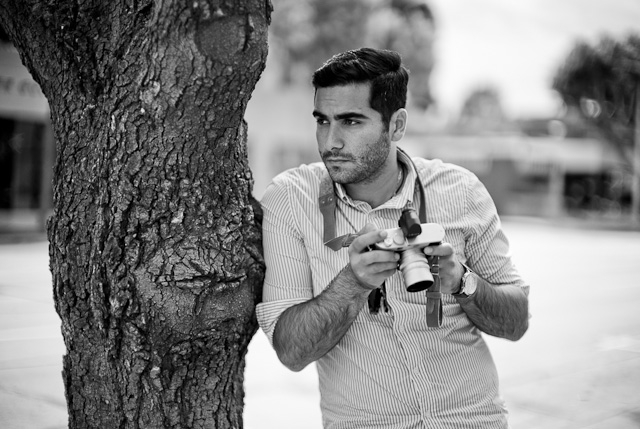
Los Angeles. Leica M 240 with Leica 50mm Noctilux-M ASPH f/0.95. © 2013-2016 Thorsten Overgaard.
65 years later … The Electronic VisoFlex
After 100 years of almost unchanged proportions and usability, now sits a modern electronic attachment on top of the Leica M camera. I can't wait to get a Leica M with a built-in electronic viewfinder and I am sure we will see one such around September 19, 2016 when Photokina in Germany kicks off.
It’s called an Electronic ViewFinder (EVF), or “Electronic VisoFlex” as Leica calls it (with a reference back to the VisoFlex attachment they made in 1951, so the Leica M film cameras with screw-mount lenses had a built-in mirror).
The EVF-2 has turned out to be indispensable for me. I’ve used it a lot, and the only problem I have with it is that it sits on top of the camera and ruins the classic industrial design of the Leica M.
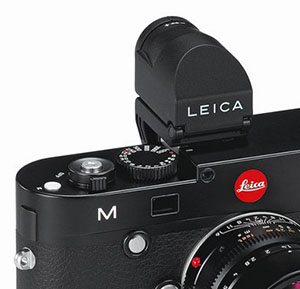
|
|
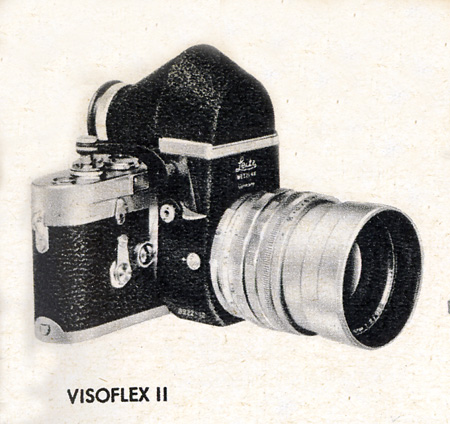 |
Leica Visoflex EVF2 electronic viewfinder.
You can also use the Olympus VF-2 which essentially is the same. |
|
The Leitz VisoFlex came out in 1951 as a way to implement a mirror on a Leica M. The first version exist for screw mount lenses and M mount lenses. |
| |
|
|
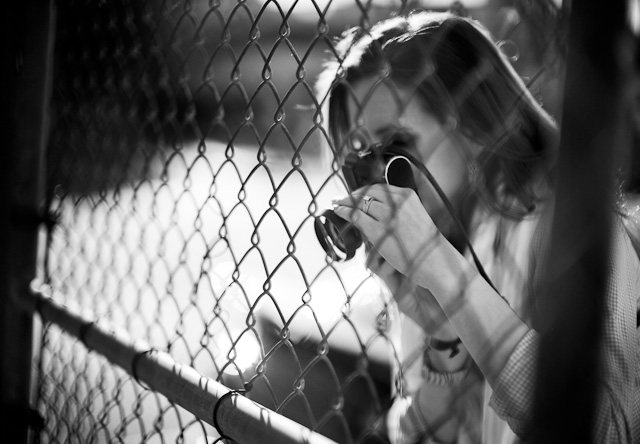
Los Angeles. Leica M 240 with Leica 50mm Noctilux-M ASPH f/0.95. © 2014-2016 Thorsten Overgaard.
| |
|
|
|
|
| |
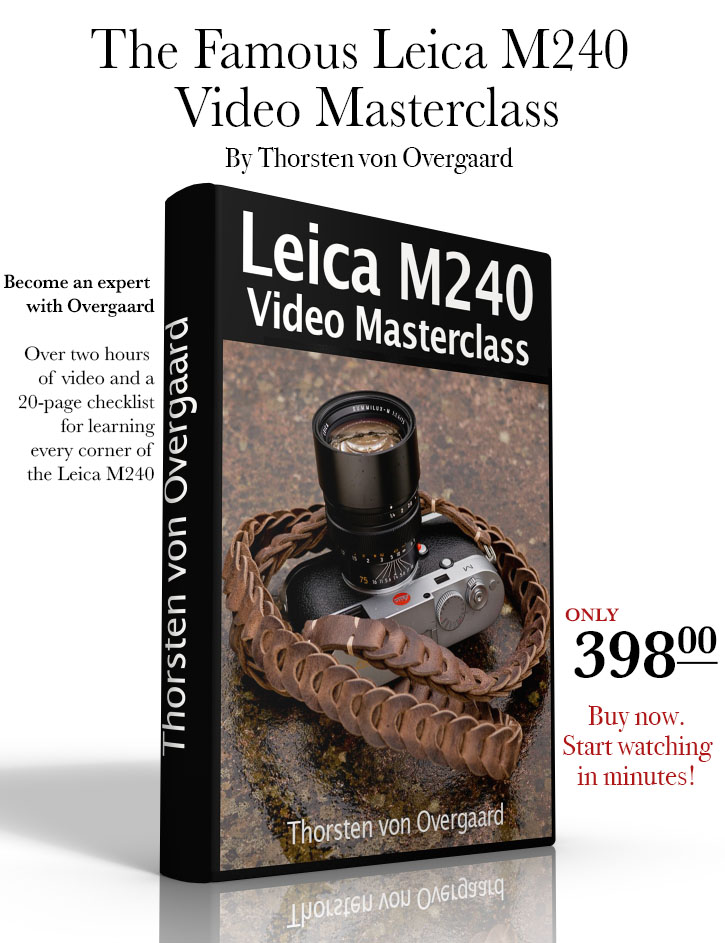 |
|
| |
|
|
|
|
| |
Full Leica M240 Pack:
Video Masterclass
+
Street Photography Masterclass
All about the Leica M240 video instruction masterclass (17 videos)
+ Street photography video masterclass
filmed in New York (11 videos).
+ 8 Bonus videos
+ Styles for Capture One for Leica M240
+ Lightroom Presets. for Leica M240
Normal price $1,192.00
Save 60%
Only $476.00
USE CODE: "ILOVEM240"

Order now. Instant delivery.
100% satisfaction or money back.
Item #1844-1848-0823 |
|
Leica M240
Video Masterclass
Two hours of video class
with Thorsten von Overgaard
+
20-page checklist for learning
every corner of the Leica M240.
For Computer, iPad or smartphone.
More info
Only $398.00

Order now. Instant delivery.
100% satisfaction or money back.
Item #1844-1017 |
|
| |
|
|
|
|
The Polaroid of digital cameras
The EVF allows me to see the image I am about to make very precisely in terms of exposure, sharpness, depth of field and the actual frame I am getting.
Not only that, right after I make the photograph, the EVF-2 also shows me a preview of the photograph. This allows me to see if I got what I wanted: did I get the expression I wanted, did I get the person walking past me, how does the background work and much more.
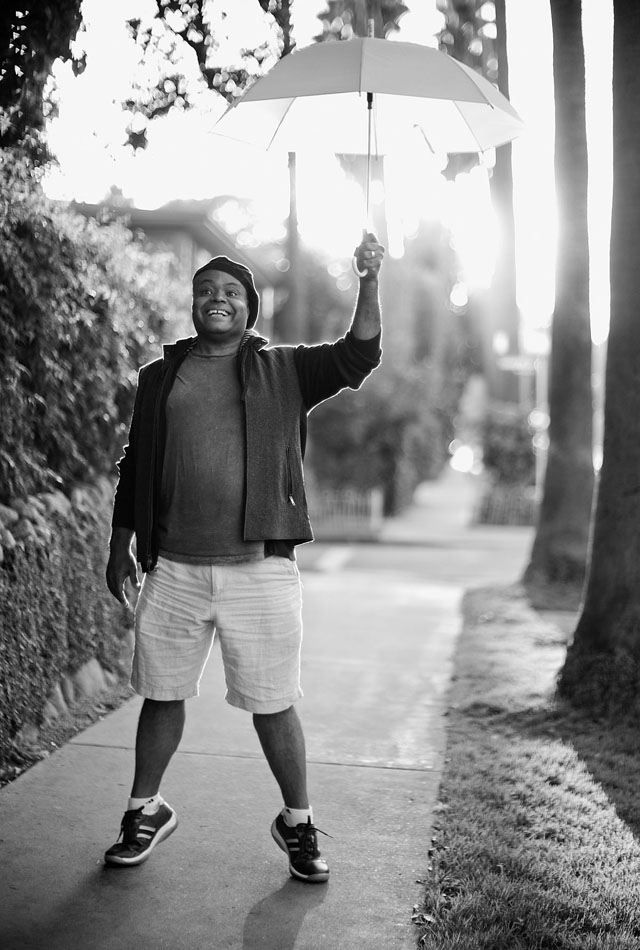
Actor Terence Hines in Los Angeles. © 2014-2016 Thorsten Overgaard.
It's very much like what a Polaroid test-photo did in the old days. Those Polaroid test photos were made to make sure everything was in focus, that the exposure was correct, that the composition worked and that every detail was taken care of. It took a lot of time, effort and money but it was the way to do a professional photograph in the studio or on a set not that many years ago when there were only film cameras.
With the Leica M 240 and the EVF-2, it’s all back, implemented at no cost and as a constant quality control of what you do.
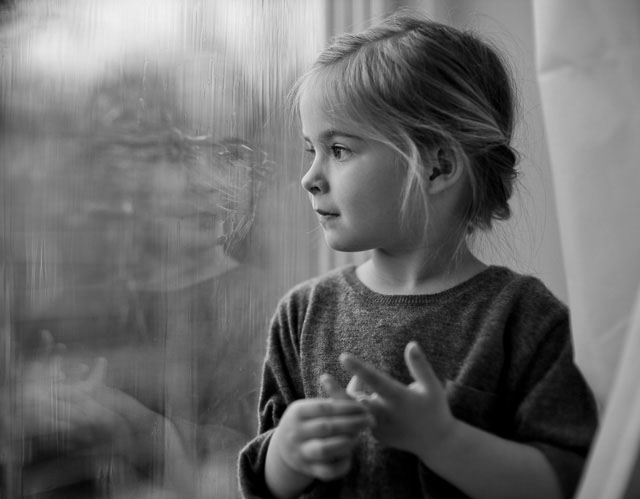
Leica M 240 with Leica 50mm Noctilux-M ASPH f/0.95. © 2016 Thorsten Overgaard.
Ansel Adams and (pre-) visualization
Ansel Adams realized when he was 25 years that he had to learn to visualizethe final print already when working with the camera in the field.
His visualization must be understood as two levels of prediction:
One is to have the knowledge and ability to predict how the current scene will look in a negative and what can be done in the darkroom for the final print with that negative.
The second level of prevision is the ability to see how it will technically work; and then make an artistic visualization of how to get the emotional impact you want (with the implied changes of the "correct" technical result).
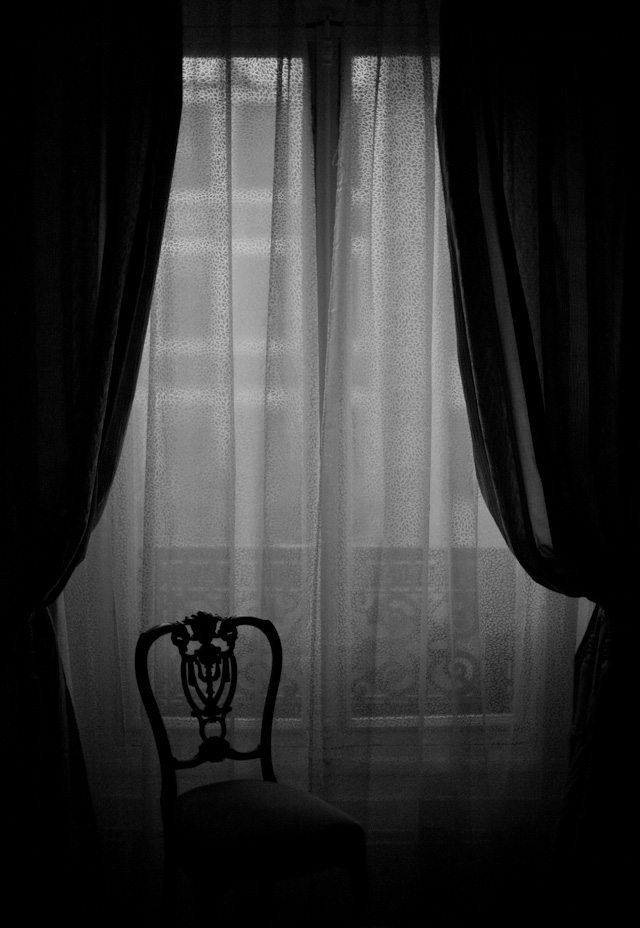
Paris. Leica M 240 with Leica 50mm Noctilux-M ASPH f/0.95. © 2013-2016 Thorsten Overgaard.
You start out with proper focus, correct exposure and correct white balance. That’s the visualization that require technical skills. Then you decide that you want to colors to be much warmer, the focus to be shallower, and the sky to be rally dark. That’s the (pre-)visualization that requires technical skills and an idea how to depart from that (and technical skills on how to get to that result).

Sydney. Leica M 240 with Leica 50mm Noctilux-M ASPH f/0.95. © 2013-2016 Thorsten Overgaard.
The EVF gives you a great deal of prevision of the final result, and I’m sure Ansel Adams would have loved to be able to see the prevision already when hanging on some mountain side.
You put on a red filter and already before you press the shutter, you can actually see a prevision of how it will look. It’s actually pretty amazing. Maybe not as sportsman-like as not knowing, but who would blame you if the final photograph looks amazing?
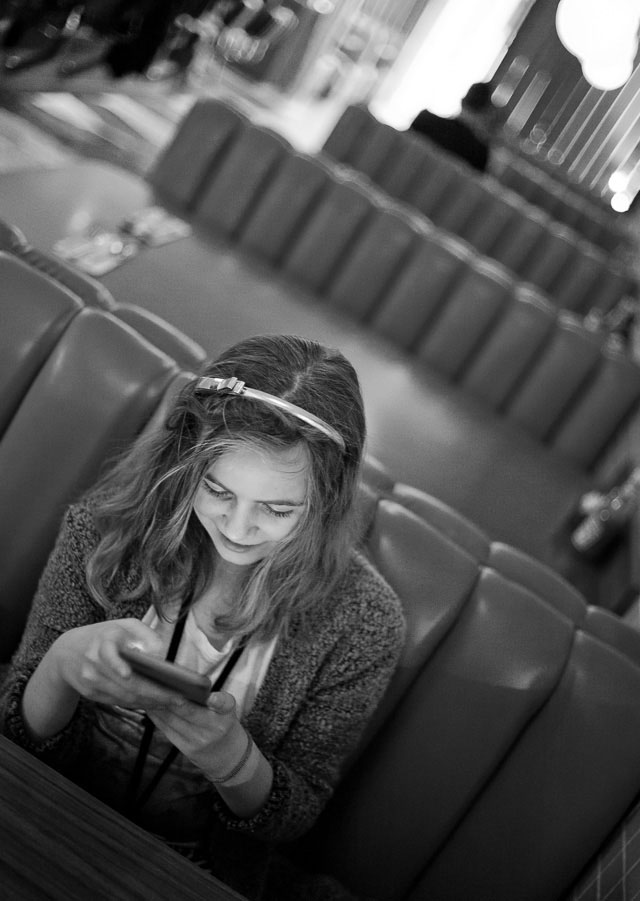
Los Angeles. Leica M 240 with Leica 50mm Noctilux-M ASPH f/0.95. © 2016 Thorsten Overgaard.
| |
|
|
|
|
| |
Buy the new eBook
"The Freedom of Photographic Expression"
by Thorsten Overgaard |
|
| |
|
|
|
|
| |
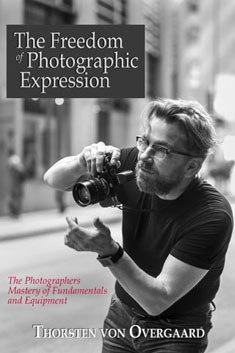
"The Freedom of
Photographic Expression"
eBook for computer, Kindle and iPad
Released March 2024.
First editon: October 2016
Now 303 pages. |
|
In this easy-to-read and easy-to-apply eBook,
Thorsten Overgaard takes beginners and experienced photographers through the basics of controlling the light and the camera.
This book covers the technical side of photography from beginners level to semi-pro, features a number of photographs by Thorsten Overgaard and chapters on his philosophy on photography.
Only $248.00
| |
|
|
| |
Buy Now

Instant Delivery. |
|
| |
|
|

|
|
| |
"I've bought the new book - made a start reading it - it is really interesting.
I know it’s basic at the beginning but it isn't written in a patronizing way. I have been taking photographs for many years and have been lucky enough to be paid to take them for the last seven years; but it's always good to be taken back to the start"
P. S. (UK) |
|
"Really enjoy your writing and teaching"
D. K. (USA)
"I love your insights on photography."
D.B. (USA)
★
★
★
★
★
★ |
|
|
The Leica EVF takes a swivel
One of the things you get used to with the EVF-2 is that the EVF swivel 45 degree up so you can in fact "look down" in the EVF-2 while the camera records what is in front of it.
I've seen people do that for street photography as it gives a good level to work from, with that added feature that people don't notice you are taking pictures.
The reson people don't notice you is that you don't have eye contact with them and doesn't seem to have any attention on them. This can be done also by simply being begind your camera and not make eye contact with people. But that's another story.
You get so used to this feature that when you get to use the Leica SL or Leica Q that doesn't have this feature, you miss it.
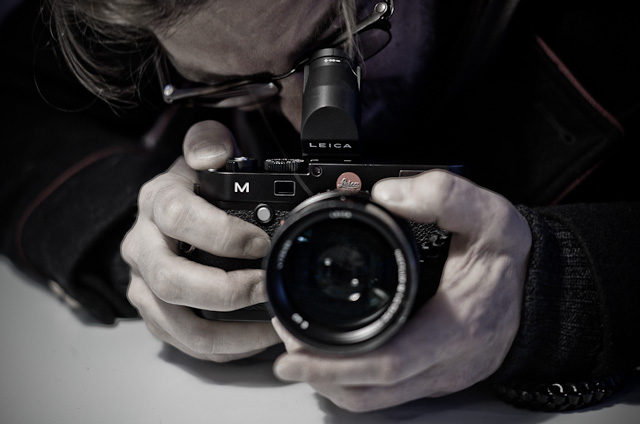
The Leice EVF can take a 45 degree swivel up.
"Not like the old days"
They have a saying in the England that "nothing is like the old days" and that is one slogan I think many Leica users would applaud and agree with. At least ‘til they have tried the EVF-2 electronic viewfinder.
I have had people in my workshops who have given up Leica M because they couldn't focus. Generally, there has been an idea amongst Leica users that the EVF-2 just isn’t a real Leica, so that prevented some from getting to try one. They simply hadn’t heard about it.
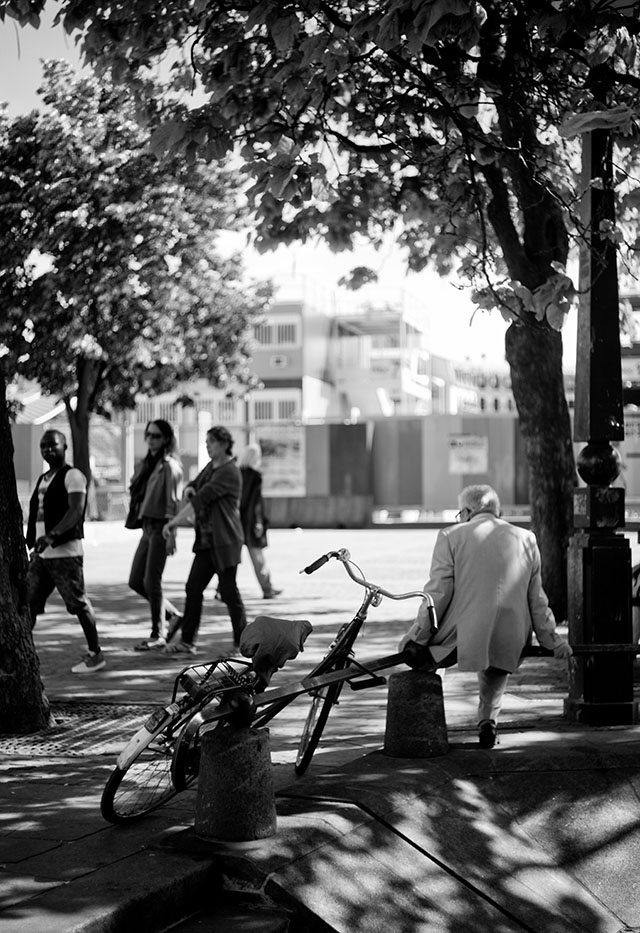
Never to old to hang out on street corners. Paris, May 2014. Leica M 240 with Leica 50mm Summicron-M f/2.0 II. © 2014-2016 Thorsten Overgaard.
The blind leading the blind
I met one guy who had bought the Leica M and some lenses, but when he felt he couldn’t get the focus right, he sold it all and bought a professional Nikon with lenses. When he attended my workshop a couple of years ago, his astonishment that the EVF-2 existed was great, and it solved all the problems he had. So he sold the Nikon gear and bought a Leica M again, this time with an EVF.
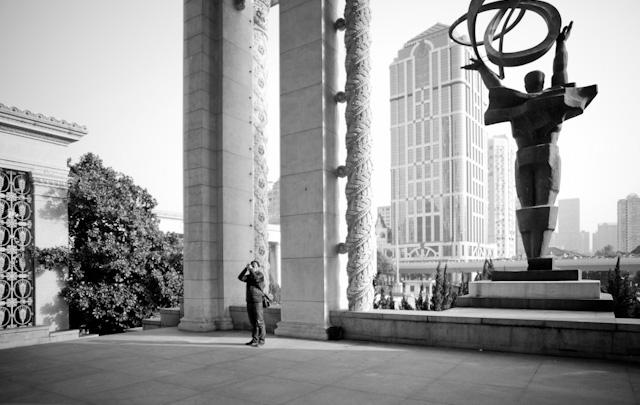
Shanghai. Leica M 240 with Leica 21mm Summilux-M ASPH f/1.4. © 2013-2016 Thorsten Overgaard.
It’s not impossible to focus the rangefinder, but if you think it’s too difficult, there is nothing wrong with using an EVF.
I mean, look around. If you don’t see the EVF coming in as the future, you’d better look again. The EVF is what enables them to make a mirrorless Hasselblad. It’s what makes it possible for many professional photographers to use a smaller camera most of the time (and only a dSLR for very specific things).
The rangefinder is charming. Yes, but it’s not the only way to do it.
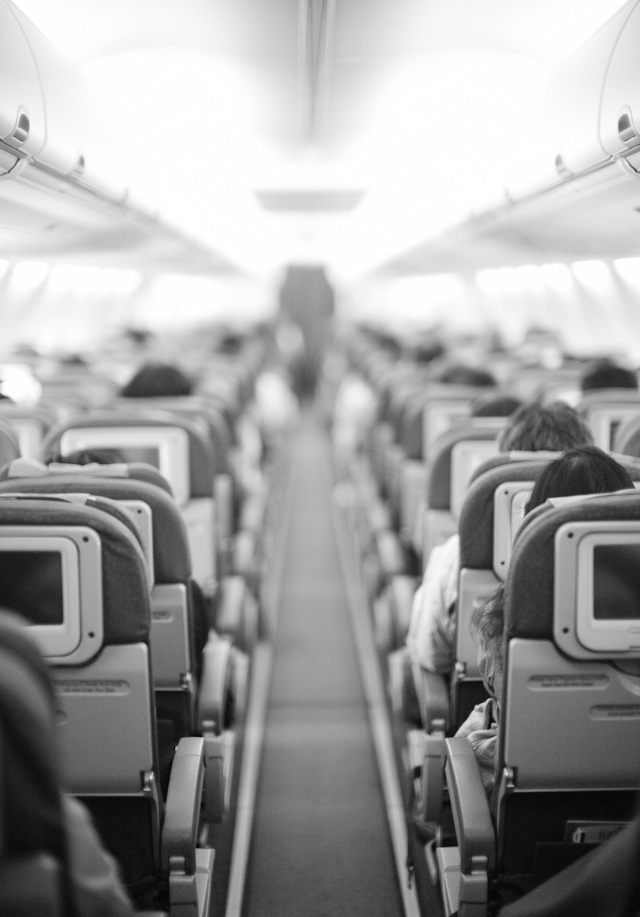
Emirates from Jakarta to Sydney. Leica M 240 with Leica 50mm Noctilux-M ASPH f/0.95. © 2013-2016 Thorsten Overgaard.
The glass plate photography is back
Even when glass plates were replaced by the much more economical and handy film plates, Ansel Adams and others would still use glass plates. Considering that a landscape photographer back then in the 1930’s had to carry a large wooden camera with large lenses and fragile glass plates up and down mountains, it would have been so much easier to just go with film.
Even in the 1960’s you could order glass plates for large format cameras. It wasn’t easy to get, but they were available for the patient and ambitious photographer.
The point in using glass plates was (and is) that the focal plane is very precise. The film may move or bend slightly in a camera, but the glass plate stays 100% plane.
With digital sensors in the first digital rangefinder (the Leica M8 that came out on September 14, 2006) we achieved unheard-of precision in a 35mm camera.

Actor Terence Hines. Leica M 240 with Leica 50mm APO-Summicron-M ASPH f/2.0. This photo is with available soft light from the windows covered with white curtails. You can read about in The Story Behind That Picture "The Hollywood Murder", my photo session with actor Terence Hines. © 2014-2016 Thorsten Overgaard.
To begin with – let’s be frank about this – it created some new problems. Suddenly we discovered that we weren’t as great at taking sharp photographs as we previously thought.
The digital sensor was merciless and showed each little departure from exact focus. It was easy to tell because in a matter of minutes we could now import the photograph to the computer and zoom in on each little detail.
We also learned that the Depth of Field scale on the lenses wasn’t made for digital sensors. When the DOF scale said the lens would perform acceptable focus from 3 feet to 5 feet, we learned that this was in the film days. In the digital age, the acceptable sharpness was reduced.
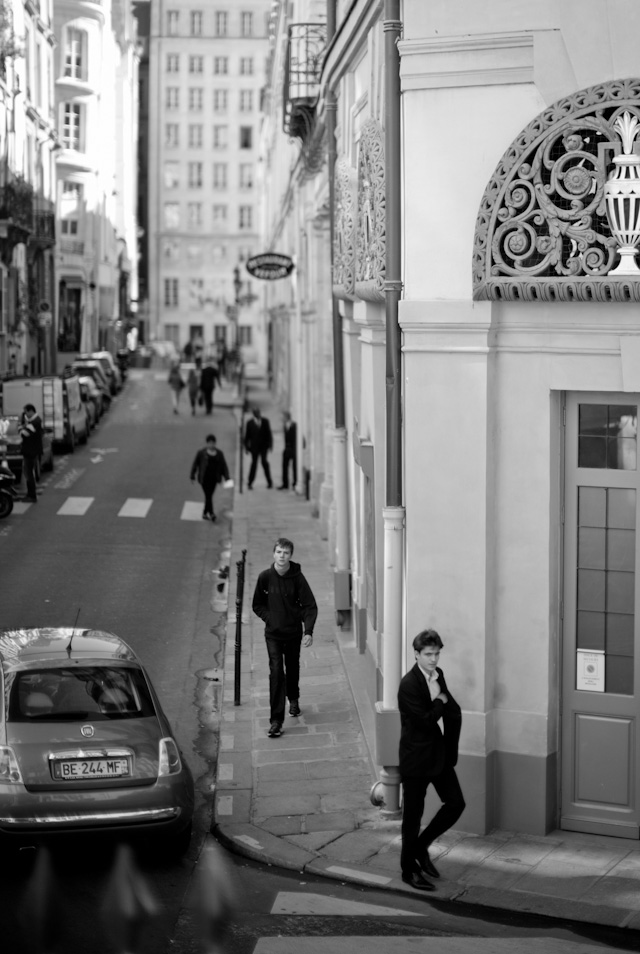
Men in black in Rue de Beaujolais, Paris. Leica M 240 with Leica 50mm APO-Summicron-M ASPH f/2.0. © 2013-2016 Thorsten Overgaard.
Heck, the whole idea of what acceptable sharpness was, suddenly took a quantum leap in a disappointing direction.
With the EVF-2 electronic viewfinder that reads directly from the digital sensor, we finally have a tool that is suitable for achieving the accuracy we want.
So let’s look at how it works.

The ZOO in Los Angeles. Leica M 240 with Leica 90mm APO-Summicron-M ASPH f/2.0. © 2016 Thorsten Overgaard.
Focus Aid and Focus Peaking
The Leica M 240 offers Focus Aid (zooming in on the image) and Focus Peaking (colored outlines of sharp edges) to help you focus.
The colored lines require contrast and your image does not always have that. You will fairly quickly train your eye to look at the actual image and see when it is sharp. You don't a need red outlines to see when something is in focus.
Red outline isn't always sharp
You should know that the red outlines, when created by contrast, simply means there is a high contrast edge. This is not the same as optimum focus.
Expscially with wide angle lenses, the range of "acceptable focus" or "red outline" is much wider than for tele lenses, so particularity with wide angle lenses, you may find that what had a red outline, is in fact not in focus in the final image.
With a Noctilux at f/0.95, the focus is so narrow that often, when you see the red outline, it is in fact in focus.
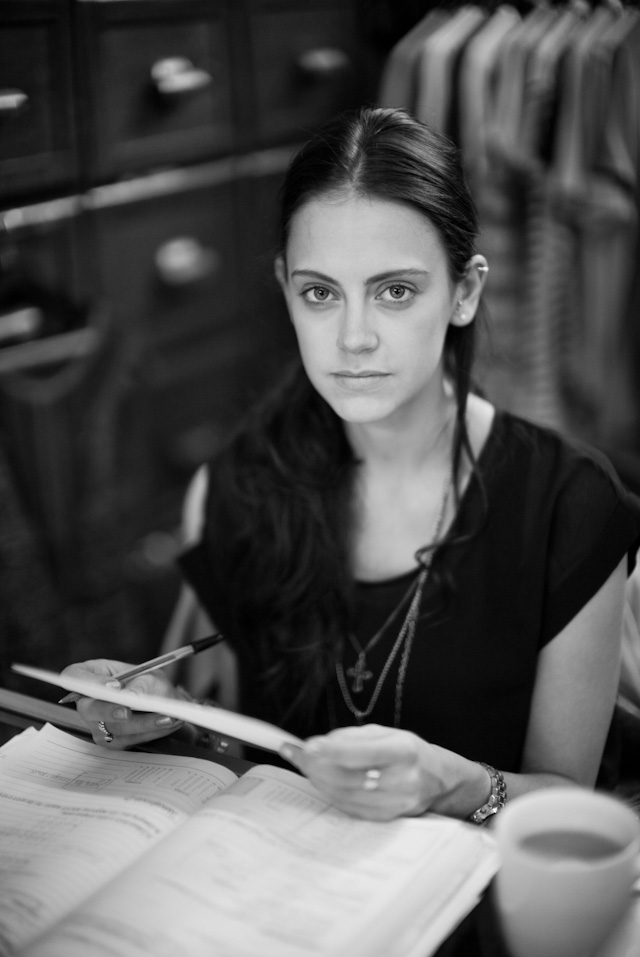
The office of fashion designer Bolongaro Trevor. Leica M 240 with Leica 50mm Noctilux-M ASPH f/0.95. © 2013-2016 Thorsten Overgaard.
It’s a question I constantly get, “I don’t see the red lines”, and that’s the explanation. Sometimes you just don’t get them because there are no edges of hard contrast in the image.
It’s a bad habit from automatic cameras to wait for a green light or beep to tell you everything is OK to shoot. But with manual focus you never get any acknowledgement from the camera. The red outline is a help you sometimes will get, but mostly don’t wait for it. Just look at the image in the EVF. When it looks sharp, it’s sharp.
Another thing that makes the lines hard to see is the fact that they are small. I for one am thankful that the lines are rather discrete, because if one looks through the Sony A7 the red outline is so dramatic it disturbs the composition.

Wedding outside Cafe Les Foudres in Paris. Leica M 240 with Leica 50mm Noctilux-M ASPH f/0.95. © 2013-2016 Thorsten Overgaard.
If you have used the matte screen of an SLR in the past when they were bright and accurate (as in Nikon 3F HP) or the current Leica S, you will know that a complete matte screen without the divided "focusing field" in the middle is more accurate to use than the "focusing field". It's just a matter of habit and trust in what you see rather than what some electronics tell you.
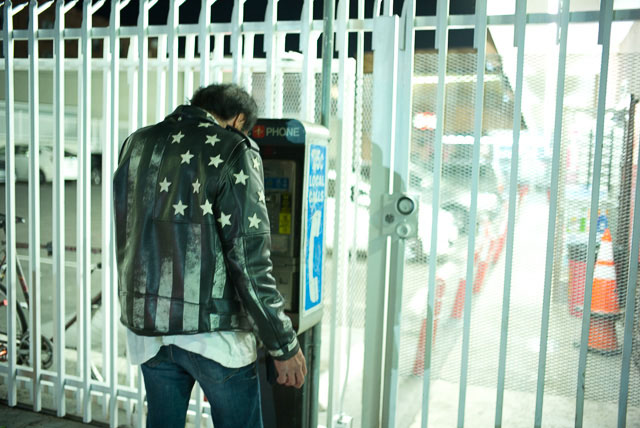
Stars and stripes in Los Angeles. Leica M 240 with Leica 35mm Summilux-M f/1.4 AA. © 2016 Thorsten Overgaard.
Setting up the Leica M for Focus Aid (zoom to focus)
When the Leica M comes from the factory, it’s set up with Manual Focus Aid. That means you have to press the front button on the camera to turn it on. Unfortunately, the factory setting also means that the Focus Aid doesn’t zoom in on the image.
Obviously, you don’t see the point in focus aid if it doesn’t do anything. But when you have activated Focus Aid (by pressing the front button), you can change the zoom that Focus Aid is supposed to provide by turning the thumb wheel and choosing 1X, 5X or 10X enlargement of the image.
Aha! Now you see what it does. It zooms in 5X or 10X on the image so you can see when it's in focus!

Playing. Leica M 240 with Leica Cine 100mm Summicron-C f/2.0. © 2016 Thorsten Overgaard.
In the Menu of the camera you should immediately change the Focus Aid from Manual to Automatic. This will make the camera turn on Focus Aid automatically when you touch the focus ring on the lens.
All Leica M lenses, even the old screw mount lenses from the 1930’s, activates the focus in the camera. There’s a metal ring inside the lens that touches and moves the focus mechanism in the camera.
All M lenses then work with Automatic Focus Aid. Only Leica R lenses, Leica Cine lenses and other brand lenses mounted on the Leica M requires you to press the Manual Focus Aid button on the front.
The Focus Aid turns off when you touch the shutter release slightly. So keep you finger off the shutter release when you focus. Then when you touch the shutter release, the EVF-2 goes back to full frame so you can frame the photo and take the it.
Focus Peaking explained (red outline)
| |
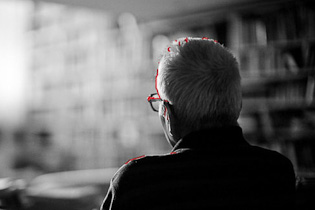 |
| |
The red outline of red is not always easy to see. |
| |
|
Focus Peaking is the outlines on the screen or inside the EVF-2 of where the image has high contrast (sharpness). If there is no high contrast, there will be no Focus Peaking visible.
In the Leica M 240 the outlines can be set to Red, Blue or Green. I prefer Red as it is easily visible in my black & white image preview. Blue or Green might work better for others, especially if the image preview is in color.

London. Leica M 240 with Leica 50mm APO-Summicron-M ASPH f/2.0. © 2015-2016 Thorsten Overgaard.
Black & White Preview explained
In the beginning, the Leica M 240 offered you the possibility to photograph both DNG and JPG at the same time.
Not much reason to photograph JPG pictures in colors when you photograph DNG. The colors and all of the DNG are so much better when you work them over a little in Lightroom.
So I would set the JPG to black & white so as to get the DNG in colors (it is always on color as it’s the full raw data of all that the sensor records) and the JPG in black and white. When editing in Lightroom, I would see the same photograph in color and black and white and it would be very easy to see which worked best in what, or if both the color and the black & white editions worked well.
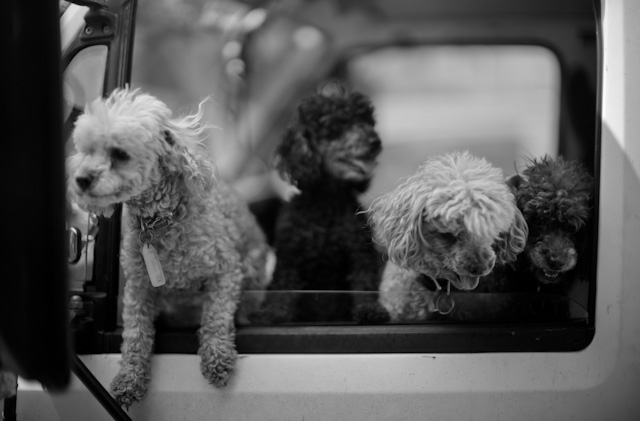
Happy friends in Sydney. Leica M 240 with Leica 50mm Noctilux-M ASPH f/0.95. © 2013-2016 Thorsten Overgaard.
This setting also meant that the preview in the EVF-2 would be in black and white only. I prefer that because the colors aren’t that accurate or important to preview. The exposure is, and that is actually easier to preview in black & white than colors. And on top of that, the red outline (when it is there) is easier to spot when the rest of the preview is in black & white.
With a later firmware update Leica made it so you can photograph DNG only, but if you set the camera to black & white preview in the Menu under Film Mode, the preview is black & white without you ever have to make or download a JPG file.
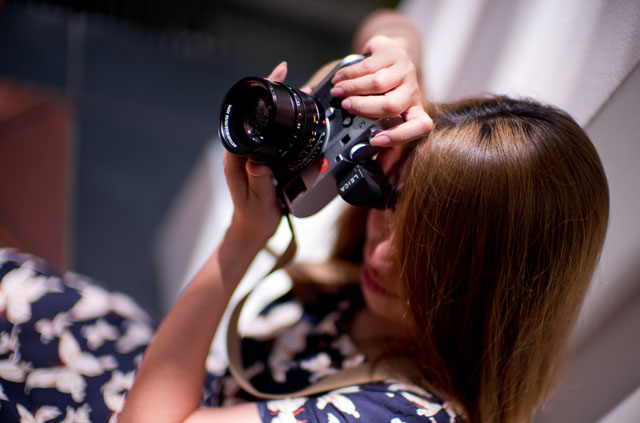
Alexis Khoo working her Leica in Singapore. Leica M 240 with Leica 50mm Noctilux-M ASPH f/0.95. © 2015-2016 Thorsten Overgaard.
Focus Aid explained (zoom to focus)
Focus Aid is the button on front of the Leica M 240. You press the button and there will be a preview of the focus. While focusing with Focus Aid you can scroll the thumb wheel to choose between 1X, 5X or 10X enlargement.
I recommend 5X as that is enlarged enough to see focus. 10X may be helpful to see minor details for example when using a 21mm super wide lens. But mainly 5X is the setting of enlargement.
The menu should be set to Automatic as then you don't have to press the button on the front of the camera anymore. The focus mechanism on Leica M lenses automatically activates the focus aid. When you press the shutter release gently the EVF-2 goes from 5X enlargement to 1X so you see the full image you are composing. So don't press the shutter release at the same time as the Automatic Focus Aid then is not showing.
The way to use Focus Aid, explained
The way to use it is 1) turn the focus barrel on the lens and focus on the main subject in the image, then 2) press the shutter release gently to get the full image (which now is in focus) so as to compose the image and cropping.
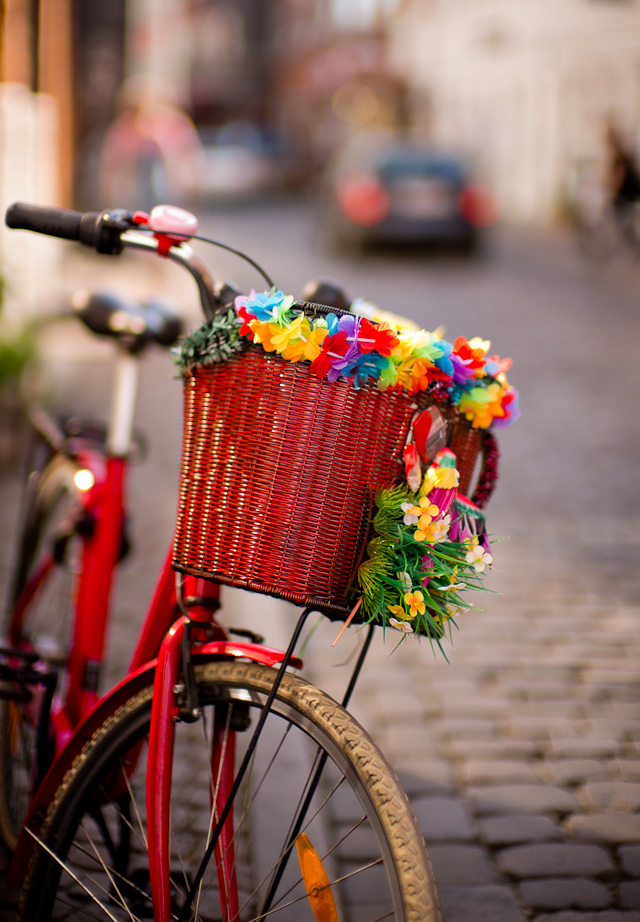
A bicycle in my hometown Aarhus, Denmark. Leica M 240 with Leica 50mm Noctilux-M ASPH f/0.95. © 2014-2016 Thorsten Overgaard.
EVF doesn't care if the focusing mechanism is out of focus
One of the other advantages of the Leica EVF-2 is that when it reads the image from the digital sensor, the rangefinder mechanism can be out of adjustment and it doesn’t influence the focusing.
I got so used to the Leica M 240 with the EVF-2 that this became my preferred way of focusing for a long time.
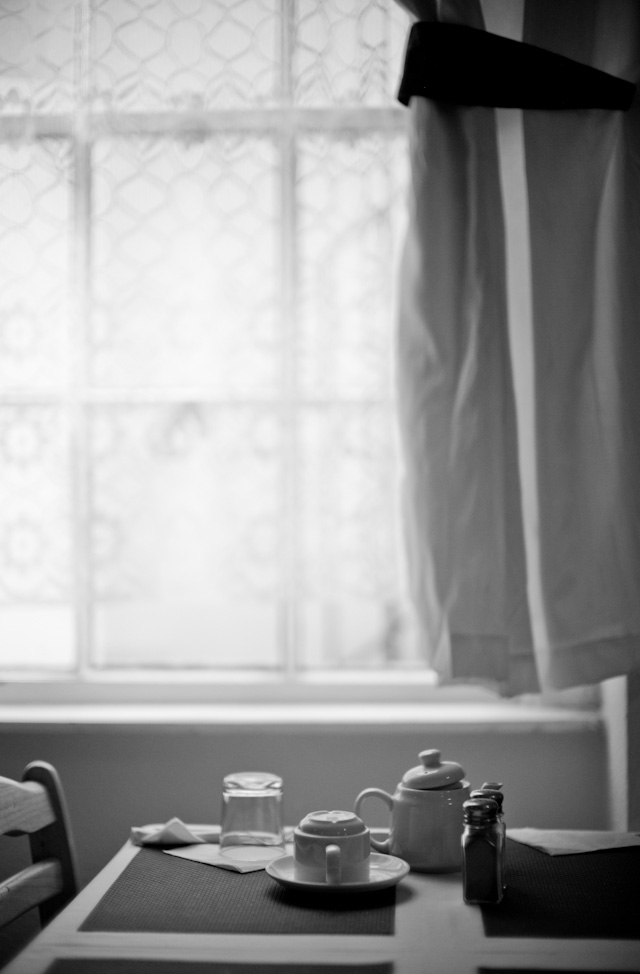
Morning tea in London. Leica M 240 with Leica 50mm Noctilux-M ASPH f/0.95. © 2013-2016 Thorsten Overgaard.
Using the new camera back in March 2013 and giving it a rough time, I managed to displace the rangefinder mechanism. As the EVF isn't susceptible to being displaced, it was an easy choice to use the EVF.
For me it meant that during the first three months of using the new Leica M 240 I had to use the EVF, as my rangefinder mechanism had to go back to Leica in Wetzlar to get adjusted. Then when it was adjusted, I had gotten so used to the EVF-2 that I kept using it.
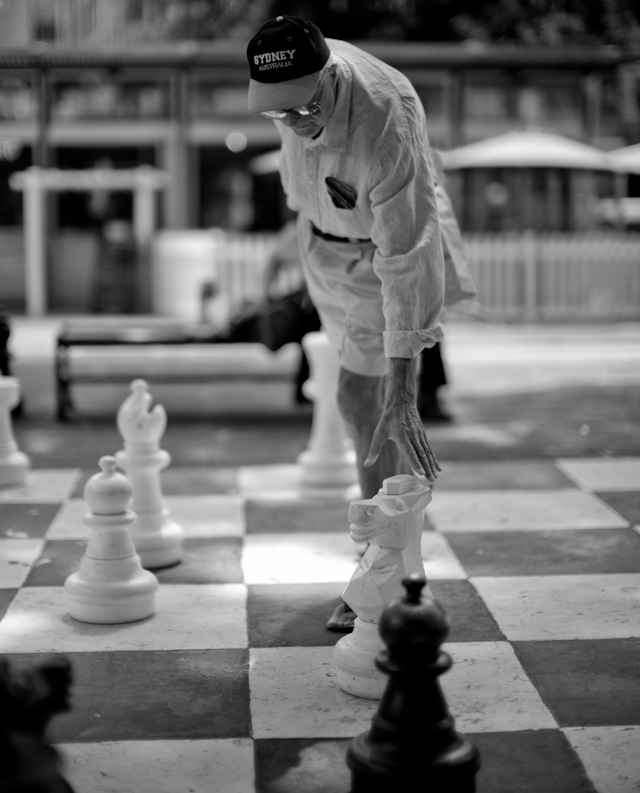
Chess in Sydney. Leica M 240 with Leica 50mm Noctilux-M ASPH f/0.95. © 2013-2016 Thorsten Overgaard.
The EVF always reads the image from the sensor, and if that one if in focus, the final image is also. I'm stipulating this as a fact as I have had a few questions coming up from people who had trouble focusing their Leica M 240 with EVF and thought the EVF was wrong.
It is simply not possible that the focus is off when it is in focus in the EVF. Period.
But what is possible, is the same phenomena as with the rangefinder: you are sure that you’ve nailed the focus, but then when you get back to the computer, there is back focus (the focus sits a little further back than what you focused at).

Banksey in London (Clipstone Street). Leica M 240 with Leitz 50mm Summicron-M f/2.0 "rigid" Series II. © 2013-2016 Thorsten Overgaard.
In the rangefinder mechanism it is possible that the rangefinder needs adjustment. When it does, it’s mostly back focus and rarely front focus (the focus sits a little in front of what you focused at).
What happens when you focus and then photograph somebody or something, is that they move or you move. That’s why you will still see back focus in some photos made with the EVF-2.

Shanghai. Leica M 240 with Leica 21mm Summilux-M ASPH f/1.4. © 2013-2016 Thorsten Overgaard.
Focusing a Leica M with EVF-2 digital viewfinder
The EVF-2 is a somewhat alien instrument and may feel wrong on a Leica M. But you must get over that, and frankly, if you haven't tried the EVF-2, you are missing out.
As simple as that.
The hurdle with the EVF-2 is that it is terribly ugly and that it is slow. When I used it all the time for the first three months back when I got the first Leica M 240, I simply got used to the rhythm of the EVF-2.

Tokyo. Leica M 240 with Leica 50mm Noctilux-M ASPH f/0.95. © 2013-2016 Thorsten Overgaard.
A couple of years later I decided that I wanted to use the Leica 50mm APO exclusively for a couple of months to see if I could increase my affinity for this lens.
It’s far from as sensitive to focusing precision as the Leica 50mm Noctilux-M ASPH f/0.95 that I use most of the time. So I decided to take off the EVF-2 and use the rangefinder.
The smaller size of the 50mm APO invited to simplify my setup, and I really liked it. I liked it so much that when I put on the Leica 50mm Noctilux-M ASPH f/0.95 again and used its razor-thin focus, I kept the EVF-2 off the camera.
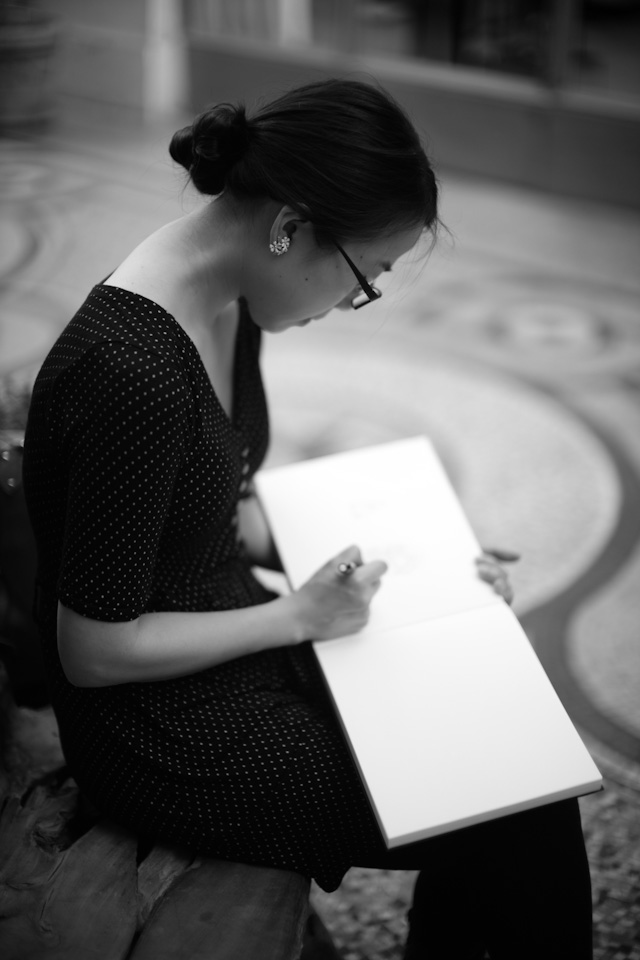
Paris. Leica M 240 with Leica 50mm Noctilux-M ASPH f/0.95. © 2013-2016 Thorsten Overgaard.
Built-in diopter adjustment
The EVF-2 has built-in diopter so you can adjust for your eyesight. The way to set it is to look into the EVF and when the text is crisp and clear, the focus is ideal.
The diopter ring tends to get loose and turn by itself when you walk with the camera. I’ve solved this by putting a piece of isolating tape under it so it stays where I want it.
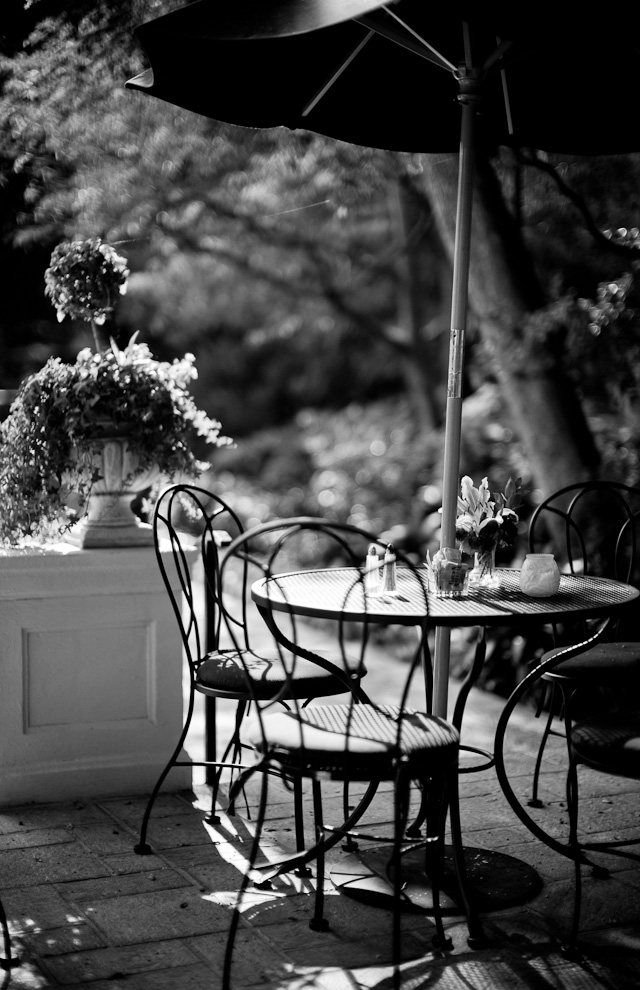
The garden 8:00 AM at The Manor Hotel (Chateau Elysee) in Hollywood. This is my office in the morning when in Los Angeles. Did you notice where the focus is ... and did it matter? Leica M 240 with Leica 50mm Noctilux-M ASPH f/0.95. © 2014-2016 Thorsten Overgaard.
Limited time offer for my readers from Serge Ramelli:
“I can’t focus without the EVF”
Using the EVF-2 has the back side that you lose confidence that you can focus without it. When in fact, you can focus with the rangefinder, and it’s actually much easier than you thought.
You don’t need the EVF-2. Almost 100 years of Leica camera models without it document that it isn’t necessary to use the EVF.
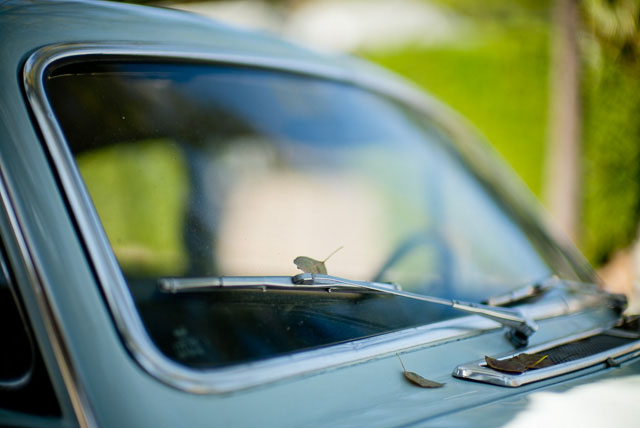
The car. Leica M 240 with Leica 50mm Noctilux-M ASPH f/0.95. © 2016 Thorsten Overgaard.
“I can’t stand the EVF-2”
When I finally put on the EVF-2 again, I was surprised how slow it was. The sound of the shutter becomes sticky and slow. The reason for this is that when you use Live View, the shutter curtain goes up when you turn the camera on. It stays up, so when you take a photograph, there is a slight delay (and some extra mechanical noise) because the shutter curtain first has to close, then open to take the photo, close again when the exposure is over, and then open again so the Live View works.
This is a lot of movement and a lot of unfamiliar noise compared to a traditional Leica M.
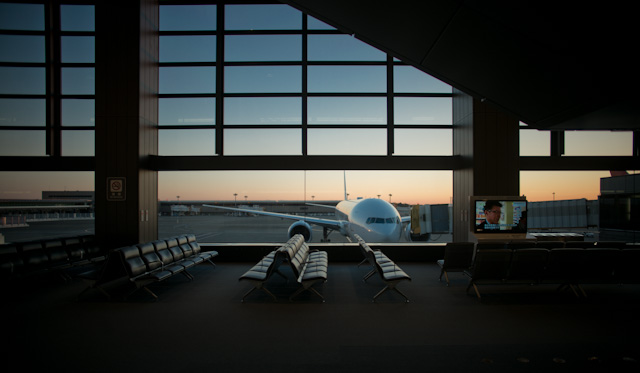
Nirata Airport, Tokyo. Leica M 240 with Leica 21mm Summilux-M ASPH f/1.4. © 2013-2016 Thorsten Overgaard.
Also, the EVF-2 is set up so you see a one second preview of the photo you just took. You can turn off the preview in the Menu, but then you still will be getting a 1 second blackout. So you might as well set preview to 1 second in the menu. Better looking at something for 1 second than nothing!
If you take a burst (series) of photographs, you see the last photograph in the burst for 1 second in the EVF-2.
For us who wear glasses, the rubber ring on the EVF leave smudges of rubber. The Leica SL and Leica Q do the same because it’s soft rubber. The Leica M also has plastic around the rangefinder viewfinder so that it doesn’t scratch the glasses; but that is hard plastic and it doesn’t leave smudges at all. Genius design, actually.
Take a note, Leica Camera AG. No more soft rubber rings around viewfinders.
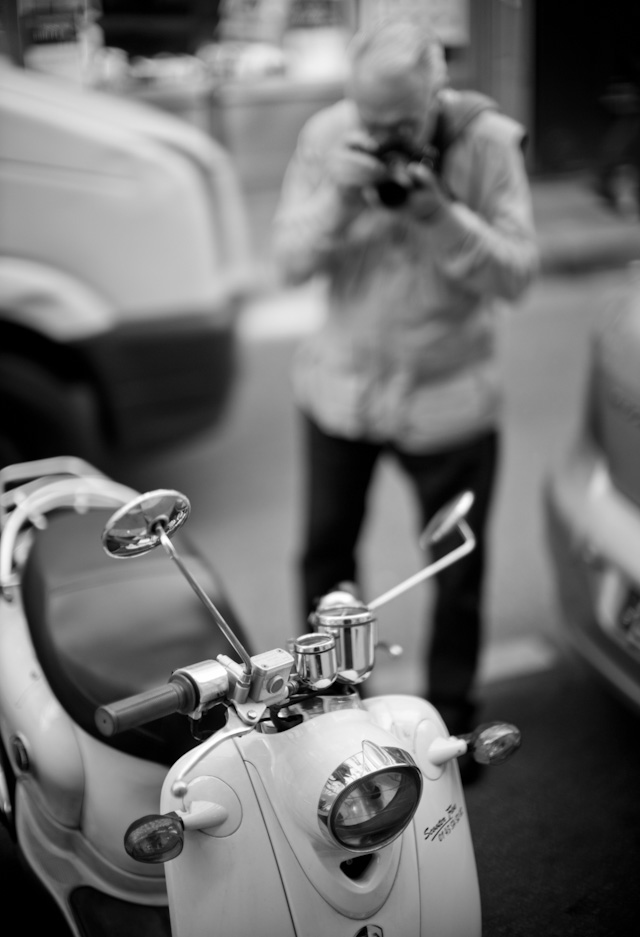
Per Hildebrant working the Leica X-Vario in the Paris Workshop. Leica M 240 with 50mm Noctilux-M ASPH f/0.95. © 2013-2016 Thorsten Overgaard.
Not to make anybody wrong, it should be pointed out that the EVF is a great tool for anyone who wear glasses to see more of the frame, or actually the whole frame. That is extremely helpful when working with wide angle lenses. Wearing glasses and using the rangefinder in the Leica M, your view is usually limited to a 40mm frame.

Disneyland, California. Leica M 240 with Leica 35mm Summilux-M ASPHERICAL F/1.4 AA. © 2016 Thorsten Overgaard.
When to use the EVF-2
When I do assignments where I need to make sure the focus is accurate, I will use the EVF-2.
I sort of like the freedom and speed of the rangefinder, but I also like the precision of the EVF-2.
Often I will photograph some of a photo session with the EVF-2 and a portion without. It’s two different styles.
With the EVF-2 on the camera for portraits I get the precision and can focus on the subject’s eyes with a precision that was unheard of before. But then after I take the photo, I can’t see the subject for 1 second.
I fake it, because the subject doesn’t know. I keep the camera in front of my eyes and wait for the preview to disappear. Then I set the focus again and give the subject the next instruction. They have no idea that I just “lost them” for a second.
Without the EVF-2 I have a real-time view of the subject through the rangefinder all the time and can react to it, take photos when they make a special expression, and I can work much faster. But … with less precision.
Well, actually not less precision. But with less guarantee for the result.
I recently had a Leica M 240 that went out of focus. It seldom happens, so I had been photographing for two days before I noticed that something was actually wrong. There were simply too many weird out-of-focus photographs.
So I checked the focus, and yes, it was off.

Richard Williams in Shanghai. Leica M 240 with 50mm Noctilux-M ASPH f/0.95. © 2013-2016 Thorsten Overgaard.
When I had to photograph an actor a week later, one was out and the other was perfectly aligned. So I used both cameras. One with the EVF-2 and one without. The advantage being that I know that my focus will be perfect with the EVF-2. And I also know I wouldn’t be able to have him fly out again for another photo session if my focus had been off.
So that is the way I use the EVF-2, almost as the Polaroid in the old days. A test then of things to make sure every detail is perfect.

Robin hanging out in LA. Leica M 240 with Leica 50mm APO-Summicron-M ASPH f/2.0.
Overheating and freezing the Leica M
One of the new things that came with the EVF-2 was overheating of the Leica M. The fact that the Live View heats up the sensor and thus the camera’s electronics, resulted in the camera simply freezing.
I found that it would for sure freeze when used in even normal room temperature. If you had a not-too-hot day in New York and you worked with the EVF-2 in the sunshine, the camera would for sure freeze after 5-15 minutes.
With freeze, I mean the camera would stop responding, or the EVF woild lock up in black or white. Or simply just not work.
But even on a very cold day, the Leica M 240 would freeze too.
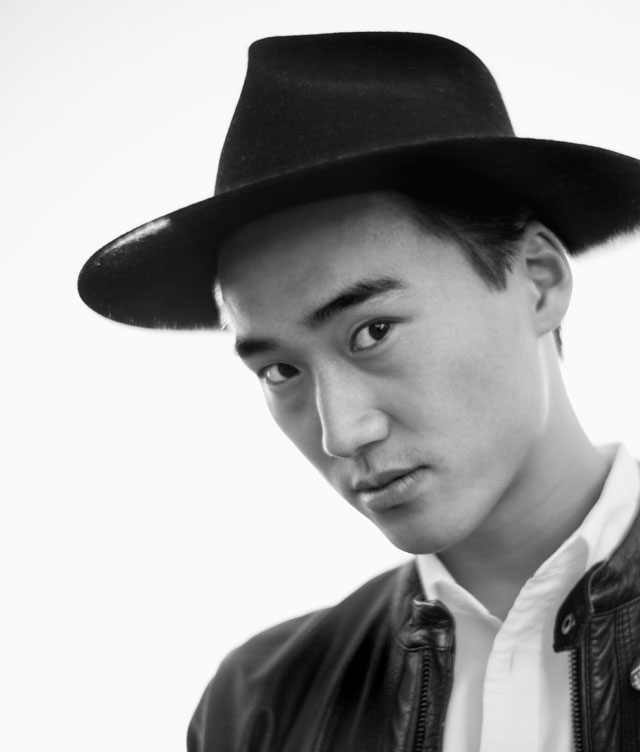
Mr. Grant in Hollywood. Leica M 240 withLeica 50mm Noctilux-M f/1.2. © 2016 Thorsten Overgaard.
Several firmware updates have come about and each promised that this phenomenon would now happen less. Which might be true, but it still happened from time to time, and mostly at the most inconvenient times (while in the middle of a photo session).
With the current firmware, it doesn’t happen that often, if ever. But sometimes the EVF-2 will go completely white or completely black so you can’t see anything.
The remedy for a frozen camera or EVF-2 is to turn off the camera and turn it on again. If that doesn’t remedy it, take out the battery (to reset the camera completely) and then insert the battery again.
I won’t spend much more energy on this issue, as it’s not as troublesome as it was in 2013 when the Leica M 240 came out. It’s annoying when it happens, but it doesn’t happen that often anymore.
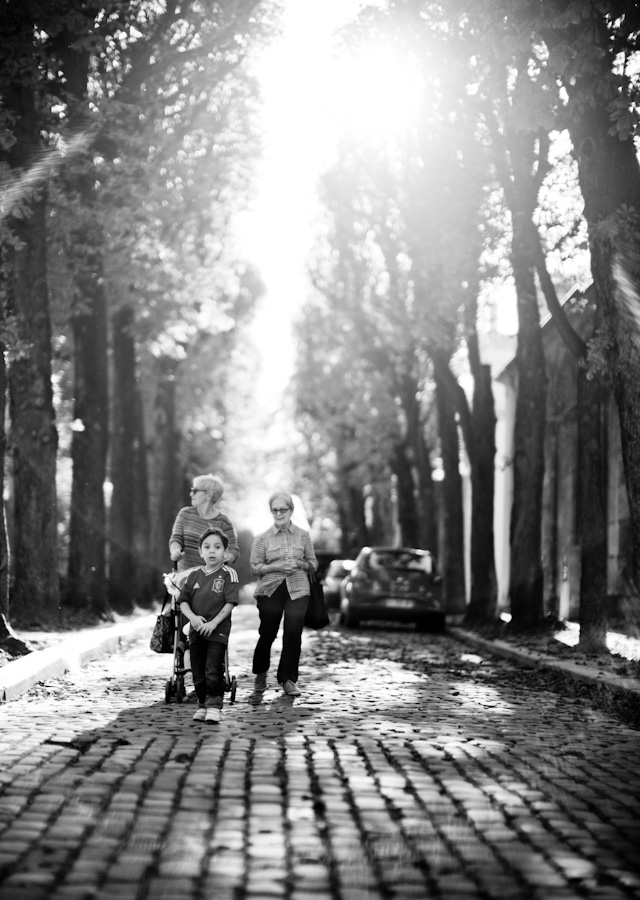
Cimetiere du Pere Lauchaise in Paris. Leica M 240 with 50mm Noctilux-M ASPH f/0.95. © 2013-2016 Thorsten Overgaard.
Cleaning contacts of the EVF-2
The reason for the EVF-2 going black or white and not showing any preview can also be dirt in the connection to the camera. I’ve had people reporting that after they cleaned the contacts with alcohol, the problem disappeared.
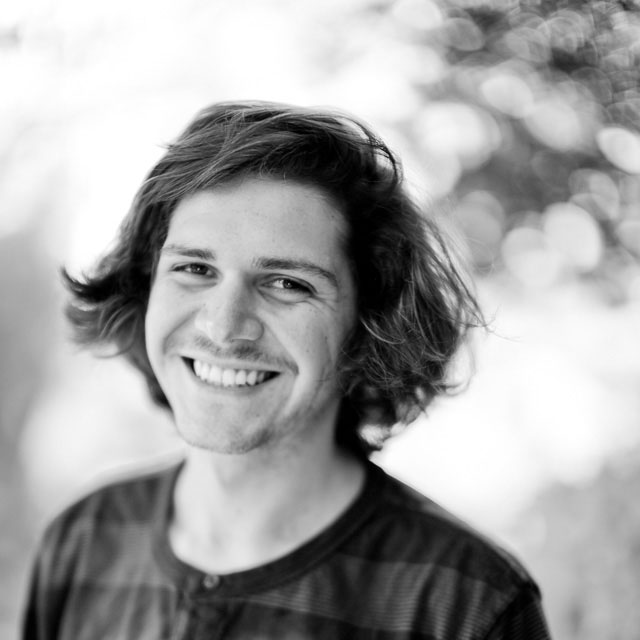
Alex Marton in Hollywood. Leica M 240 with 50mm Noctilux-M ASPH f/0.95. © 2016 Thorsten Overgaard.
Battery usage and the Leica EVF-2
The battery in the Leica M 240 is really powerful. It was made to support Live View and video.
Video is something that drains a lot of power because both the sensor and the buffer (writing the data to the SD-card) is working hard.
If you plan to use a Leica M 240 for video, don’t leave home without three batteries.
For a day out and about with using the EVF-2, the first battery will be drained after 5 hours or so. So always have two batteries.
If you use the rangefinder, the battery will last for more than a day.
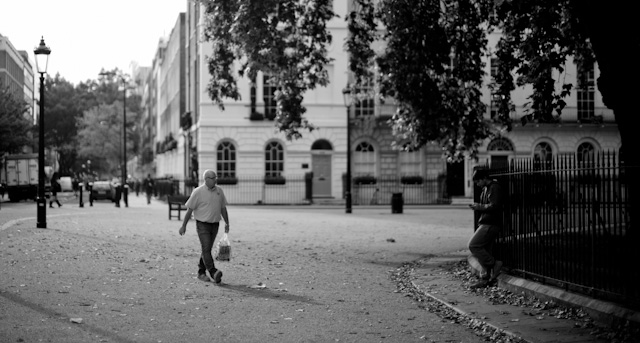
Fitzroy Square in London. Leica M 240 with 50mm Noctilux-M ASPH f/0.95. © 2013-2016 Thorsten Overgaard.
Advanced light metering and battery usage
Be advised that if you have set the light metering in the Leica M 240 to Advanced, this is the same as Live View as the sensor is exposed all the time and the light metering works off the preview of the image. Even if you are not looking at that Live View, it’s active for the light meter. So this, obviously, will eat just as much battery as using the EVF.
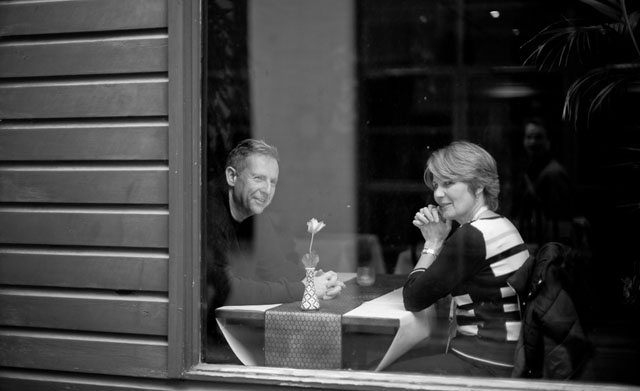
London. Leica M 240 with 50mm Noctilux-M ASPH f/0.95. © 2015-2016 Thorsten Overgaard.
If you haven’t tried it
From my own experience and the many users who I see in my workshops, my estimate would be that 70% of the current Leica M 240 users would buy the Leica M with a built-in electronic viewfinder.
Over time a Leica M with a traditional viewfinder would be an excellent object to own and admire, just as the Leica MP is the perfect film camera with admirable technical and industrial design qualities.
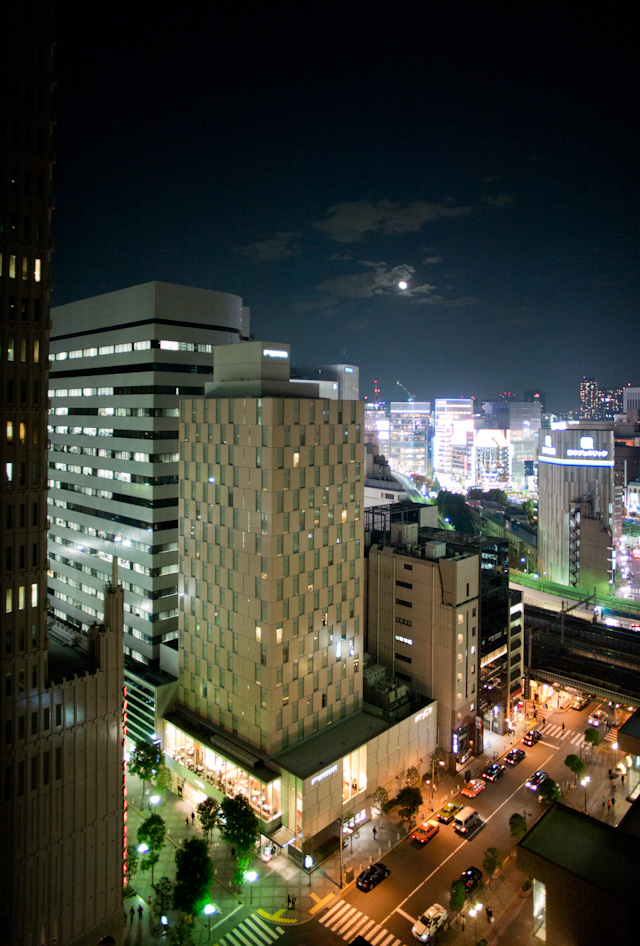
REMM Hotel in Ginza, Tokyo. Leica M 240 with Leica 21mm Summilux-M ASPH f/1.4. © 2014-2016 Thorsten Overgaard.
Next EVF in the next Leica M
The Leica Q and the Leica SL point towards the next EVF we will see in the Leica M 241 (or Leica M 11 we might hope it would be called)
The Leica Q shows how fast and elegant a Leica can be. The EVF in the Leica Q is far ahead of any other EVF’s in similar cameras. The resolution and image quality is really great. It works so there is no black screen between photographs. Part of the reason for this is the computer-power of the buffer and the overall camera operation. It’s just faster. But also, the camera doesn’t have a shutter curtain that has to close and then go up and down to take a photograph.
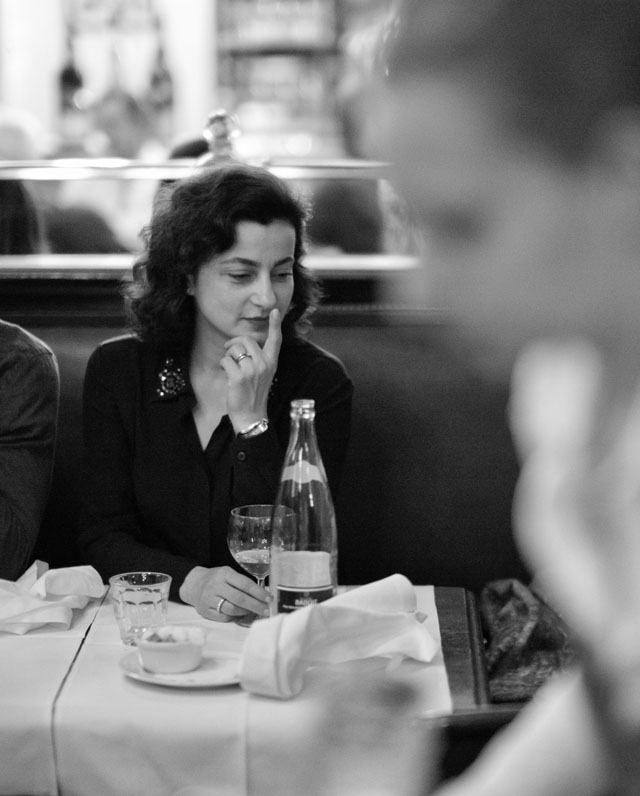
Paris Nights at Restaurant Aux Lyonnais. Leica M 240 with 50mm Noctilux-M ASPH f/0.95. © 2015-2016 Thorsten Overgaard.
Leica SL which is the new Pro camera from Leica has an even better EVF. The optics in front of the EVF is brilliant, wide and bright so you can easily see the screen, which in itself is another step up in image quality.
The Leica SL electronic viewfinder is so precise and so bright that many sold their Leica M 240 and bought a Leica SL to use for their Leica M lenses. Suddenly it was possible to see the image so clearly that, without zooming in, you can comfortably focus a Leica 50mm Noctilux-M ASPH f/0.95 or a Leica tele lens.
The Leica SL doesn’t have a shutter either, so a much faster, almost instant, operation, and no “blackout” between photographs.
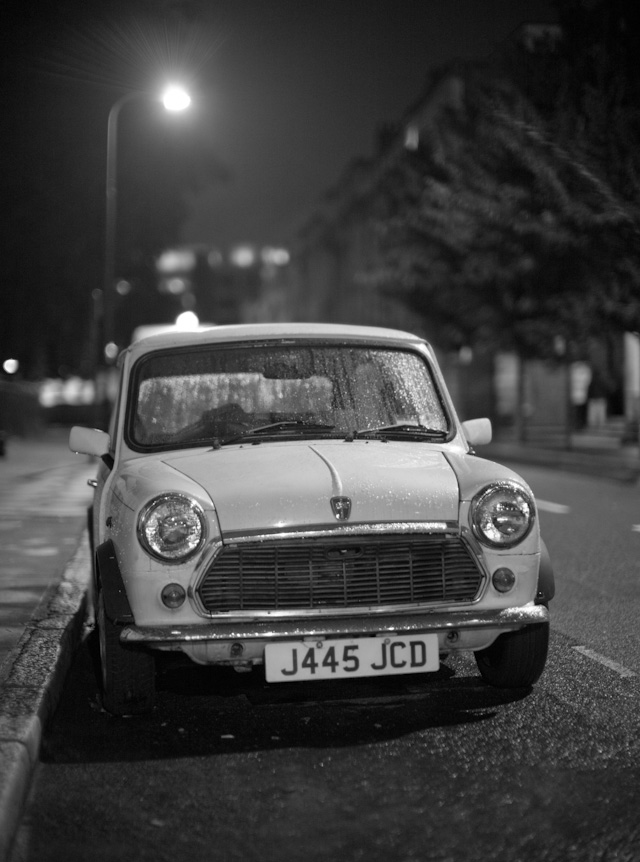
London rain. Leica M 240 with 50mm Noctilux-M ASPH f/0.95. © 2013-2016 Thorsten Overgaard.
| |
|
|
|
|
|
| |
Join the NEW Thorsten von Overgaard
Photography Extension Course
"My wife gave me this course and I absolutely love it.
Now I think more in light and shadows. Used a lot of the techniques on a recent trip and
my photos have improved a lot. Well done, Thorsten!"
S.N. (Mexico)
"I am happy with my purchase of the extension course. Well written, easy to understand"
K.D. (USA)
“I very much enjoy the incredible knowledge”
V.V. (United Kingdom)
"Addictive, beautifully and simplistically written. Just amazing. Cleared my concepts"
V.P. (USA)
"The extension course is the best course I read about photography (and I'm still at the beginning)"
M.S. (Luxembourg)
"I'm already in page 81 of the Extension Course, and your communication and words
provoked a change in me at an aesthetic level."
C.L. (USA)
|
|
| |
|
|
|
|
|
| |
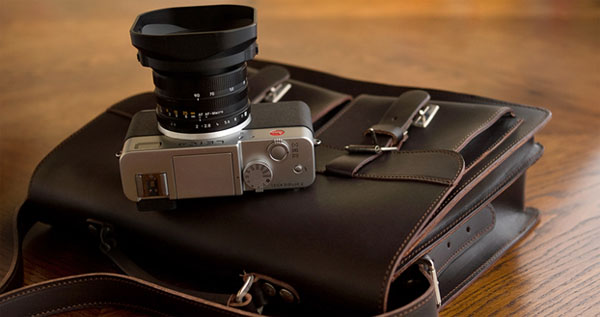 |
|
| |
|
|
|
|
|
| |
|
|
|
|
|
| |
The NEW
Overgaard Photography Extension Course
The waiting list is over!
After a couple of years with a long waiting list, I have finally redesigned the course so I can handle the students interested in this course. Not only that. The number of pages has gone up from 120 to 330!
I teach you the basics of photography in an easy-to-understand and step-by-step way that anyone from ages 12 to 90 can understand and easily apply.
The intention with this extension course is to get you going in your photography adventure with lightning speed, and to inspire you to reach to new heights.
Enjoy!
Specially tailored for Leica and digital photographers.
You work at your own pace after you receive the full package of material via mail. It works as a PDF on computer, iPad, Kindle, or - if you like - make your own print.
More info ---> |
|
|
Join the Home School for
Leica and Digital Photographers
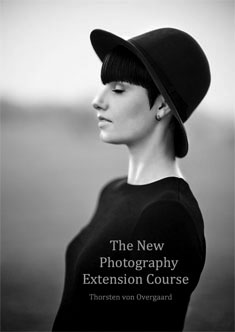
Only $798.00


Buy now. Instant delivery by mail.
ITEM #1708-2016 |
|
|
| |
|
|
|
|
|
Leica M11 or Leica M 241
The next Leica M is definitely coming, and likely it will be announced at Photokina 2016.
There are several possibilities for how it will integrate an EVF, but it’s unlikely that it won’t have one. It could be another add-on on top of the camera, but much faster and maybe even prettier and more durable than the EVF-2.
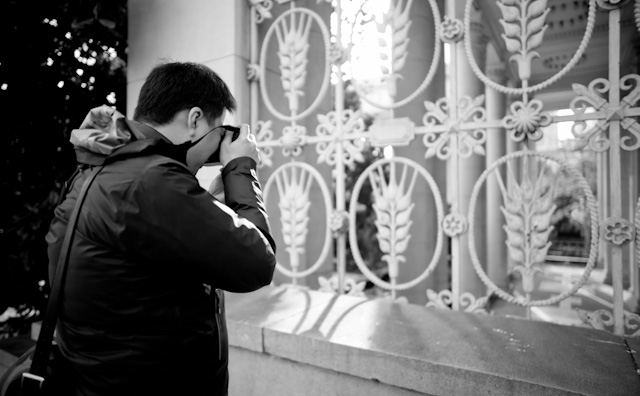
Zhi Min Wu in China. Leica M 240 with 50mm Noctilux-M ASPH f/0.95. © 2013-2016 Thorsten Overgaard.
Another possibility is a Leica M model with integrated EVF. They must have been speculating till the grey hairs stared growing at Leica Camera AG in Wetzlar: “Just how important is the rangefinder for the Leica M users?”
When the EVF-2 came out, nobody liked it. Now many use it.
Back then I predicted that Leica would make a Leica M with EVF built-in and a traditional Leica M without EVF. I don’t know if that’s going to happen. But for sure, a new and better EVF solution will come for the Leica M. That’s a given.
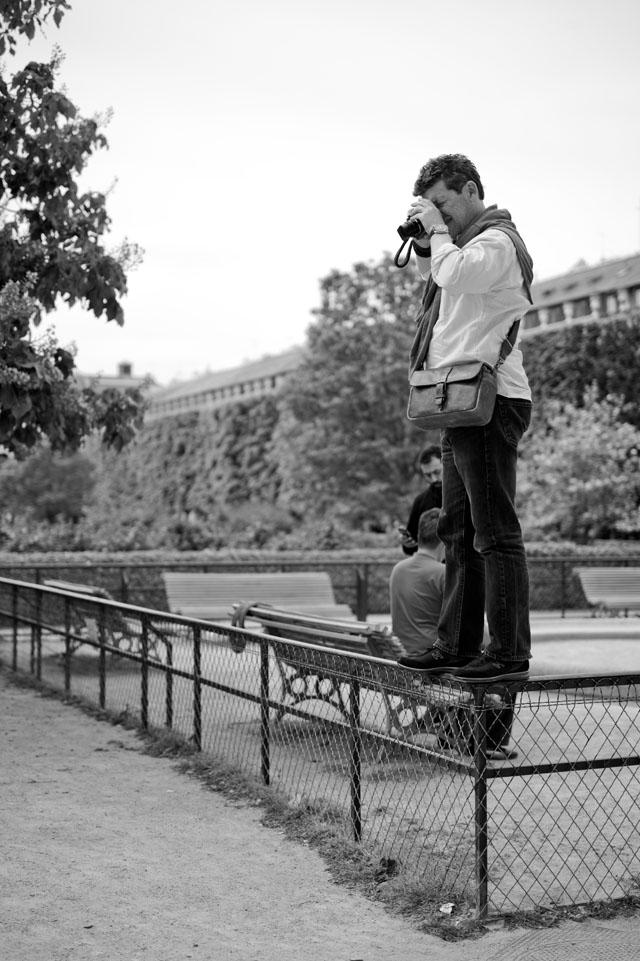
Working the Leica M 240 in Paris. © 2016 Thorsten Overgaard.
Updating the EVF-2
The Leica M 240 was constructed in a way that EVF can’t be updated. It’s made by Epson and used by both Olympus and Leica. When Olympus came out with an updated EVF, it worked for them, but the same EVF didn’t work for the Leica.
For the Leica M 240 there is only one EVF that fits, and that’s the one and only EVF-2.
So no matter what else happens, you won’t be able to upgrade the EVF-2 on the Leica M 240.

Sydney. Leica M 240 with 50mm Noctilux-M ASPH f/0.95. © 2013-2016 Thorsten Overgaard.
Another EVF bites the dust
The EVF is made by Epson for Leica (and Olympus) and is not exactly a piece of Leica engineering though it has gotten a design by Leica that resembles the VisoFlex.
It's a strange piece of electronics added to the top of the camera and as such it doesn't fit into the industrial design of the Leica body. And perhaps more importantly, it easily gets damaged. I drop my Leicas several times a year, either by accident or simply bang into things or drop them a little too hard on the table.
It's not really a problem for the Leica M, but for the EVF it is. I am on my fourth EVF now in three years.
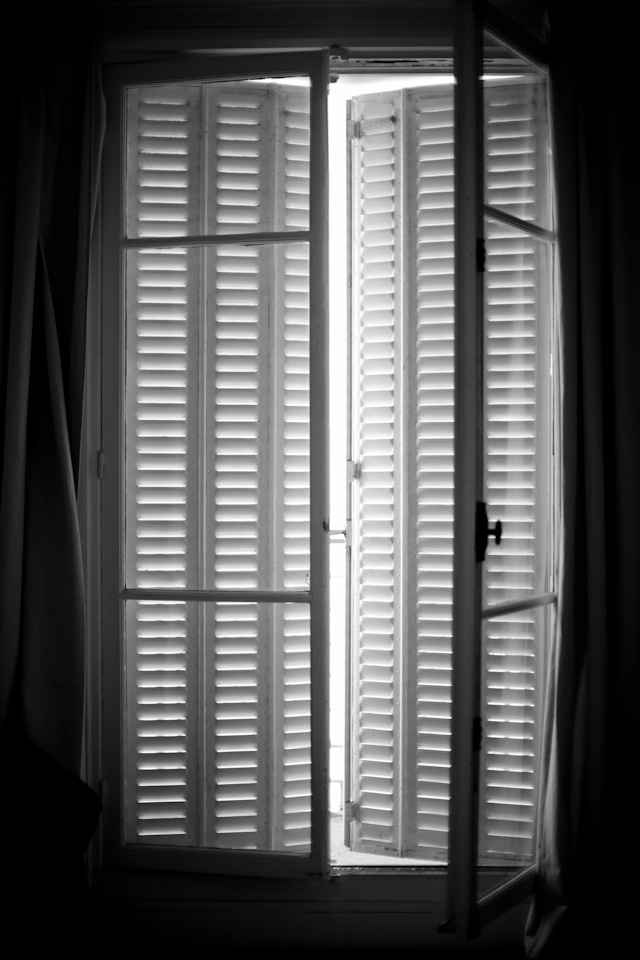
Paris apartment. Leica M 240 with 50mm Noctilux-M ASPH f/0.95. © 2013-2016 Thorsten Overgaard.

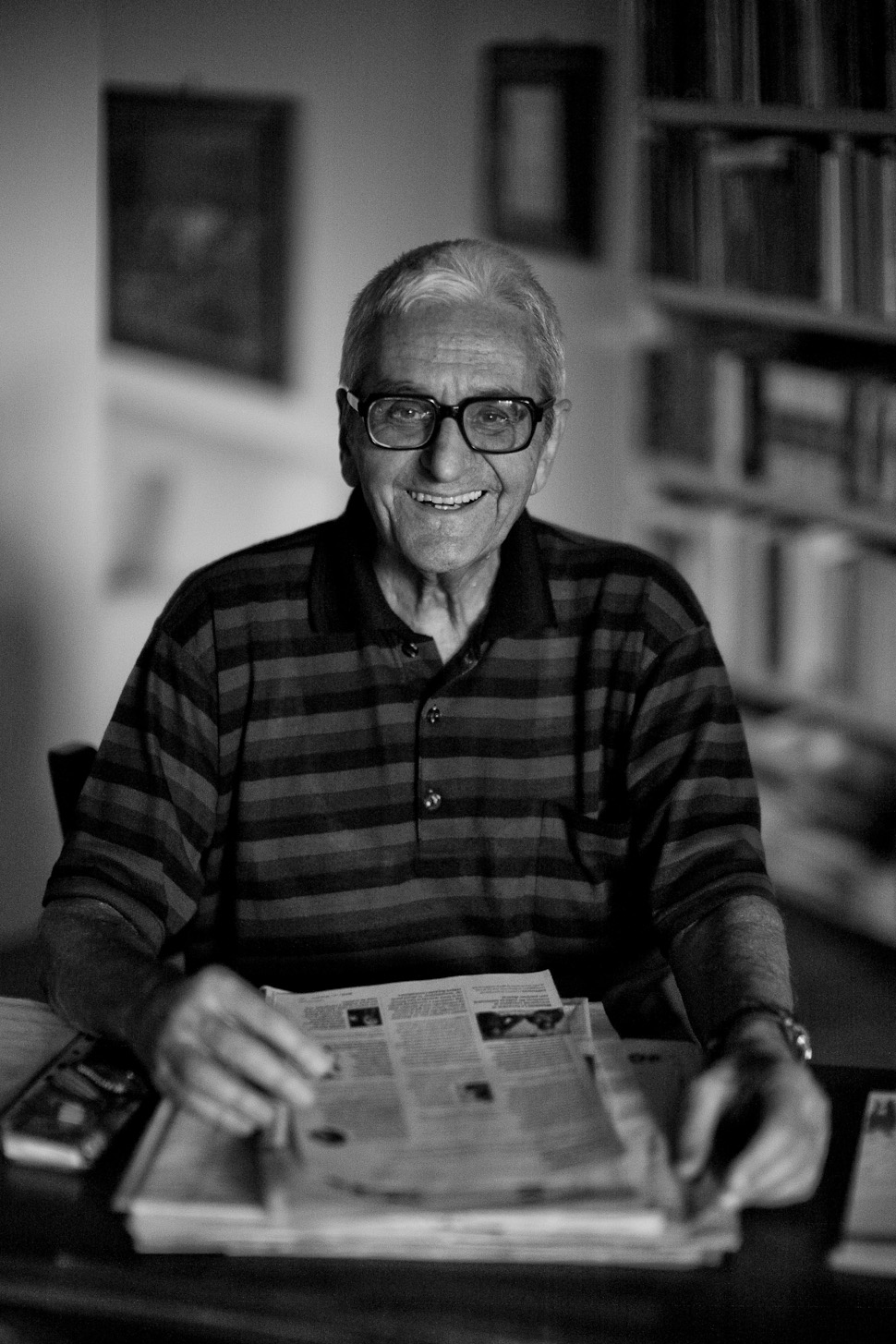
When in Rome in May I photographed three men talking by a cafe. One of them, Flavio, came over to me and asked, and then invited me to come see his apartment inside the courtyard. He wanted to show how painters and artists used to live in the high-ceiling spaces with large windows before this area of Rome became one of the most expensive. I learned later that this is a very sought-after location for movie crews and location scouts, hence the people who live there is very protective and it is almost impossible to get in. I did some portraits of him, as well as this one. The space was purely his working space. A large apartment with lots of books, and he put on some classic music on the cassette deck(!) to create a nice atmosphere. Leica M 240 with 50mm Noctilux-M ASPH f/0.95. © 2013-2016 Thorsten Overgaard.
| |
|
|
|
|
| |
Buy the new eBook
"A Little Book on Photography"
by Thorsten von Overgaard |
|
| |
|
|
|
|
| |
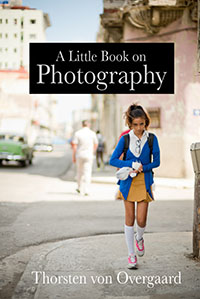
Order now - Instant delivery.
More info
★
★
★
★
★
★ |
|
It's a humorous understatement to call this
new eBook by Thorsten Overgaard for
"A Little Book on Photography".
It's a grand book, a history lesson, life experience, a biography and poetry book and brilliant photo book!
All in one beautiful package of 180 pages
to fire you up and get you to love
photography ... unconditionally!
"A Little Book on Photography"
eBook for computer, Kindle and iPad.
New release March 2017.
Intro price only $47 - 180 pages.
| |
|
|
| |
Buy Now

Instant Delivery |
|
| |
|
|

|
|
| |
|
|
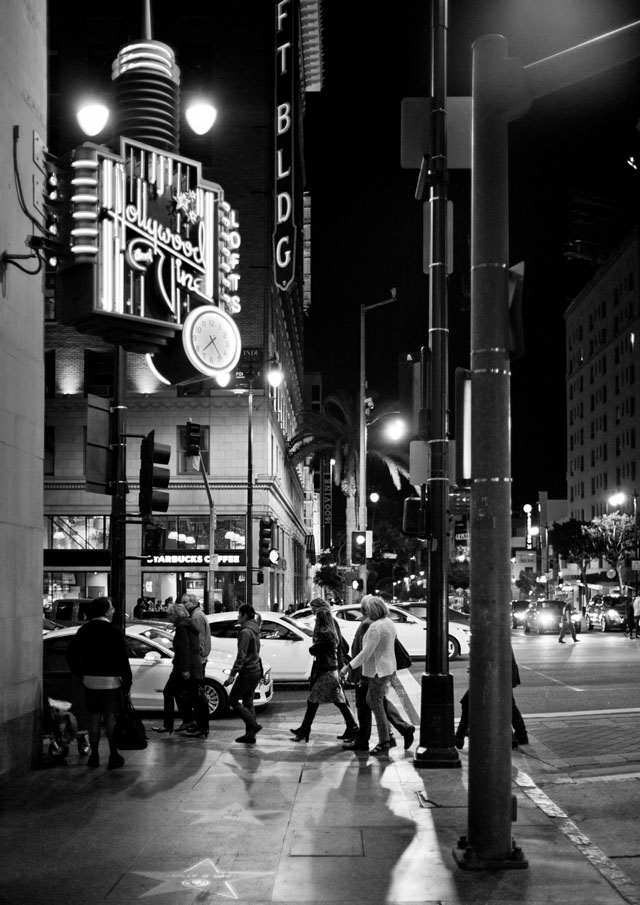
Neon at Hollywood Blvd Vine Street in Hollywood. Leica M 240 with Leica 35mm Summilux-M ASPHERICAL F/1.4 AA. © 2016 Thorsten Overgaard.
Night vision and the EVF - Seeing in the dark
The EVF shows the image as if in daylight. Only when you press the shutter release slightly down do you then see the preview of the exposure. Until then it is as a daylight photo, even in the darkest places. That is obviously very helpful when it is dark.

The Grammys. Leica M 240 with 50mm Noctilux-M ASPH f/0.95. © 2016 Thorsten Overgaard.

Advertisement:


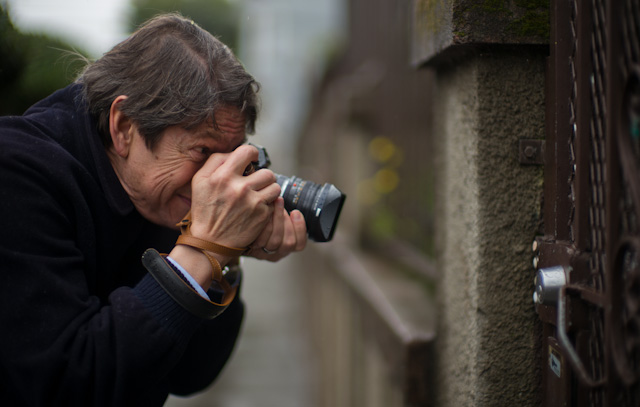
Peter Wais in San Francisco. Leica M 240 with 50mm Noctilux-M ASPH f/0.95. © 2016 Thorsten Overgaard.
New exciting possibilities with the EVF-2
The EVF-2 for the first time makes it possible to focus lenses without focus coupling to the Leica M rangefinder. You can mount any lenses you can find an adapter for, including Leica R lenses, Leica Cine lenses, Canon, Nikon and more.
Macro and EVF
Also using a Macro adapter is now a possibility on the Leica M 240. The OUFRO adapter from the 1970's is my favorite as it moves the lens 10mm away from the camera and thus brings you closer, but not too close.
Leica Camera AG also made a Leica M Macro Adapter which brings you even closer; and then you can "zoom" it to bring you really close.
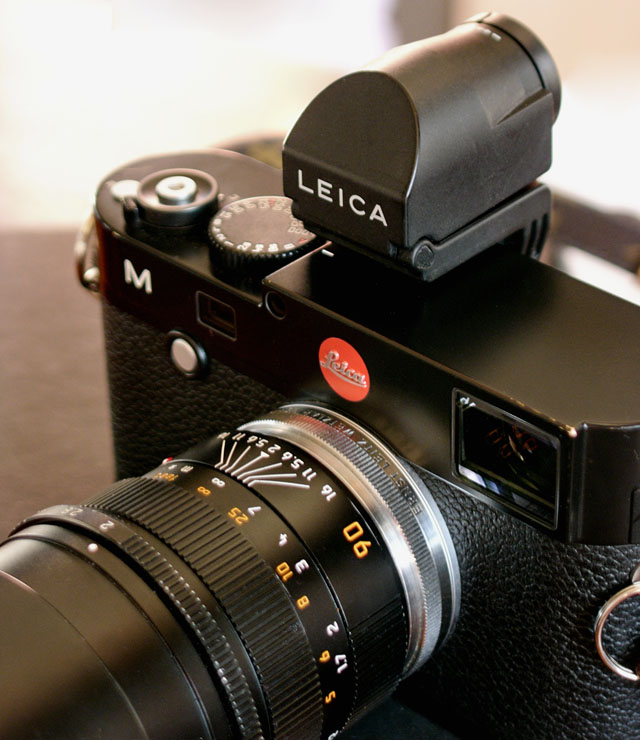
OUFRO on the Leica M Type 240 for macro. OUFRO is an original Leitz Extension Ring (produced 1959-1983 as part no. 16469Y). OUFRO can even be stacked withs everal of the at a time for greater magnification and will work on the Leica M Type 240 as macro for all lenses, including the Noctilux, 90mm APO-Summicron-M ASPH f/2.0 (as shown on this picture) and even 21mm lenses. With the EVF-2 and Live View you see the image crisp and sharp, easy to focus. The 90mm f/4.0 or f/2.0 would be my preferred macro lens. © 2013-2016 Thorsten Overgaard.
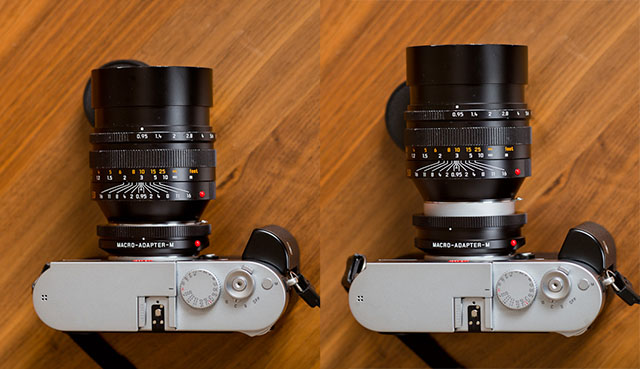
An easily overlooked detail is that the macro ring is variable! It is very neatly designed and is a real piece of Leica engeneering. One turns the ring and it expands, as simple as that. $690 at BH Photo.
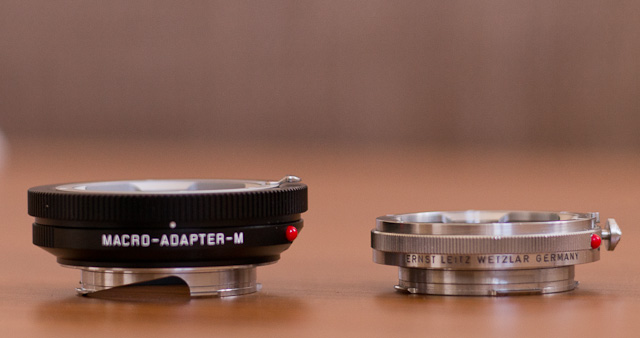
As can be seen in this image, the extent of macro (how far out the lens is moved from the Leica M body) is different from the OUFRO to the Leica M Macro adapter. The OUFRO is a compact choice for traveling and have close range possibilities. The Leica M Macro adapter gets you even closer.
Size proportions for the Leica Macro M adapter and the OUFRO
| |
|
|
|
|
 |
|
 |
|
 |
| Leica Macro Adapter closest |
|
Leica Macro Adapter widest |
|
The Leitz OUFRO |
| |
|
|
|
|
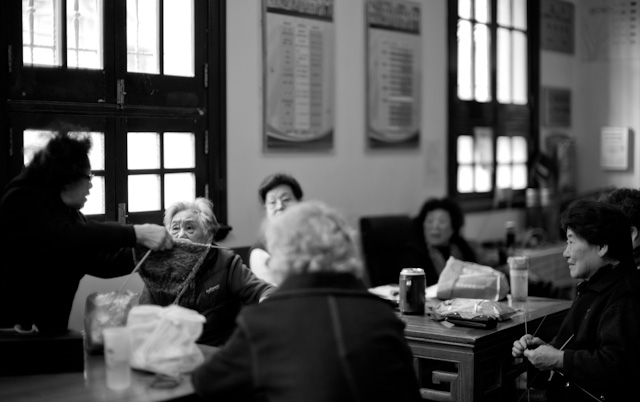
China. Leica M 240 with 50mm Noctilux-M ASPH f/0.95. © 2013-2016 Thorsten Overgaard.
Leica M with auto focus
Why hasn't Leica made an auto focus, when that would obviously be easier to deal with?
Maybe they will one day.
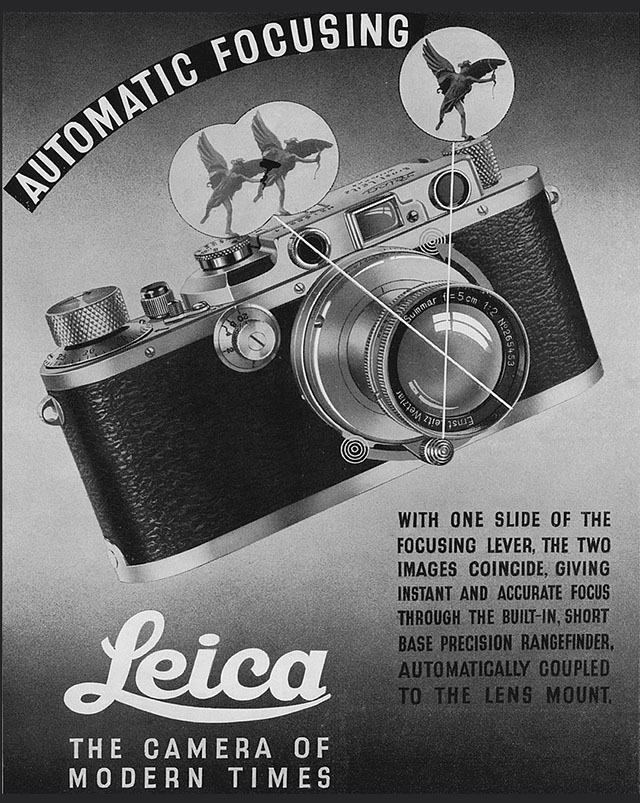
When the Leica III came out, Leica promoted it as "automatic focusing". What they referred to was of course that now - thanks to brand new technology - you could look through the viewfinder and find the accurate focus. Before that you had to guess the distance to the subject and then set the dial on the lens accordingly. Not very precise, and not suitable for low light lenses with narrow DOF (Depth Of Field).
It would be foolish to say that Leica Camera AG is so great that everything they do is the best. The matter of the fact is that they have chosen a technology that on one hand gives some possibilities for control, on the other hand restricts what one can do.
It's a well-known fact that Leica invented auto focus back 40-50 years ago but deemed it so unwanted by users that they sold the patent! It could be classified as a bummer, or minimally a wrong estimation of reality. As in the famous estimations that nobody would ever want a telephone, or that nobody would ever want a personal computer.
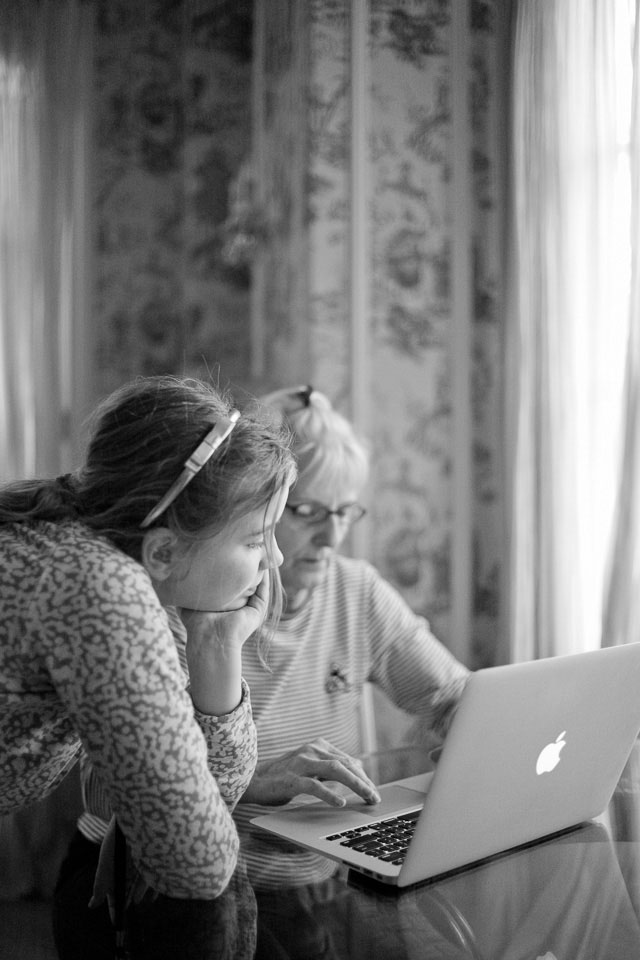
Robin and her tutor Terry in Hollywood. Leica M 240 with Leica 35mm Summilux-M ASPHERICAL F/1.4 AA. © 2016 Thorsten Overgaard.
In practical terms a manual lens that is made into an auto focus gets lighter and less durable to drops and hits. To make room for the motors inside the lens that focus the lens, everything has to be smaller and lighter. At least, that's how it has been with Nikon and Canon lenses.
One of the things Leica Camera AG have been playing with has been making auto focus by moving the sensor.
If it is a realistic dream or just a cool sounding idea, I am not the one to judge. I know it has been on the drawing table along with other ways to offer auto focus.
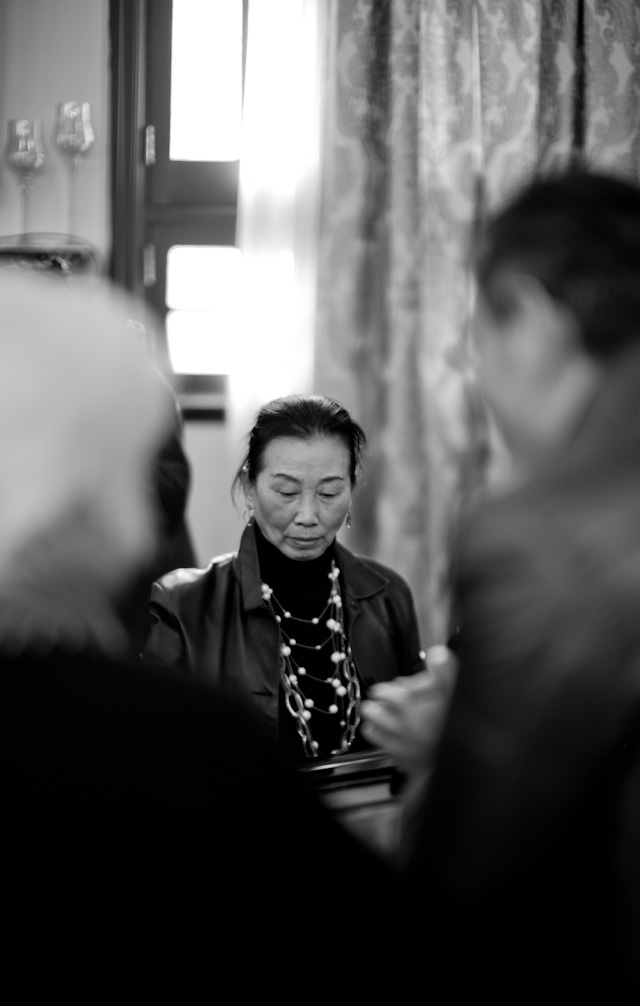
China. Leica M 240 with 50mm Noctilux-M ASPH f/0.95. © 2013-2016 Thorsten Overgaard.
I wonder how you would move the sensor enough to achieve the focus when the lens element often has to move half an inch or more to achieve the focus. I could also think of a system where the user focuses and the camera then fine-tunes the focus.
Or perhaps like on the Leica S where the camera auto focuses but the user can then fine-tune the focus manually.
One of the advantages with manual focus is the control of focus. Auto focus will put the focus on the nose or the glasses on a face, even though the photographer wanted the eyes to be in focus. It’s out of control in a way that manual focus isn’t.
I don’t think it is in the future of the Leica M system to have auto focus. The Leica SL came, and that is definitely an auto focus system.
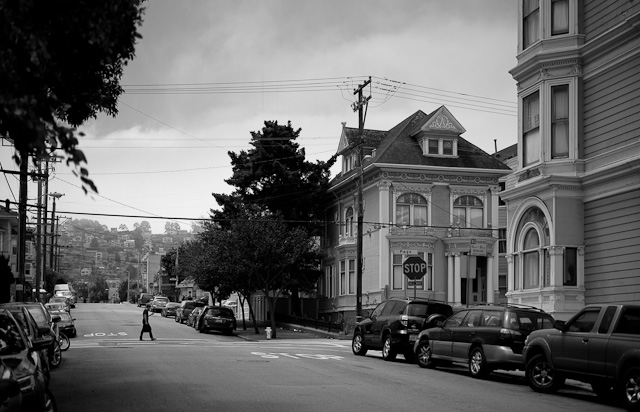
San Francisco in the fog. Leica M 240 with Leica 50mm APO-Summicron-M ASPH f/2.0.
The next thing
There is no doubt in my mind that the next integrated viewfinder we will be seeing in a future Leica M will be either an indirect Live View as in the Fuji below ... or simply a straight Live View and no analog view as was the case in the Leica Digilux 2 that came to market in 2004, as well as in the Leica SL from 2015 and the Leica Q from 2015.

The Fuji X100 camera was - apart from being very complicated to use - the first really smart combination of the analog viewfinder, combined with an LCD screen for preview of what the sensor saw, as well as focusing. The LCD would zoom in on a detail of the image so you could focus, then return to the full image so you could frame it correctly. It was a really awful smart idea!
In all fairness, the reason this type of viewfinder didn't find its way into the Leica M 240 is not because they are still writing everything with fountain pens on handmade paper. Stefan Daniel who is product manager at Leica Camera AG certainly has drawings of the next two or three generations of the Leica M on the wall that he and the team works on consistently as they work their way through samples of new electronic gadgets that may or may not be implemented in a future Leica model.
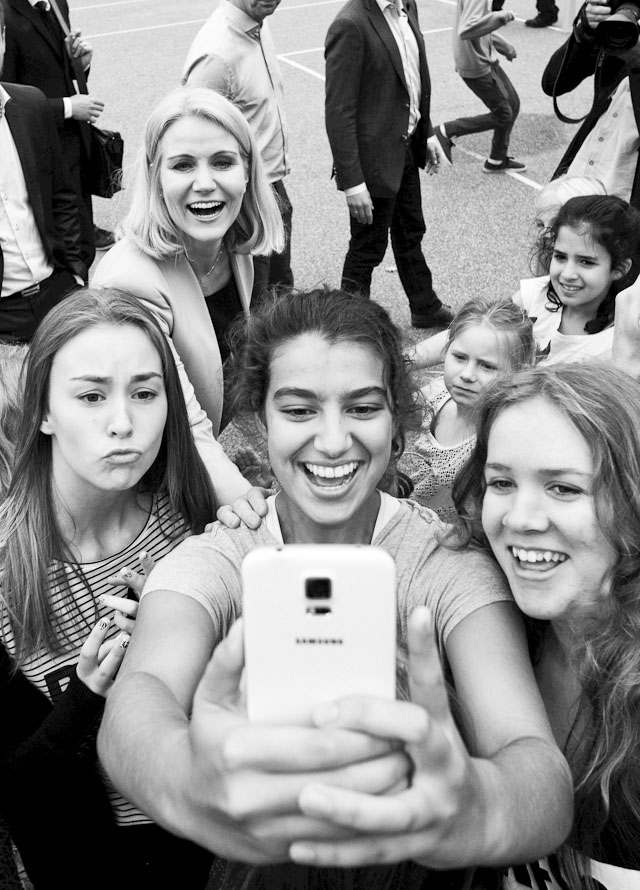
The Danish Prime Minister (upper left corner) does a selfie with school kids in Denmark, September 2014. Leica M 240 with Leica 21mm Summilux-M ASPH f/1.4. © 2014-2016 Thorsten Overgaard.
Already in 2010, a year after the Leica M9 was released, product manager at Leica Camera AG, Stefan Daniel was talking about Live View and electronic viewfinders, and the possibility of it being good enough for the next camera following Leica M9. This was at a meeting with 120 members of LHSA (The Leica Historical Society), and it was clear that Stefan and his team had been playing around with the new toys and that Stefan Daniel believed in the possibility.
| |
 |
| |
Same procedure as last year, Miss Sophie? |
| |
|
The people he carefully asked were mainly camera collectors, whom – as we all know – would probably prefer a remake of the Leica M3 over any new camera with a digital sensor!
I mention this to put the future possibilities into perspective. I think that Leica Camera AG internally believed in an electronic viewfinder in a Leica M 240, but also knows that 95% of the Leica M users would never allow such a radical change.
This is why the Leica M 240 came out with the glorified traditional rangefinder mechanism, as always. Just as in the 90th Year Birthday ... and then an add-on on top of a EVF-2 to test the waters.
I still meet people who haven't even considered buying a EVF-2 electronic viewfinder for their Leica M 240. That is how the alien the idea is to some hardcore Leica M users.
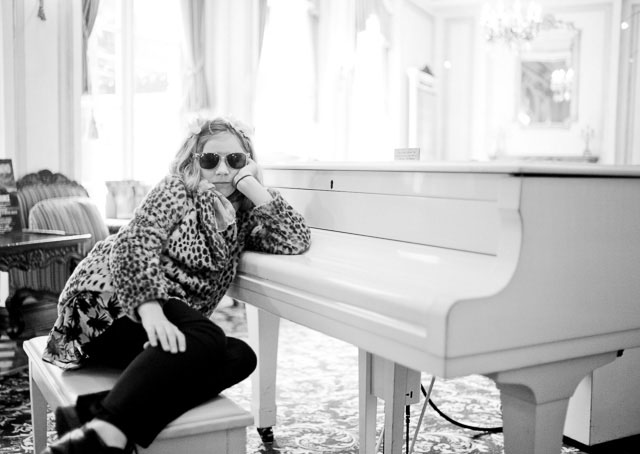
Robin. Leica M 240 with Leica 35mm Summilux-M ASPHERICAL F/1.4 AA. © 2016 Thorsten Overgaard.
My experience is that 70% or more of the Leica M 240 users really like the EVF-2 electronic viewfinder when they get it. Obviously, if the next Leica M is being offered in two models - one with only EVF and one with only RF, then the EVF model would likely sell a little more than the RF version. But many of us would want to get both of them.
But a Leica M with a combined viewfinder as the Fuji had, bridging the two possible models into one might just spare us all a long and tiresome discussion about what is better.
We will see, I guess ...

Paris Workshop. Leica M 240 with Leica 21mm Summilux-M ASPH f/1.4. © 2014-2016 Thorsten Overgaard.
I hope you enjoyed this article on focusing with the Leica EVF-2. As always, feel free to e-mail me at thorsten@overgaard.dk with suggestions, ideas, corrections and interesting stories and details. I will be finishing the last two pages on focusing the Leica M soon, but expect my Leica M-D 262 and Leica SL articles to come before that.
#1712-0816
| |
|
|
| |
This article will continue on page 45 --> |
|
| |
Coming soon! |
|
Enjoy the latest articles on the Leica M 240:
This is a continious user-report by Thorsten Overgaard. See more articles here and make sure to join the mailing list to stay in the know.
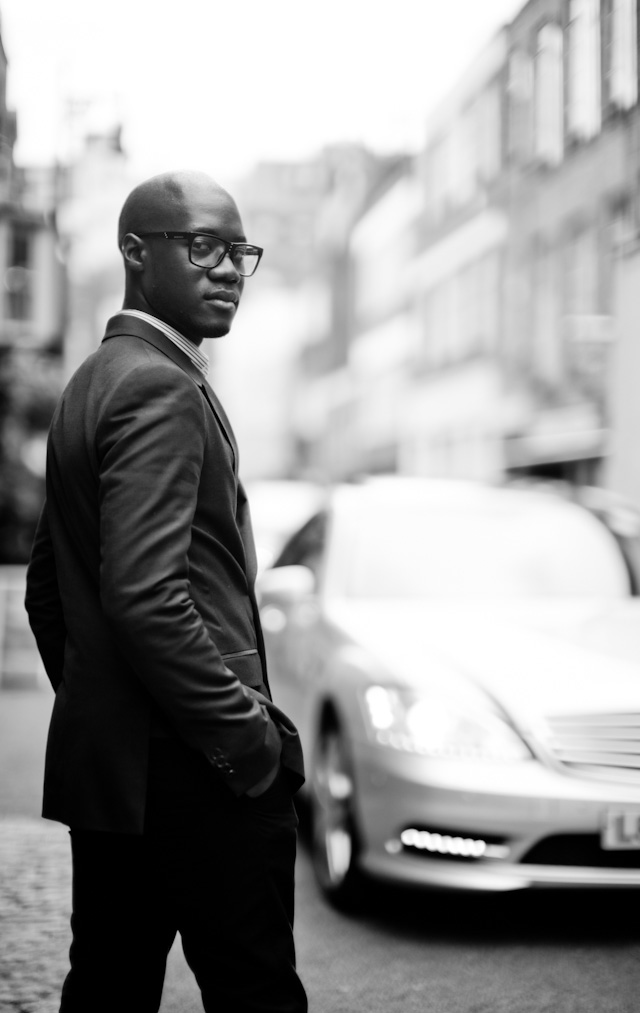
Arteh Odjidja. Leica M 240 with 50mm Noctilux-M ASPH f/0.95. © 2013-2016 Thorsten Overgaard.
| |
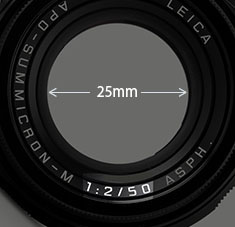 |
| |
1:2/50 the description says.
But what does it mean? |
| |
|
1: = Basically means 1 divided with. On the lens to the right, it means that the diameter of the hole throught he lens is 25mm.
We would normall call it
a 50mm f/2.0 lens. The writing of 1:2/50 is a tradition from the 1800's of specifying a lens, which reveals quite a bit about the construction:
Focal length 50mm simply means that the distance from center of focus inside the lens to the focusing plane (the sensor or film) is 50mm, and the aperture of f/2 or 1:2 means that the diameter of the hole the light comes throught is 25mm (50mm divided with 2 = 25mm).
In traditional lens design, one could usually tell from looking at the length of a lens if it was a 400mm, 100mm or 35mm. Newer designs with mirrors (in tele lenses) and more corrections (in wide lenses) can make the size of the lenses shorter or longer, but the distance from center of focus to sensor in a modern 50mm lens will still be 50mm for a 50mm and 400mm for a 400mm, and so on.
See Focal length and Aperture further down for more.
35mm
a) 35mm lens is a lens that has a viewing angle of view is 63°vertically, 54° horizontally and 38° vertically within a 35mm film frame or "full-frame" 24x36mm digital format. See Focal length further down.
b) 35mm focal length: the distance from center of focus inside the lens to the focusing plane (the sensor or film) is 35mm.
| |
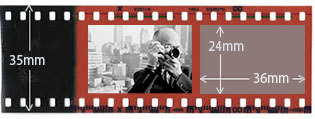 |
| |
35mm film format (also known as full-frame) |
| |
|
c) 35mm film format (also known as full-frame in digital sensors) was a standard film format that came about in 1892 where the width of the film roll was 35mm, and it's been the most used format ever since. Only a format of 24 x 36mm is used for the photo on the film roll.
35mm film format was first used in 1892 by William Dickson and Thomas Edison for moving pictures with frames of 24 x 18mm, using film supplied by George Eastman (Kodak), and this became the international standard for motion picture negative film in 1909. Later other motion picture formats came about, such as Academy Ratio (22 x 16 mm), Widescreen (21.95 x 18.6 mm), Super 35 (24.89 x 18.66 mm) and Techiscope (22 x 9.47 mm).
The inventor of the Leica camera, Oskar Barnack, built his prototype Ur-Leica in 1913 as a device to test film stock and\ motion picture lenses and had it patented. Putting 35mm film format into a small camera gave him the idea "small negative, large print" and he decided to increase the size of each frame on the 35mm film to 24x36mm (for more detail and sharpness), and then invented an enlarger to make large prints from the small negative. The length of a film, 36 pictures, is said to have become the standard because that was how far Oskar Barnack could stretch his arms (when cutting film from larger rolls to put them into film rolls for the Leica camera).
d) 35mm equivalent is often given as a standard when talking about lenses in small compact-cameras or large format cameras with other sensor/film format than the 24 x 36mm frame. Example: A camera with a 12 x 18 mm sensor has a 14mm lens on it, and even the lens is actually a 14mm, it is specified as a 28mm lens because the viewing angle that ends up on the sensor is equivalent to a 28mm lens on a 35mm of full-frame camera.
| |
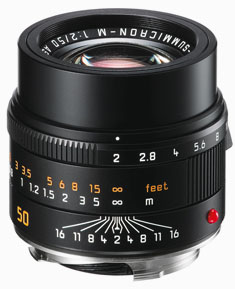 |
| |
The Leica 50mm APO-Summicron-M
ASPH f/2.0 lens |
| |
|
50mm
a) 50mm lens is a lens that has a viewing angle of view is 47° vertically, 40° horizontally and 27° vertically within a 35mm film frame.
b) 50mm means there is 50mm from the center of focus inside the lens to the focal plane (sensor or film).
c) 50mm lens is often compared to the human eye. Not because of viewing angle (how wide it sees) but because of size ratio (how it sees). The 50mm lens is the lens that comes closest to the size that the human eye see things. Whereas the human eye has a much wider angle of view [120-200°] than the 50mm lens [47°].
AF = Auto Focus. The idea is that the camera does the focusing itself (the word auto comes from Greek "self").
Aperture = The same function as the iris and pupil has in the eye. The pupil in the eye is the dark circular opening in the center of the iris of the eye, varying in size to regulate the amount of light reaching the retina (the sensor area inside the eye).
Aperture on a camera is the f/ stop on the camera that regulates how much light passes through the lens by increasing or decreasing the hole through the lens. On a f/2.0 lens the lens is fully open" at f/2.0. At f/2.8 the aperture inside the lens make the hole through the lens smaller so only half the amount of light at f/2.0 passes through. For each f/-stop (4.0 - 5.6 - 8.0 - 11 - 16) you halve the light. The aperture of the lens is basically the focal length divided with the f/-stop = size of the hole (50mm divided with f/2.0 = the hole is 25 mm in diameter).
Besides regulating the amount of light (so as to match the correct exposure), the aperture also affects the dept of field: , which is how deep the sharpness is. To get the sough-after photos with narrow depth of field where the background is blurry, the lens has to be wide open at f/2.0 or so. Stopping the lens down to f/8 or f/16 will result on more depth of field, meaning the background will start becoming in focus. To maintain narrow depth of field, one can use the ISO sensitivity and/or the shutter speed to match the correct exposure (as aperture is only one of three ways to control the exposure; the correct amount of light).
ORIGIN: Late Middle English : from Latin apertura, from apert- ‘opened,’ from aperire ‘to open’.
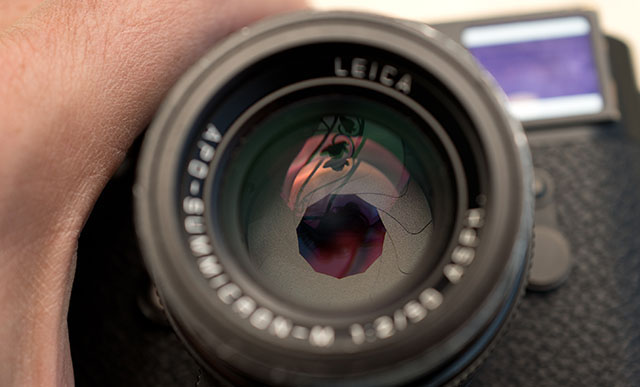
The aperture blades inside the consist of a number of blades that - as the aperture ring on the lens is rotated - narrow into a smaller and smaller hole. © Thorsten Overgaard.
| |
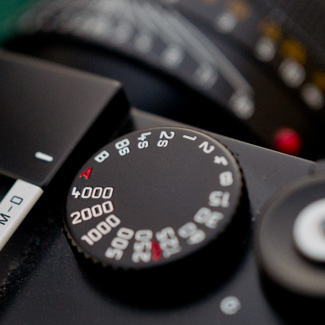 |
| |
The camera in Aperture Priority Mode |
| |
|
Aperture Priority Mode = When the shutter speed dial on top of a Leica M camera is set to A, it is short for “Aperture Priority” and allows the user to set a specific aperture value (f-number) while the camera selects a shutter speed to match it that will result in proper exposure based on the lighting conditions as measured by the camera's light meter. In other words, you set the aperture as priority (f/1.4 for example), and the camera calculates a shutter speed (1/250 of a second) that matches that. If you change the aperture to f/2.0 by changing the aperture ring on the lens, the camera will re-calculate the speed to 1/125 so as to get the same amount of light to hit the sensor (f/2.0 is half the light through the lens as f/1.4 and 1/125 if twice the amount of light on the sensor as 1/250).
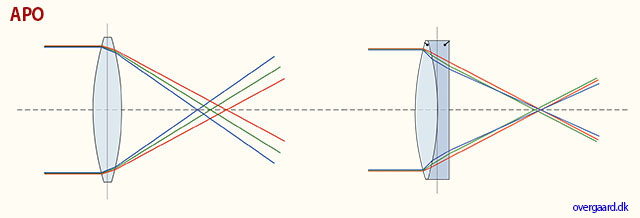
APO corrected basically means that the red, green and blue has been corrected to meet more precisely in the same spot. Clarity of colors and definition of details would be the result.
APO = in lens terminology stands for "apochromatically corrected". In most lenses, optical design concentrates the focus of blue light and green light into a single plane, but red light falls slightly into another plane of focus. In APO lenses, the design and expense has been put in to making red light focus on the same plane as blue and green. Under a microscope you would see that all light subject is now in focus, creating a sharper image overall. Many manufacturers offer APO designs, but in most of these only the very center of the lens is APO corrected. Leica prides itself on making most of the frame APO corrected.
APo-correction has traditionally been used for long tele lenses (and periscopes), but in recent years APO-correction has been applied to 50mm and wide angle lenses as well. One will notice that the colors are really bright and alive, almost more real than to the eye, in lenses like the Leica 90mm APO-Summicron-M ASPH f/2.0 and 50mm APO-Summicron-M ASPH f/2.0.
Apochromat; ORIGIN early 20th century, made of the two words; apo (Greek origin, away from) and chromatic (Latin origin, meaing relating to color).
| |
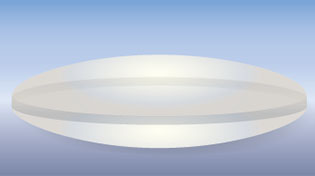
spherical (ball) |
| |
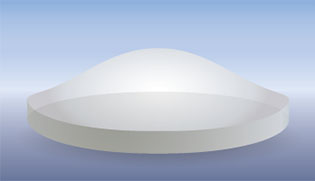
a-spherical (non-ball) |
| |
|
ASPH = (Aspherical lens) stands for "aspheric design".
Most lenses have a spherical design - that is, the radius
of curvature is constant. These are easy to manufacture by
grinding while "spinning" the glass. This design
however restricts the number of optical corrections that can
be made to the design to render the most realistic image possible.
ASPH lenses (a-spherical, meaning non-spherical), however, involve usually 1 element that does
*not* have a constant radius of curvature. These elements
can be made by 1) expensive manual grinding, 2) molded plastic,
or 3) Leica's patented "press" process, where the element
is pressed into an aspherical ("non-spherical")
shape. This design allows Leica to introduce corrections
into compact lens designs that weren't possible before. Practically,
the lens performs "better" (up to interpretation)
due to increased correction of the image, in a package not
significantly bigger than the spherical version.
There is another Aspherical lens manufacture technique: an uneven coating layer is applied to a spherical lens. The coating is thicker on the edges (or on the center, depending). Canon "Lens Work II" calls these "simulated" aspherical lenses. Simulated and Glass-Molded (GMo) asphericals show up in non-L Canon lenses, while the L lenses have actual ground aspheric elements.
A- means non, or without. From Latin, ex.
Sphere: ORIGIN Middle English : from Old French espere, from late Latin sphera, earlier sphaera, from Greek sphaira "ball".
| |
|
|
 |
| Normal spheric lens (grinded) |
|
ASPH (note the shape of the glass as result of pressing rather than grinding) |
Auto- means “self”. The idea is that when a camera has auto-(something), it does that (something) by itself.
Banding = Noise in digital images. Horizontal lines in a horizontal picture (if the camera is in portrait mode/vertical, the lines will obviously be vertical). It's simply noise; the result of uncontrolled algorithms working overtime with an image the sensor really can't see because it's very dark. (If your image has vertical lines in it, it is more likely that the sensor needs remapping).

This image at 6400 ISO, underexposed and then brought up to correct exposure in Lightroom, displays banding: Horizontal lines in the image. Leica M-D 262 with Leica 50mm APO-Summicron-M ASPH f/2.0.
Base ISO = The ISO the digital sensor was born with. Even a digital sensor goes from say 50 ISO to 25,000 ISO, it only has one base ISO. Any other setting is an algorithm that figures out how the image whould look if there was 64 times more light, or half the light, etc.
When you go down from Base ISO (for example 200 to 100 ISO), you can expect a
decrease in quality. When you go up, the decrease is much less. For some sensors, you loose 2-3 stops by going down 1 step in ISO, but can go 8 steps up and only loose 1 stop in dynamic range. Basically, your ISO range should be from Base ISO and as far up as you can, before you see visible decrease in quality (mostly 3200 ISO - 6400 ISO).
Base ISO for Leica M9 is 160 ISO, for Leica M240 it is 200 ISO. For Leica M10 it is around 160 ISO. For Leica M Monochrom it is 320 ISO. For Leica Q and Leica Q2 it is around 100 ISO. For Panasonic Lumix S it is 200 ISO. For most Canon cameras the base ISO is around 100, for most Nikon cameras it is around 200 ISO.
Bokeh = The visual quality of the out-of-focus areas of a photographic image, especially as rendered by a particular lens: It's a matter of taste and usually photographers discuss a 'nice' or 'pleasant' bokeh (the out-of-focus area is always unsharp, which is why the quality discussed is if one likes the way it renders or not by a particular lens). The closer you get to something, the 'more' bokeh' you get (in that the focus becomes less for the background and foreground at close distances than at long distances). ORIGIN from Japanese 'bo-ke' which mean 'fuzzines' or 'blur.'.
 Bokeh: The visual quality of the out-of-focus areas of a photographic image. Photo at Bar del Fico in Rome. Leica TL2 with Leica 35mm Summilux-TL ASPH f/1.4. © Thorsten Overgaard. Bokeh: The visual quality of the out-of-focus areas of a photographic image. Photo at Bar del Fico in Rome. Leica TL2 with Leica 35mm Summilux-TL ASPH f/1.4. © Thorsten Overgaard.
C = Continuous shooting. When the ring by the Shutter Release on top of the camera (or in the menu of digital cameras that doesn't have such a feature on the outide of the camera) is moved from OFF to C, the camera takes series of images as long as the shutter release is pressed down. In some cameras the speed of continious shooting can be adjusted.

Camera comes from Chambre, mostly in relation to Spanish soldiers’ rooms. Obscura means 'dark', so a dark room is basically the derivation for the word camera.
Camera - is today’s short name for Camera Obscura (meaning “a dark room”). Camera means Chambre and was used only as a Latin or alien word, actually only for Spanish soldiers’ rooms, until popularized in connection with photography in 1727: “Camera Obscura”. In 1793 the slang term “camera” was used by Sterne Tr. Shandy: “Will make drawings of you in the camera” and by Foster (1878), “The eye is a camera”. Camera Obscura was described by Iraqi scientist Ibn-al-Haytham in his book, “Book of Optics” (1021) and by Leonardo da Vinci in 1500; popularized and made widely known in 1589 by Baptista Porta when he mentioned the principle in his book “Natural Magic”. Johannes Kepler mentions Camera Obscura in 1604.
Camera = chambre (room), Obscura = dark (or cover).
| |
|
|
| |
Why is it called a "camera"..?
The word Camera is today's short name for Camera Obscura (which originally means “a dark room”).
Origin of the word Obscura means "dark" or "covered", and the word Camera means Chambre and was used originally only as a Latin or alien word, actually only for Spanish soldiers' rooms, until popularized in connection with photography in 1727: “Camera Obscura”.
In 1793 the slang term “camera” was used by Sterne Tr. Shandy: “Will make drawings of you in the camera” and by Foster (1878), “The eye is a camera”.
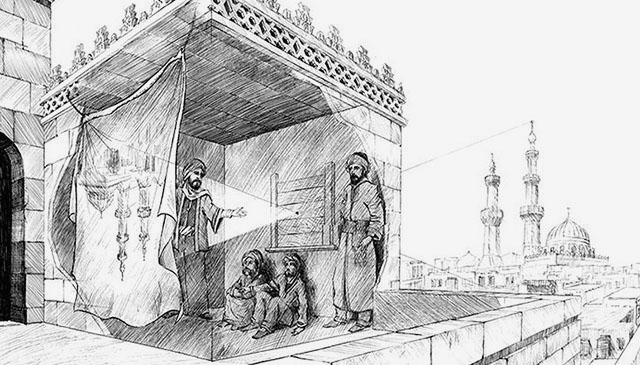
Ibn-al-Haytham mentioned Camera Obscura in his "Book of Optics" in 1021.
The concept of Camera Obscura was described by Iraqi scientist Ibn-al-Haytham in his book, “Book of Optics” (1021) and by Leonardo da Vinci in 1500; popularized and made widely known in 1589 by Baptista Porta when he mentioned the principle in his book “Natural Magic”. Johannes Kepler mentions Camera Obscura in 1604.
Camera = chambre (room), Obscura = dark (or cover). |
|
| |
|
|
CCD sensor (as used in Leica M8, M9, Leica S) = (Charged Coupling Devices) - The first digital cameras used CCD to turn images from analog light signals into digital pixels. They're made through a special manufacturing process that allows the conversion to take place in the chip without distortion. This creates high quality sensors that produce excellent images. But, because they require special manufacturing, they are more expensive than their newer CMOS counter parts.
CLA
An acronym for "(C)lean, (L)ubricate & (A)djust", whereby the item is merely re-lubricated, fine-adjusted and calibrated rather than repaired. "I just got my equipment back from CLA at Leica"
CMOS sensor (as used in Leica CL, Leica T/TL/TL2, Leica M10, Leica M 240, Leica M Monochrom Typ 246, Leica S Typ 007, Leica SL, Leica Q, Leica Q2, Leica M10, Leica X, Leica D-Lux, etc.) = (Complimentary Metal Oxide Semiconductor) chips use transistors at each pixel to move the charge through traditional wires. This offers flexibility because each pixel is treated individually. Traditional manufacturing processes are used to make CMOS. It's the same as creating microchips. Because they're easier to produce, CMOS sensors are cheaper than CCD sensors. CMOS allow Live View and use less energy than CCD.
Collapsible - Usually refers to a collapsible lens such as the Leica 50mm Elmarit-M f/2.8 Collapsible, or Leica 90mm Macro Elmar-M f4.0 Collapsible, etc. A collapsible lens is one that can collaps into a compact lens when not in use.
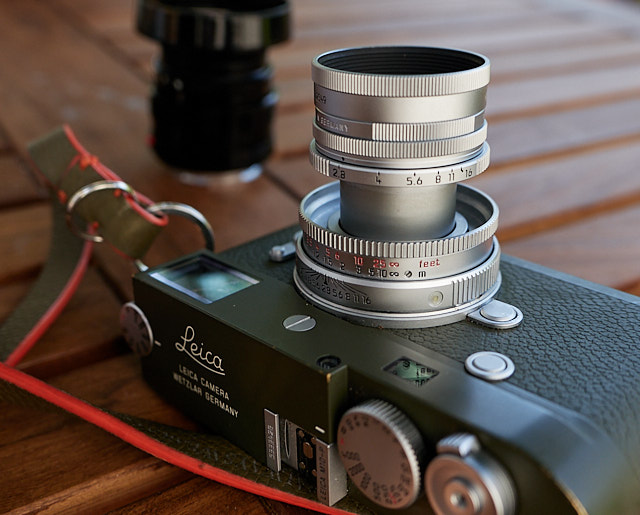
The Leica 50mm Elmar-M f/2.8 Collapsible on a Leica M10-P Safari. Here extruded for use; it can collapse into the camera so as to be more compact when not in use. © Thorsten Overgaard.
Contrast - The degree of difference between tones in a picture. Latin contra- ‘against’ + stare ‘stand.’
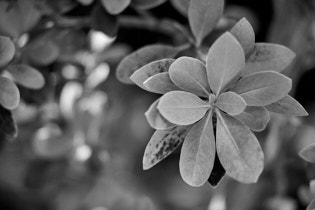 |
|
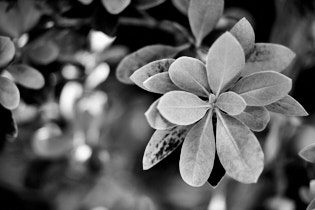 |
| Normal to low contrast |
|
High contrast |
| |
|
|
D-Lux (Digital Lux) = A series of compact digital cameras by Leica Camera AG developed with Panasonic since 2003. See my article "Compact Digital Leica Cameras" and my Leica D-Lux 7 review. Lux comes from Latin and means Light.
| |
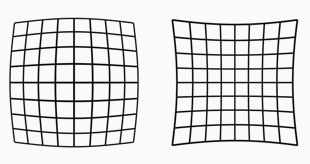 |
| |
Lens distortion looks like this. The lines are not straight. Our eye uses distortion correction. Lens designers can design lenses so they have very little distortion, or they can make less complicated lens designs and "fix" the distortion in software. |
| |
|
Distortion = In photo optics/lenses: When straight lines in a scene don't remain straight because of optical aberration.
Lens designers can correct for distortion to a degree so the whole image field is perfect corrected and all lines remain straight. In modern lens design many designs rely on Software Distortion Correction (SDC).
The eye adjusts for distortion so we always see vertical and horizontal lines straight when we look at things. Even when you get new prescription glasses (if you use such), you will often experience distortion in your new glasses. After a few days they eyes have adjusted for the glasses and the distortion you saw to begin with is now gone. Software Distortion Correction (SDC) is far behind what the human eye can perform of adjustments. (Also see my definition on Perspective for more on the eye and optics)
DNG = Digital Negative, an open standard developed by Adobe. It is a single file that contains the raw image data from the sensor of the camera as well as date, time, GPS, focal length, settings, etc.
The alternative is a RAW file + XMP file where the RAW file contains the image information and the XMP contains the rest of information about where, how and when the picture was taken, as well as editing data when the photo is edited in Lightroom or Capture One.
A Camera Raw profile (that is specific for that camera) in the computer helps the software program, for example Adobe Lightroom, to translate the RAW data into the image. Camera producers provide a Camera profile with their camera, and Adobe makes their own 'refined' Adobe Raw camera profile for all new cameras.

A raw file (or DNG) is simply the full recording of digital data (1's and 0's) from the sensor. In the computer, the sensor data is translated into the exact colors, via a camera profile.
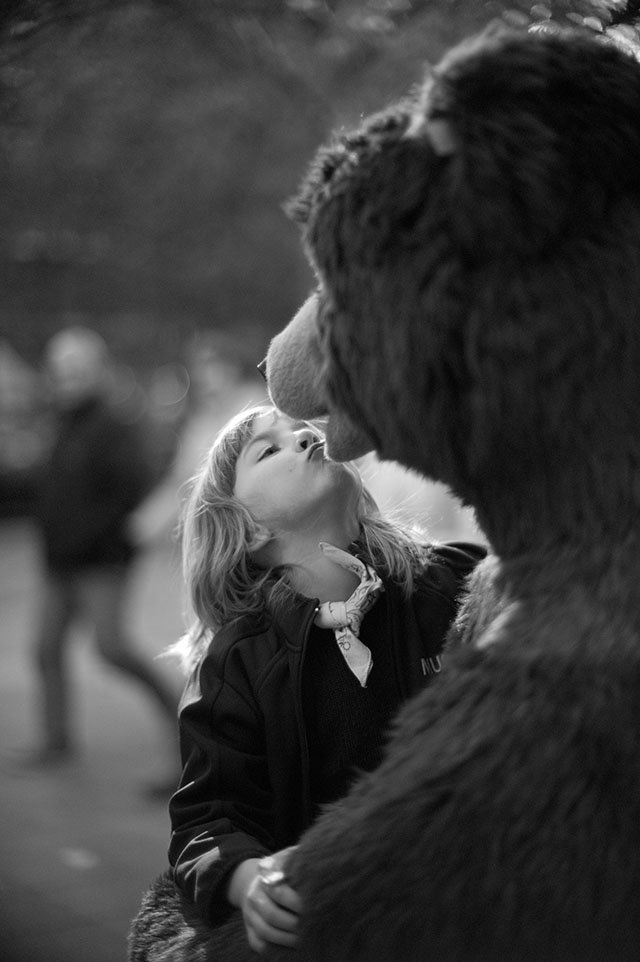
Narrow Dept Of Field in use: The face is in focus, the hand in front is slightly out of focus, the background is much out of focus and blurry, reduced to an atmosphere. Leica 50mm Noctilux f/1.0 at f/1.0 and 2.5 meters distance to subject in focus. © Thorsten Overgaard.
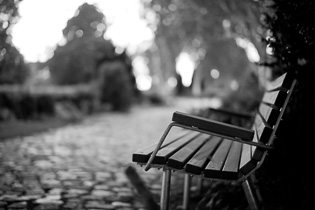 |
|
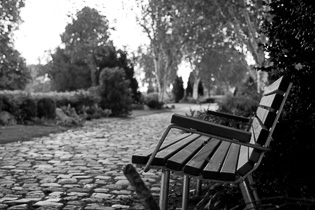 |
| 50mm f/1.4 lens at f/1.4. |
|
50mm f/1.4 lens at f/5.6 |
| |
|
|
| |
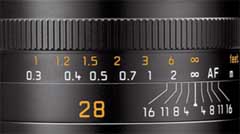 |
| |
The lines on this 28mm lens indicates the DOF. Here the focus is on infinity, and if the lens is stopped down to f/1.6, objects from 1.8 meter to ininity will be 'acceptable sharp'. |
| |
|
DOF = Depth of Field (or Depth of Focus), an expression for how deep the focus is, or (more often use to express) how narrow the area of focus is. This is how much of the image, measured in depth or ditance, will be in focus or "acceptable sharp".
The appearance of the DOF is determined by:
1) aperture (the smaller the aperture hole is, the deeper is the depth of field, and opposite, the wider open a lens you se, the more narrow will the DOF be) and
2) distance to the subject (the farther away, the larger area is sharp; the closer the subject in focus is, the more narrow the DOF gets)..
The DOF scale measurement on top of the Leica lenses shows lines for each f-stop that indicates from which distance to which distance the image will be sharp. Shallow DOF is a generally used term in photography that refer to lenses with very narrow focus tolerance, like f/1.4 and f/0.95 lenses, which can be used to do selective focus; making irrelevant subjects in the foreground and background blurry so only the subjects of essence are in focus and catches the viewers eye).
in modern cameras like the Leica SL2, the camera has a DOF scale inside the viewfinder. As DOF is the same for all lens brands and designs, only depending on focal length, distance and aperture f-stop, the camera can calculate it and show a 'digital DOF scale" in the viewfinder.

Depth Of Field scale from Fujifilm, same lens with different aperture settings from f/2.0 to f/8.0.
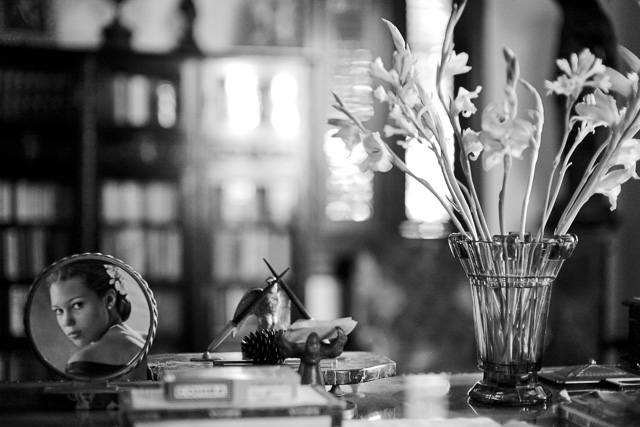
Depth of Field: Focus is on the flowers and the photograph on the desk and the foreground and background is blurred as the depth of field is narrow. If one stop down the aperture of the lens from f/1.4 to f/5.6, more will be in focus. If one stop down the lens to f/16 even more (if not all) will be in forcus. Another rule: The closer you go to a subject (the less focusing range), the more narrow the Depth of Field will be. © Thorsten Overgaard.
Dynamic range. The grade of ‘contrast range’ (or number of tones) a film or sensor, or simply a photograph, possess between bright and dark tones. The human eye is said to have a dynamic range of 10-14 ‘stops’ (but because we scan area by area and compile a concept of the overall scene, they eye is often thought to have a much higher dynamic range), Film used to have 7-13 ‘stops’ and some modern sensors have up to 15-17 ‘stops’.
E - Diameter in Leica filters and screw diameter, as in E46 which means that the filter diameter is 49mm for this lens. In general language, one would see Ø46 used, as Ø is the general symbol for diameter.
Elmar = Refers to the maximum lens aperture - here f3.5 . Historically derived from the original 1925 50mm f3.5 Elmax lens, which was an acronym of (E)rnst (L)ieca and Professor (Max) Berek, designer of the original lenses. Later that year the 50mm f3.5 Elmar superceded the Elmax, which was discontinued due to its complexity and high cost of manufacture.
Elmarit = Refers to the maximum lens aperture - here f2.8 . The name is obviously derived from the earlier (and slower) "Elmar" designation. Not every f/2.8 lens is called an "Elmarit" though, the most obvious current exception being the 50mm f2.8 Elmar-M collapsible lens which for nostalgia and marketing reasons has kept the original 1930's Elmar name (the 50mm f3.5 collapsible Elmar, manufactured 1930-59, was one of Leica's most famous and popular lenses). Vario-Elmarit (and Vario-Summicron, etc) is Leica Camera AG's name for zoom lenses.
Elmax
Elmax lens named after = Ernst Leitz + Max Berak. Ernst Leitz was the founder of Ernst Leitz Optical Industry which later became Leica. Professor Dr. Max Berak was employed at Leica in 1912 and was the architech of the first Leica lens which Ernst Leitz asked him to design for the "Barnack's camera" (the 1913-prototype named after Oscar Barnack who invented it). The lens was a f/3.5 50mm and was known as the Leitz Anstigmat and later the Elmax.
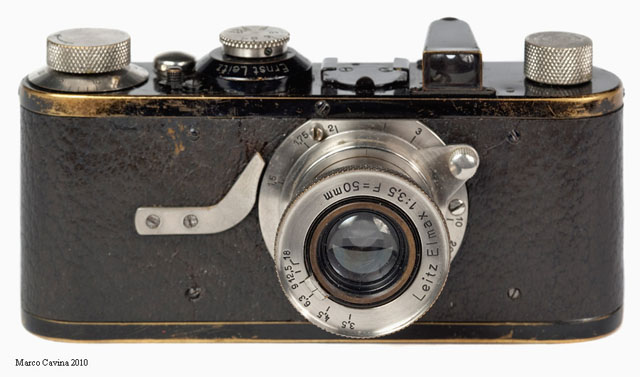
The Leitz Elmax 50mm f/3,5 (1925-1961) on the Leica A camera (1925) camera. Photo by Marco Cavina.
EVF = Electronic ViewFinder. A viewfinder where you look at a small screen through optics/prisms. The advantage is that you see what the sensor sees.
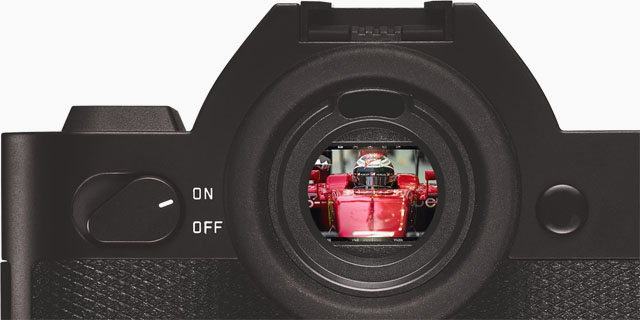
The EVF (Electronic Viewfinder) on the Leica SL 601.
EXIF =Exchangeable Image File, a file generated in camera and enclosed in the image file that contains recording information on the image such as shutter speed, exposure compensation, what metering system was used, aperture setting, ISO setting, date and time the image was taken, whitebalance, which lens was used, camera model and serial number. Some images may even store GPS information so you can see where the image were taken. The data from the EXIF file continues to follow any later editions of the image and can be read in photo editing software such as Capture One and Lightroom, as well as Photoshop (go to the menu File > File Info). There is also software available that can read EXIF data from any file, like Exifdata.com.
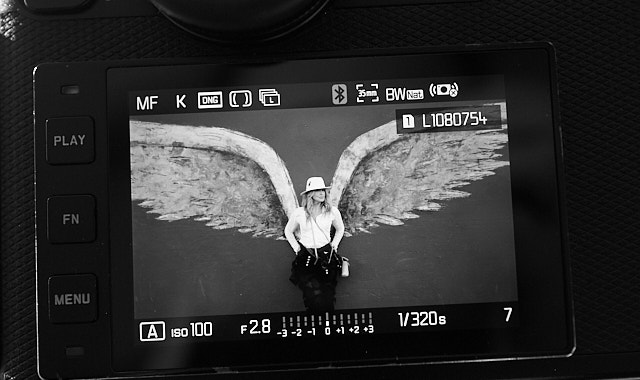
The EXIF data is all the information about shutter speed, metering method, ISO, etc. - and then some more that you don't see on the screen (such as camera model, serial number, lens used, etc).
Exposure Bracketing = The possibility to set the camera to automatically record a series of images where the exposure is above and below what the camera measures. The idea is that at least one of the images will be correctly exposed.
f/ (f-stop, also known as aperture).
f- (focal length). Often given in mm, for example 90mm. In the past they were often given in cm or inch, for example 9.5 cm or 3.2 inch.
f-stop = the ratio of the focal length (for example 50mm) of a camera lens to the diameter of the aperture being used for a particular shot. (E.g., f/8, indicating that the focal length is eight times the diameter of the aperture hole: 50mm/8 = 6,25 mm); or the other way around, the hole is the focal length divided with 8).
ORIGIN early 20th cent.: from f (denoting the focal length) and number.
One f-stop is a doubling or halving of the light going through the lens to the film, by adjusting the aperture riing. Adjusting the f-setting from f 1.4 to f.2.0 is halving the light that goes through the lens. Most Leica lenses has half f-stops to enable the photographer to adjust the light more precicely.
Filters = Glass filters you put in front of the lens. A much used filter is the claer UV filter that is supposed to protects the front of the lens. Other filters are color filters that add effects to black and white photography by changing the color balance. Other filters are ND (Neutral Density) filters that reduce the amount of light coming through (used for for example video recordings as video is usuallu filmed at 1/50th second shutter speed and thus most lenses are too bright wide open. Or they are used for long exposure photography in order to record for example stars movements over the sky. Other filters are filters that create star effects, or blur the view, and almost any effect you can think of.

A traditional Yellow filter in 49mm diameter to screw onto the front of the lens. The yellow filter is used for black and white photography where it slightly darkens skies, helps to cut through haze, and improves overall contrast. Yellows and reds within the scene are also lightened.
Flare = Burst of light. Internal reflections between (and within) lens elements inside a lens. Mostly, flare has a characteristic "space travel" look to it, making it cool. Particularly in older lenses with less or no coating of the glass surfaces to suppress this, it can be a really cool effect. In newer lens designs, the coatings and overall design try to suppress flare and any reflections to a degree, so that there is seldom any flare to be picked up (moving the lens to pick up a strong sunbeam), but instead a "milking out" (or "ghosting") of a circular area of the frame; meaning simply overexposed without any flare-looking flares.
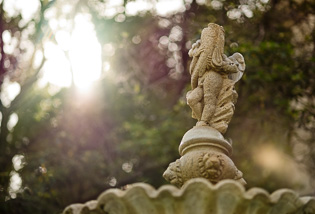 |
|
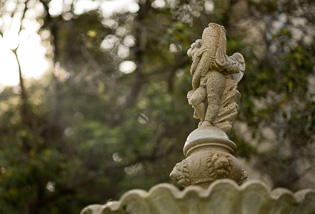 |
Sunlight creating (fairly supressed) flare in the bottom right quadrant of the image of a modern lens. |
|
The camera moved slightly to avoid the flare. |
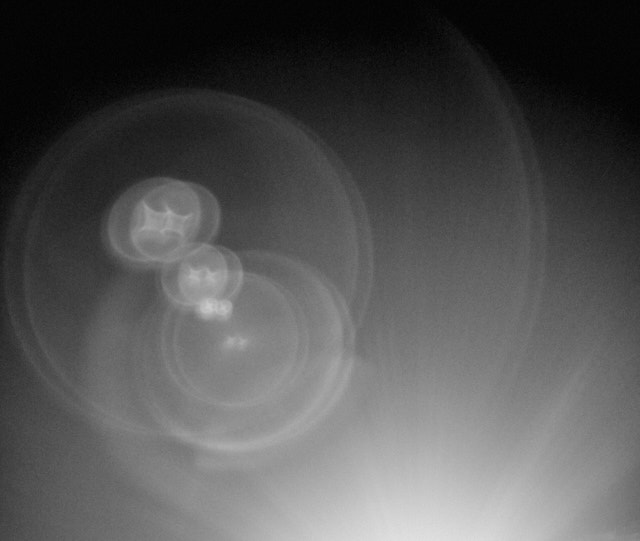
Older lenses with less coating, or without coating, are known to create flare that can look like this (Leica 50mm Summicron-M f/2.0 II Rigid model from the 1960's). © Thorsten Overgaard.
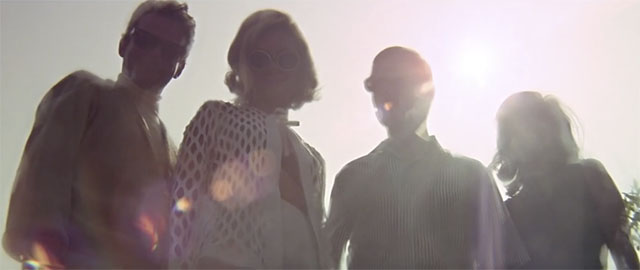
Lens flare in the movie, The Graduate (1967).

Lens flare in Mission Impossible Fallout (2019)
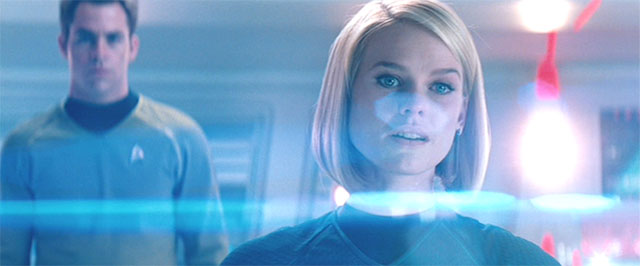
Lens Flare in Star Trek (2013). JJ Abrams famously said, "I know there's too much lens flare ... I just love it so much. But I think admitting you're an addict is the first step towards recovery (ha ha)"
|
FLE = See "Floating Elements"
Flickering in the EVF is very normal and will apear often without the vertical lines you see in the EVF will be in the picture.
| |
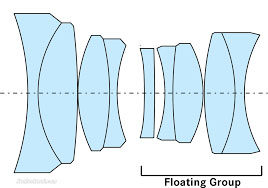 |
| |
Floating elements (a group of lenses or can also be s aingle lens element). . |
Floating Elements (FLE) = Near focus correction in a lens by having a single lens or a group of lenses floating independently of the other lenses. Most lenses are born with poor performance at their closest focusing distance. Center sharpness may be good, but aberrations and corner softness increase when you’re shooting closeups. Floating elements are lens elements outside of the primary focus group that change position when the lens is focused on a close object, correcting aberrations and improving close up performance.
Floating Elements originally was coined by Canon in the 1960's and quickly became the general term for this feature. Other brands came up with new names for the same thing, Minolta called it Floating Focusing, Nikon used the term Close-Range Correction (CRC), Leica call it FLE/Floating Elements.
Floating elements are for close-focus improvement of image quality and not for reducing "focus shift". Floating elements by themselves cannot reduce focus shift, but by reducing the impact of focus distance on performance, they give the designers more freedom in other areas - which could include minimising focus shift.
(As a side-note, when a lens "rattler when moved, it is not the floating elements "floating around" but can be the IS (Image Stabilization) elements for elense that has that, AF elements for auto focus lenses, or the aperture cage that rattles (as in the case of the Leica 35mm Summilux-M f/1.4 FLE - if you stop down the Summilux to f/16, the sound is usually not there).
| |
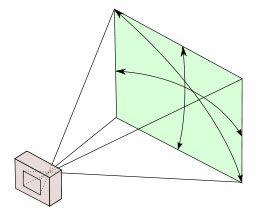 |
| |
A 28 mm lens has a 74° viewing angle |
| |
|
Focal length = Originally focal length referred to the distance from the sensor (or film in older days) to the center of focus inside the lens (28mm, 50mm, 400mm, etc). Today one call it effective focal length (EFL) as a 400mm lens is not nessesarily 400mm long due to optical constructions that can make it shorter. The 35-420mm zoom on the Leica V-Lux 1 is for example only ca. 135 mm long. Nobody uses that measurement, except those who construct lenses! For users of lenses, focal length refers to how wide the lens sees. The viewing angle, which is often given in for example 90° viewing angle for a 21mm lens, 74° viewing angle for a 28mm lens, 6° viewing angle for a 400mm lens, etc.
Each human eye individually has anywhere from a 120° to 200° angle of view, but focus only in the center.
Focus, in - Sharp and clear in appearance. Focus - “The burning point (of a lens or mirror)”. In Latin the word focus meant fireplace or hearth. The word was probably first employed outside of its Latin literal use as “the burning point of a lens or mirror” in optics, and then came to mean any central point. The German astronomer Johannes Kepler first recorded the word in this sense in 1604.
Focus shift = That the focus of a lens shifts as the aperture changes. For example, if one focus a 50mm lens at f/2.0 and then stop the aperture down to f/8, the focus may change, especially noticeable in close focusing. Modern lenses with floating elements (FLE) where the floating elements adjust for image quality in close-focusing may also help avoid focus shift.
Four Thirds - Also known as "4/3" - The Four Thirds System is a standard created by Olympus and Kodak for digital SLR camera design and development.
The system provides a standard which, with digital cameras and lenses available from multiple manufacturers, allows for the interchange of lenses and bodies from different manufacturers. Companies developing 4:3 cameras and/or lenses are Fuji, Kodak, Leica, Olympus, Panasonic, Sanyo, Sigma. See www.4-3system.com
A further development in this was Micro Four Thirds Systems.
Frame lines = the lines inside a viwfinder that indicates the edger of the frame. In a Leica M, the viewfinder always is as wide view as 24-28mm. A mechanical contach on the lens (triggers the camreas frame selector) so the viewfinder shows the frame line of that lens. In the Leica M, the frame lines comes in sets, so there are alwaus twop sets of frame lines shown at any time (see illustration below).
(This is different than in most cameras where you only see what the lens captures: SLR cameras was the evolution in 1940's where the image from the lens was displayed directly onto a matte screen inside the camera via a mirror.
Later mirrorless cameras, the viewfinder shows the exact picture that the sensor sees through the lens).
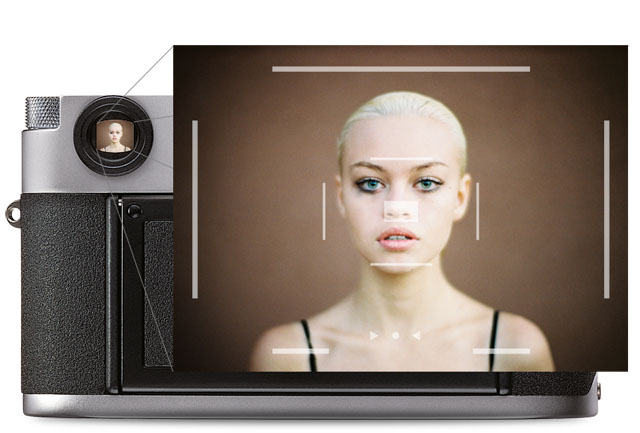
Frame lines of the Leica M, here showing the set of 35mm and 90mm framelines.
| |
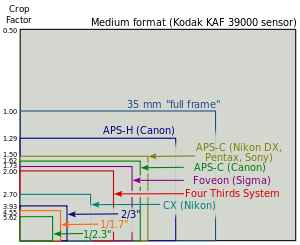 |
| |
Full Frame is "king of photography" |
| |
|
Full Frame (FF) = The size of the sensor is 24 x 36mm which is the format Oskar Barnack and Leica Camera AG invented with the first Leica that was introduced in 1925. Many other formats invented since, such as APS, APS-C and all usually refer to Full Frame ratio, by which it means what size they have compared to Full Frame. The "full frame" technically deifinition thouhg is a sensor that camtures the full frame in one go (as the early sensors as in Leica S1 scanned the image/senor over a period of time).
The 24 x 36mm Full Frame format is so "king of photography" that it has continued to be the ideal for all cameras. Besides this, there exists Large Format cameras such as 4x5" (100 x 125 mm) and Medium Format 6x6 (60 x 60mm amongst other sizes in that area).
Ghosting = Secondary light or image from internal reflections between (and within) lens elements inside a lens. The reflected light may not always be in focus, so overall it looks like a "milked out" image. A subject in focus has brightened patches in front of it that come from reflections inside the lens. the most elementary look of ghosting is when you look in a rear-view mirror in a car at night and you see doubles of the headlights behind you (a strong one and a weaker one), because the headlights are reflected in a layer of clear glass on top of the mirror glass.
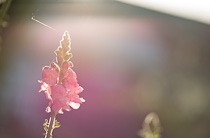 |
|
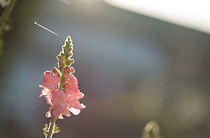 |
|
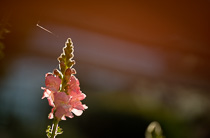 |
| Degrees of ghosting from strong sunlight entering from outside the frame. To the right the outside light has been shielded with a shade. |
ISO = Light sensitivity of the camera sensor is given in ISO (International Organization for Standardization). It's a standard that was used in film and is now used in all digital cameras also. The base ISO for the Leica TL2 sensor is around 100-150 which means that this is what the sensor "sees". All other levels are computer algorithms calculating the effect as if the sensor could "see" more (hence noise at higher ISO levels).
ISO goes in steps of doubling: When the ISO is raised from 100 ISO to 200 ISO, the camera only need half the amount of light to make the same picture. For each step in ISO to 400, 800, 1600, 3200, etc. the light sensitivity is doubled for the sensor (and the camera sensor only need half the light of the previous ISO to record the same image).
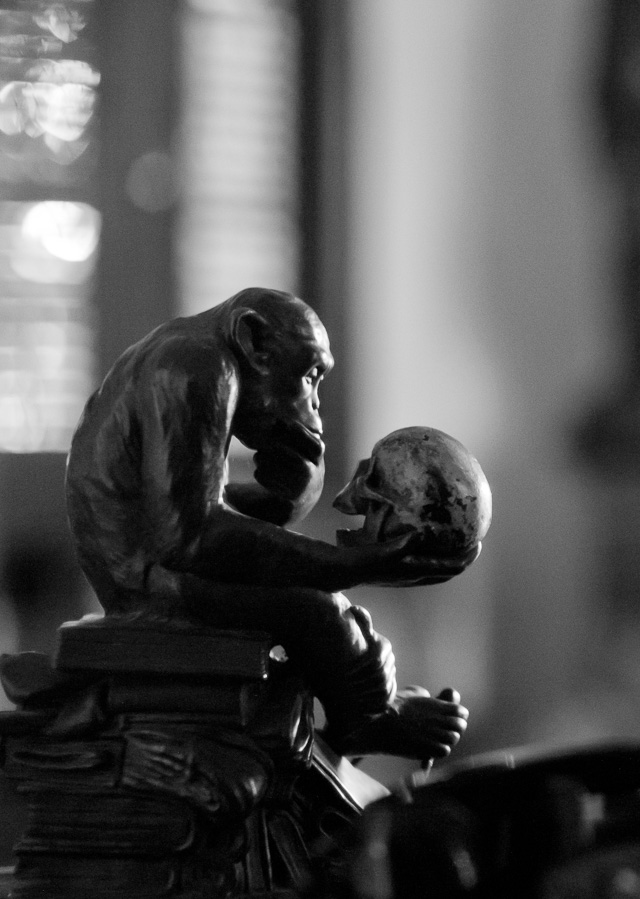
6400 ISO indoor photo. With modern cameras the ISO can go to 3200, 6400, 12,800 and even higher without loss of dynamic range and without digital noise. Leica M10 with Leica 50mm Noctilux-M ASPH f/0.95. © 2017 Thorsten Overgaard.
JPEG = A standard for picture format made in the 1990's by Joint Photographic Experts Group). Mostly referred to as JPG as in L1003455.JPG which would be the name for a JPG file from the camera.
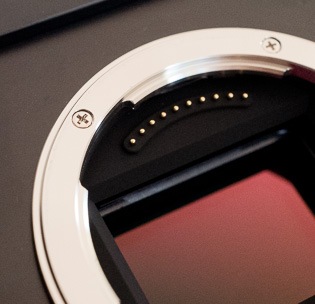
Leica L-mount bayonet. |
L-mount = Lens bayonet mount introduced by Leica for the Leica T in 2014 and used for Leica TL, Leica CL and Leica SL. Since 2019 the L-mount has also been shared with Panasonic, Sigma and others who produce cameras and lenses that are compatible with Leica L cameras and lenses lenses, and vice versa.
The L-mount has a diameter of 51.6 millimeter which is big enough for any design we could wish to design, and at the same time compact enough for the L-mount to be used on compact cameras such as Leica TL and Leica CL with APS-C sensor sizes. Leica chief lens designer Peter Karbe spent years calculating this ideal size, large enouhg for any design, yet as compact as possible. Read my article "Small Camera, Large Print" (2019) with interview with lens designer Peter Karbe for more.
After Leica introduced this new bayonet mount in 2014, Nikon (Z-mount 55mm), Fuji (G-mount 65mm) and Canon (RF-mount 54mm) followed with similar new bayonet mounts, but with bigger diameter, making them less able to produce compact lenses.

A screen on a camera is often referred to as "LCD Screen" for no particular reason (illustration is the back of the Leica Q2 special limited "James Bond/Daniel Craig & Greg Williams" version (2021).
LCD = Screen. LCD itself means liquid crystal display, which is slightly irrelevant (what it is made of) as the expression is mostly used to simply mean "screen".
Leica = A compound word derived from " (Lei)tz" and "(ca)mera". Apparently they were originally going to use "LECA", but another camera company already used a similar name in France, so they inserted the 'i' to prevent any confusion.
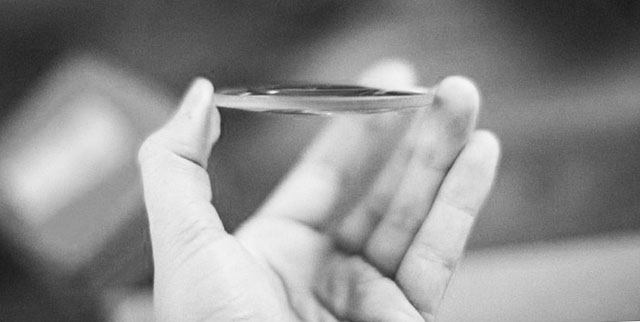
The word lens derives from lentil, because of the similar shape.
Lens - A piece of glass or similarly transparent material (like water or plastic) that has a shape so that it can direct light rays. The word “Lens” is used both for single piece of glass as well as a camera lens with several lenses that works together. From ‘lentil’ because similar in shape.
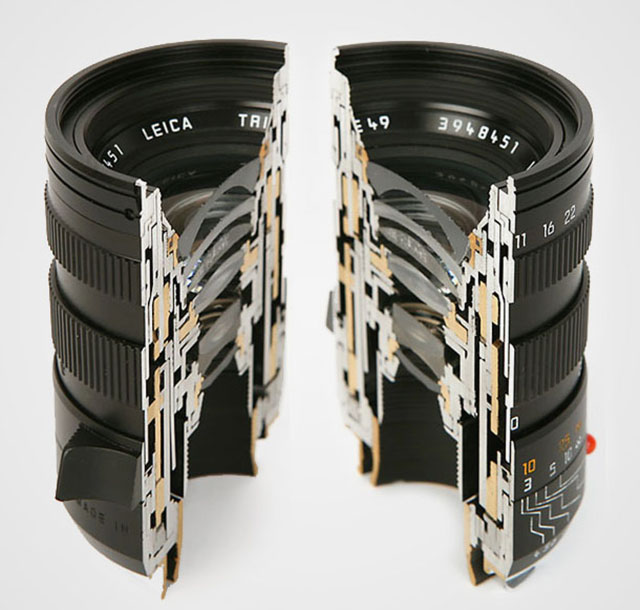
A camera lens consists of several shaped lens elements of glass. The lenses can also be made of simple cheap plastic as in "kit lenses" (sold with a camera as a kit to make a workable cheap package), but it is mostly very exotic glass (that can be heavy or light in weight, very hard or very soft in surface (esay to scratch or very resistant) with each optical glass recipe made to develop very specific qualities in how the glass and final lens treats light. As a general rule, high quality glass is soft, which is why some lenses has as their front and back element, a non-optical lens element that is there to protect the actual optical glass from scratches. As a side noite, Leica made their own glass laboraty, The Leitz Glass Laboratory, from 1949-1989, which deveopled 35 new glass types and took out more than 2,000 patents of glass recipes from more than 50,000 experimental melts of glass. These designs, or recipes, are still used today by the lens designers to obtain very specific optical results. Other lens manufacturers in the world of course have had their glass laboratories, and today one will find an interchange of glass patents amongst production facilities that service Leica, Nikon,, Fuji and so on with optical lens elements.
Lens hood = (also called a Lens shade or Ventilated Shade). A tube or ring attached to the front of a camera lens to prevent unwanted light from reaching the lens and sensor. In the past where lenses were not coated to prevent internal reflections inside the lens, the lens hood was often essential. These days where lenses are coated, the shade serves just as much as decoration and protection (bumper) as well.
ORIGIN Old English hod; related to Dutch hoed, German Hut 'hat,' also to hat.
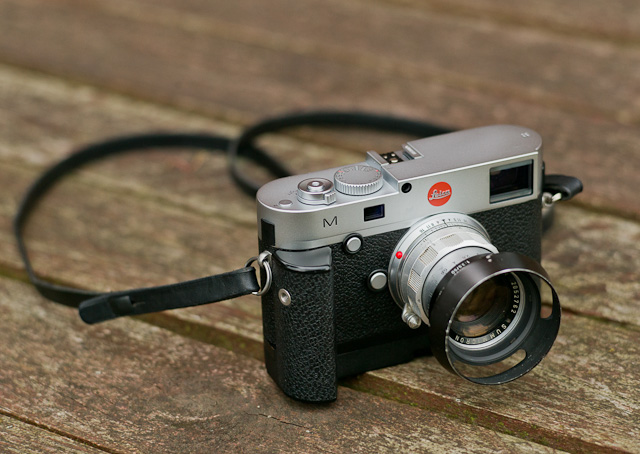
Lens hood or Lens shade or ventilated shade. In the picture is a ventilated shade with clip-on mount to a 50mm f/2.0 lens. Ventilated means it has openings that allow for view from the viewfinder.
Lens names of Leica distinguish which widest aperture the lens has:
| Noctilux |
f/0.95 - f/1.25 |
| Nocticron |
f/ 1.2 (Leica-designed Panasonic lens) |
| Summilux |
f/ 1.4 - f/1.7 |
| Summicron |
f/2.0 |
| Summarit |
f/2.4 - 2.5 |
| Hektor |
f/1.9 - f/6.3 (used 1930-1960 for screw mount lenses only) |
| Elmarit |
f/2.8 |
| Elmar |
f/2.8 - f/4.5 |
| Elmax |
f/3.5 (only used 1921-1925 for the 50mm Elmax f/3.5) |
| Telyt |
f/2.8 - f/6.8 (used for tele lenses) |
Light = Tiny particles called photons that behaves like both waves and particles. Light makes objects visible by reflecting off of them, and in photography that reflecting off of subjects is what creates textures, shapes, colors and luminance. Light in its natural form (emanating from the sun) also gives life to plants and living things, and makes (most) people happier. So far, nobody has been able to determine exactly what light is. The word photography means “writing with light” (photo = light, -graphy = writing). Read more about light in my book Finding the Magic of Light.
Live View = This is the ability to see the image the sensor see, live, via the screen on the back of the camera, or via an electronic viewfinder (EVF).
LMT - Leica Thread-Mount: Also known as M39, is the screw mounted lenses for Leica cameras. It’s a simple as that; you screw on the lens, and back in 1932, the possibility to change the lens was the big news hwen introduced by Leica on the Leica III. The M39 system was updated with the M Bayonet from 1954 for the Leica M3. The M bayonet is a quick way to change lenses and is the current mount for Leica M digital rangefinders.
M (as in "M3", "M6", "M7" etc.)
A) The M originally stands for "Messsucher", which is German "Meßsucher" for "Rangefinder". The "3" in M3 was chosen because of the three bright line finders for the 50, 90 and 135 mm lenses. Later the numbers of the M cameras were more or less chosen to follow each other.
M-body evolution in chronologic order:
M3 - MP - M2 - M1 - MD - MDA - M4 - M5 - CL - MD-2 - M4-2 - M4-P - M6 - M6 TTL - M7 - MP - M8 - M8.2 - M9 - M9-P - MM (black and white sensor) - ME (Type 220) - Leica M (Type 240) - Leica M-P 240 - Leica M 246 Monochrom - Leica M-A (type 127, film camera) - Leica M 262 - Leica M-D 262 (without a screen) - Leica M10 - Leica M10-P, Leica M10 Monochrom, Leica M10-R.
B) M also refer to M-mount as the M bayonet that couple the Leica M lenses to the Leica M camera. Before the M bayonet the coupling between the camera and lens was screwmount.
C)
M nowadays refer to the Leica M line of cameras rather than the "Messsucher".
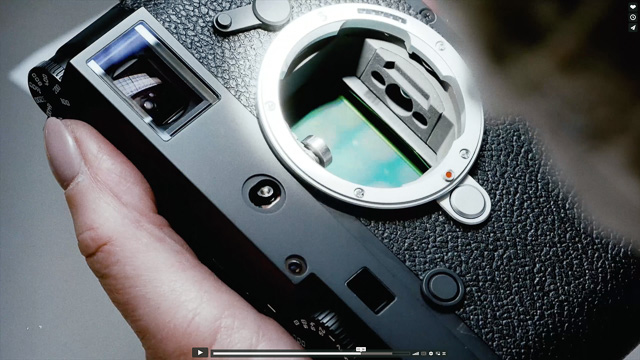
The Leica M bayonet on the Leica M10.
- M-mount: The Leica M-mount is a bayonet that was introduced with the Leica M3 camera in 1954 and has been used on all subsequent Leica M cameras, as well as on the Epson R-D1, Konica Hexar RF, Minolta CLE, Ricoh GXR, Rollei 35RF, Voigtländer Bessa, and Zeiss Ikon cameras (2019).
Compared to the previous screw mount (M39), the M
mount requires a quick turn of the lens, and ithe lens is mounted. The patent for the M-bayonet ("Bajonettvorrichtung für die lösbare Verbindung zweier Kamerateile") was registered by Ernst Leitz GmbH 10 February 1950 (patent number DE853384). Hugo Wehrenfennig was credited with the invention.
M9
Leica M9 is a model name for the Leica M9 that was introduced on September 9, 2009 (as the first full-frame digital Leica M). It was the latest model designation using the M and a number. From their next model, Leica Camera AG introduced a new model system so each camera would simply be a Leica M but then with a model designation like Typ 240, Typ 246, Typ M-D 262 and so on. The idea was inspired from Apple who name their computers for example MacBook Pro and then it has a sub- model number designation which model it is (and which would define speed of processor, etc).
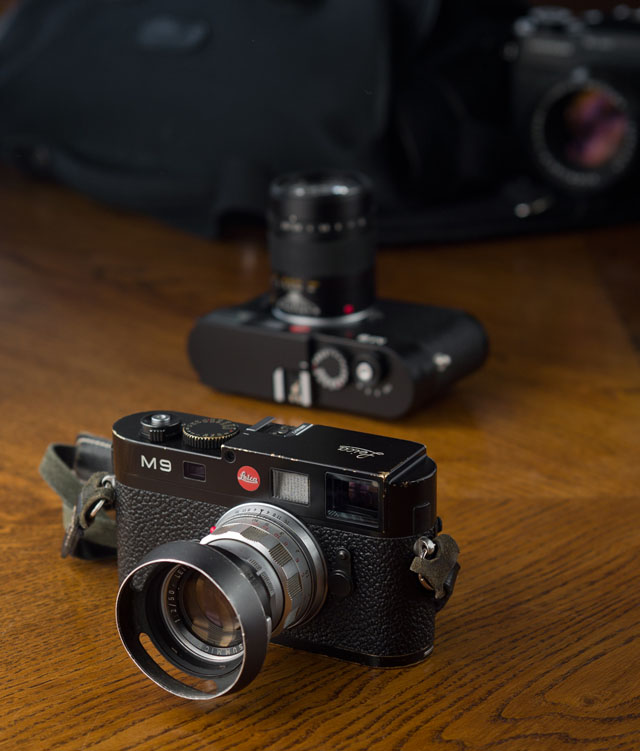
Leica M9 digital rangefinder (2009). © Thorsten Overgaard.
MACRO = Macro lens. The Leica 60mm APO-Elmarit-Macro-R ASPH f/2.8 is a 60mm lens for portraits, landscapes, etc. as well as a near focus macro lens. The Leica Q lens can be turned to Macro which enables you to go close so as to enlarge smaller subjects. The Leica M cameras becomes Macro when you add a Macro ring "Oufro" or "Leica Macro M Adapter" that increases the lens' distance to the sensor. The word macro comes from Greek makros ‘long, large.’
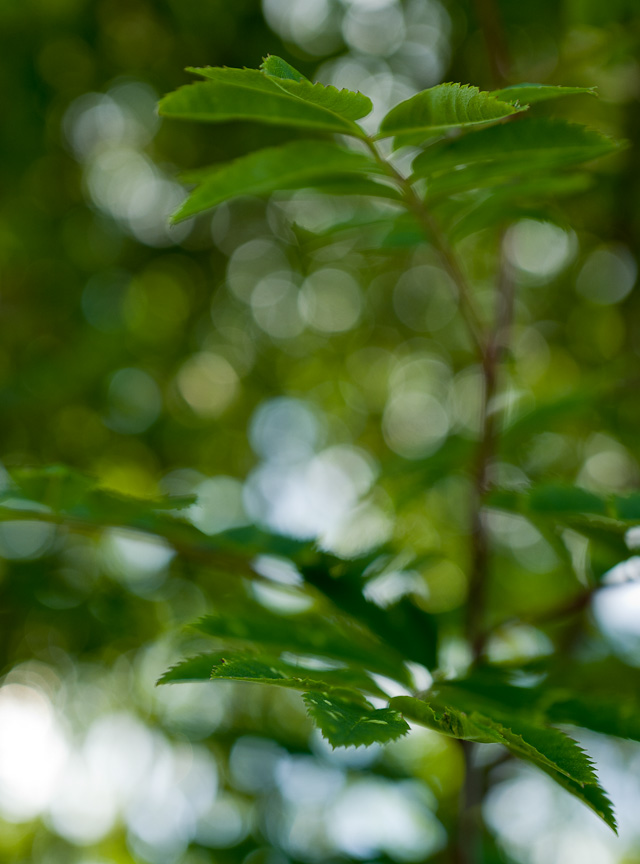
The word macro comes from Greek makros ‘long, large.’ The Leica 60mm APO-Elmarit-Macro ASPH f/2.8 is both a 60mm lens for portraits, landscapes, etc. as well as a near focus macro. © Thorsten Overgaard.
Mandler, Dr. Walter (1922 - 2005)
Legendary Leica lens designer and CEO of Ernst Leitz Canada (ELCAN) 1952-1985. Read more in Leica History.
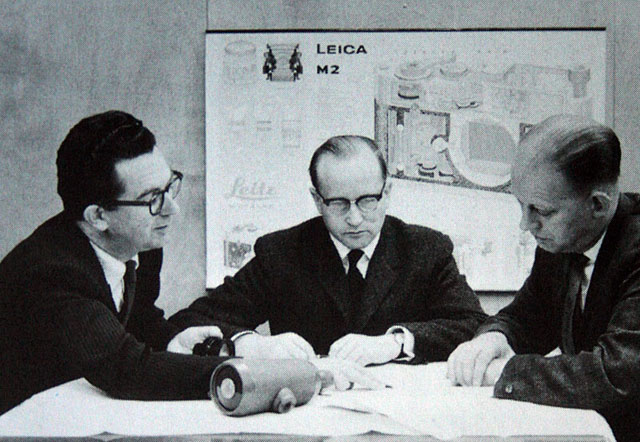
Dr. Walter Mandler (center) at the Ernst Leitz Camera factory.
Megapixel (or MP) - Millions of pixels. See pixel further down. How many units of RGB is recorded by a given sensor by taking height x widt. A Leica M10 delivers a 5952 x 3968 pixel file = 23,617,536 piexls. On a screen the resolution you choose determines the size of the image. Say you have a 5000 pixel wide file and your screen is set for 8000 pixels wide. Then the image will fill only the 5000 pixels fo the 8000 and the rest will be empty, If you then change the screen resolution to 5000 wide, the image would be able to fill out the whole screen.
Meßsucher = (rangefinder or distance finder) = Mess = range, sucher = finder. It is always correctly written with the "ß". There are technically not three "s", rather the "ß" and one "s" because it is a word constructed by the combining of two precise words.
MF (Manual Focus) for lenses that are focused by hands, as opposed to Auto Focus.
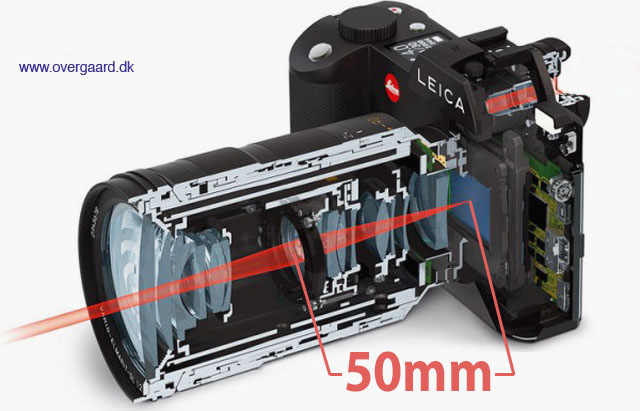
Focal length is determined by the distance from focus inside the lens to sensor surface to, and is given in milliemeters (mm). © Thorsten Overgaard.
mm = millimeter(s), as in a 50mm lens. (Earlier in lens history lenses focal length was given in cm = centimeters; as in a 5 cm lens). For anyone used to centimeters and millimeters, it’s no wonder. But if you grew up with inches, feet and yards, you may have had a hard time grasping what a 50mm lens was. But as lenses were designed first in Europe, the metric system with centimeters and millimeters was used to describe lenses.
(Leica and others made lenses for a while with either meter scale or feet scale; but then eventually started including meter and feet on all the lenses (two scales, usually distinguished with different colors). However, the lens' focal length remained always 50mm, 75mm and so on).
The reason a 50mm lens is a 50mm lens is that there is 50mm from the focus plane (the film or sensor surface) to the center of focus inside the lens. When photography was a young subject, it was engineers who made it all, and the users were expected to understand. The engineers were so into the making of the lenses, that it apparently never dawned upon them that today’s users would think of a 21mm lens as a wide angle lens rather than a lens where there is 21mm from the sensor to the center of focus inside the optics.
MP
a) Stands for Mechanical Perfection, as in the Leica M-P.
b) Megapixels (millions of pixels).
c) Megaphotosites (millions of photosites).
ND
Neutral Density filters are grey filters function as 'sunglasses' for lenses. They simply block the light so that a lens can work at for example f/0.95 or f/2.0 in sunshine.
If a camera is set to 200 ISO and the maximum shutter speed is 1/4.000, this will usually result that the lens has to be at f/2.8 or smaller aperture in sunshine. Else the image will over-exposed. So in order til stay within the maximum shutter speed of 1/4.000 and still use a lightstrong lens wide open, one mount a ND-filter that reduce the light with 3 stops (8X) or 6 stops (64x).
For video ND-filters are used quite a lot (as the shutter speed for video is 1/60), and ND-filters are also used to reduce the light for really long multi-exposures at night (stop-motion video and stills).
ND-filters also exist as variable ND-filters so one can adjust the amount of light going through from for example 1 stop (2X) to 6 stops (64X).
ND-filters also exist as graduated ND-filters where the top of the filter is dark and then gradually tone over in no filter (so as to reduce the skylight in a landscape for example).
The ND filters are called Neutral because it is a neutral filter. It doesn't change colors, only the amount of light.
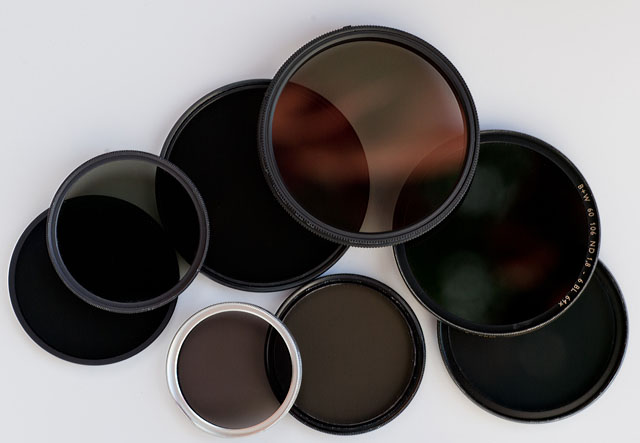
ND-filters / gray-filters.
Noctilux = Also known as "King of the Night" because "Nocti" means Night and "Lux" means Light. The f/1.0 lenes from Leica are named "Noctilux". The first Leica Noctilux lens was the 50mm Noctilux f/1.2 which shortly after it's introduction was improved to the 50mm Noctilux f/1.0. In the current model the f-stop has been improved further to f/0.95.
"Noctilux" refers to the maximum lens aperture - here f1.0 . "Nocti" for nocturnal (occurring or happening at night; ORIGIN late 15th cent.: from late Latin nocturnalis, from Latin nocturnus ‘of the night,’ from nox, noct- ‘night.), "lux" for light. The Leica Noctilux 50mm f1.0 is famous for enabling the photographer to take photos even there is only candleligts to lit the scene. See the article "Leica Noctilux - King of the Night"
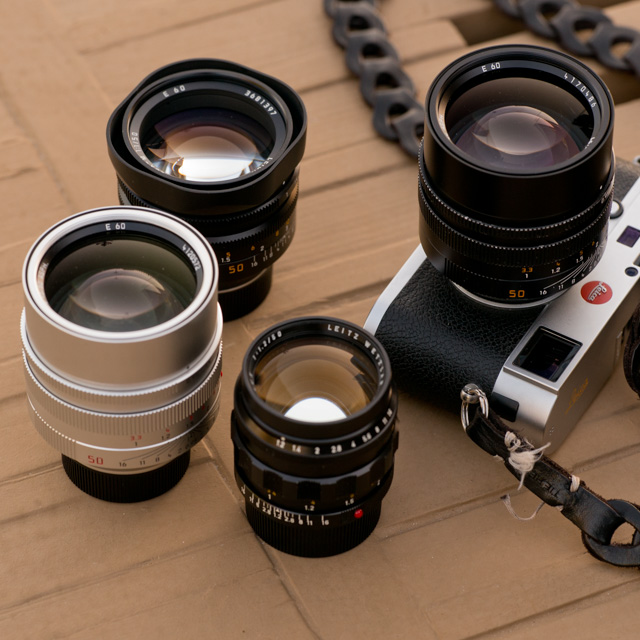
The Noctilux "King of the Night" lens. From left the f/0.95 in silver (same on the camera, in black), the f/1.0 in the back and the rare and expensive first model, the f/1.2 in the front.
No.
Number, on this site Leica catalog numbers or order numbers. Some the numbers changed depending on the number of cams in the lens: The Elmarit-R f2.8/135mm started life as No. 11 111, however when fitted with 2 cams for the SL became No. 11 211, yet another No. for the 3 cams lens and a fourth number for 3 cam only at the end of its life. Number changes also applied to M lenses depending on whether they were screw-thread, bayonet or for M3 with “spectacles”. Thus the No. in the Thorsten Overgaard Leica Lens Compendium list is a guideline but not a comlete list of existing catalog numbers.
Optic = Eye or vision. From French optique or medieval Latin opticus, from Greek optikos, from optos ‘seen.’
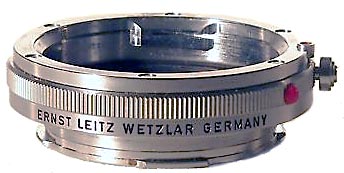
Oufro (model 16469Y)
An original Leitz Extension Ring (produced 1959-1983 as part no. 16469). Used with Oubio for all the longer (125mm+) Visoflex lenses and without OUBIO for 35/50mm. OUFRO can be stacked for greater magnification and will work on the Leica M Type 240 as macro for all lenses (including the Noctilux, 90mm APO-Summicron and even 21mm lenses).
 The OUFTO on Leica M Type 240 with Leica 90mm APO-Summicron-M ASPH f/2.0. The OUFTO on Leica M Type 240 with Leica 90mm APO-Summicron-M ASPH f/2.0.
Perspective = The way objects appear to the eye; their relative position and distance. Also, selective focus (foreground and background out of focus) can change the perception of perspective (also see Three-dimensional). A wide angle "widens" the perspective and makes objects further away appear smaller than they are to the eye; and objects closer, relatively larger than they are to the eye. A tele lens will "flatten" the perspective and often objects further away will appear relatively larger than close objects than they are in real life. A 50mm lens is the one closest to the perspective and enlargement ratio of the human eye.
The word Perspective comes from the latin word for optics (perspicere, per- ‘through’ + specere ‘to look’), and so-called Renaissance painting is simply painting done within the framework of optics and the linear perspective it presents.
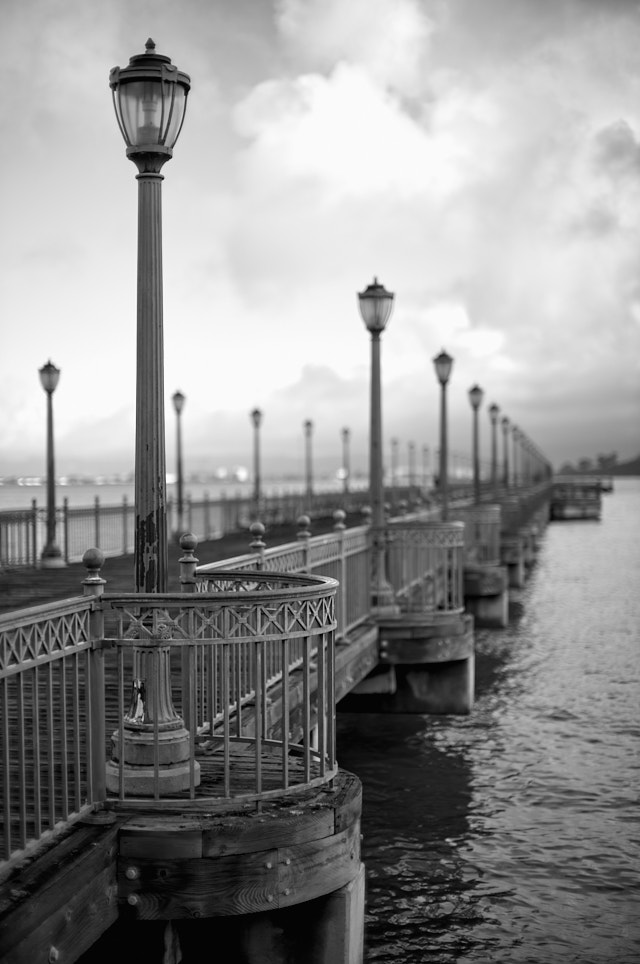
Perspective is relative position and distance. The objects nearby are larger than objects far away. This is how the eye and the mind calculate distance. The eye and the camera automatically captures perspective. In darwing and painting one would see "stupid" two-dimensional drawings 500 years B.C where elements were thrown into the mix without considering that a an object far away must be smaller than if close to the viewer. The word "perspective" comes from "to look through (optics)". Pier 7 in San Francisco by Thorsten Overgaard. Leica M11 with Leica 50mm Noctilux-M ASPH f/0.95.
| |
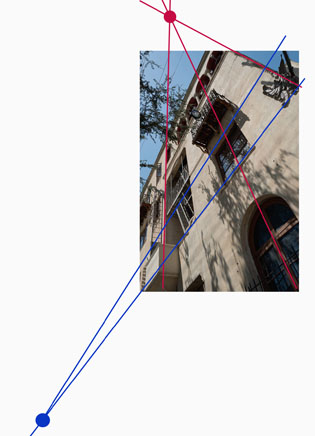 |
| |
Vanishing points are the points where lines meet. This is how you make perspective in paintings and drawings (and some times make movie sets or theatre stages appear more three-dimensional than they are) |
| |
|
Painters works with vanishing points, which is where the lines meet, so as to create an illusion of perspective and three-dimensional effect on a two-dimensional painting or drawing.
The human eye corrects for perspective to an extreme degree. We always see vertical lines vertical and horisontal lines horisontal: The eye has a angle of view equivalent to an 8mm wide angle lens, a size ratio equivalent to a 50mm lens and we focus on relatively small area of the viewing field - one at the time. Three things happens that are worth paying attention to:
1) We compile areas of our view that we focus on, to one conceptual image that "we see". Ansel Adams, the great American landscape photographer pointed out that a large camera used for landscape photography capture every detail in focus and sharp so you can view it in detail after; but the eye does not see everything in focus when you try to compose the landscape photography, the eye scans only one part at a time and stitch the idea together. This makes composing or prevision of a landscape photography challenging.
2) We compile areas of our view that we individually adjust the exposure of. A camera adjust the exposure of the whole image frame to one exposure. That's why what looks like a nice picture to the eye of houses in sunshine with a blue sky above, becomes a photograph of darker buildings with a bright white sky: The camera simply can't take one picture that compare to what we "compiled" with our eyes, adjusting for each type of light.
3) Objects (on a table, for example) in the bottom of our viewing field will appear 100% perspective corrected - to a degree that it is impossible to correct in optics, with or without software correction. A wide angle lens, even with little distortion, will exaggerate the proportions of the closet part so it - to the eye - looks wrong.
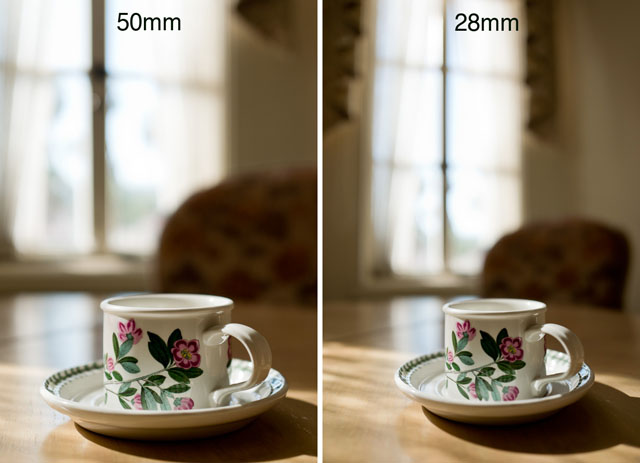
Perspective distortion: Comparing these two photographs you can see how the cup stretches in the 28mm wide angle photograph compared to the 50mm photograph. Both actually has a little stretch because both the cup is in the edge of the frame in both photographs. © Thorsten Overgaard.
Perspective correction - In software like Adobe Lightroom and Capture One Pro there is often a feature to correct perspective (and distortion) like seen below. You can change perspective this way, or at least make believe: If you correct a tall building on teh vertical lines, you will notice that the height of the windows doesn't match the perspective. If the building is with straight lines, the windows should all be of the same size. But a tall building seen from below and corrected with software will have taller windows (closer to camera) in the bottom than in the top (further away from the camera originally).
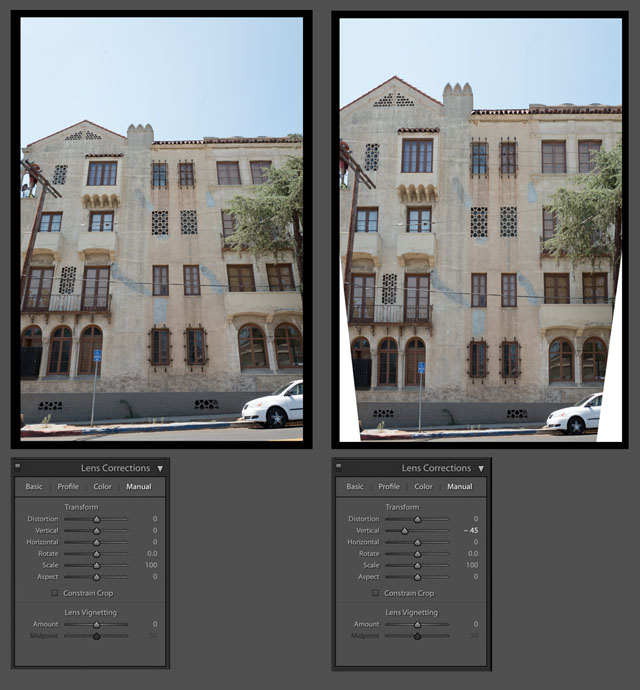
Perspective correction in Adobe Lightroom. © 2017 Thorsten Overgaard.
| |
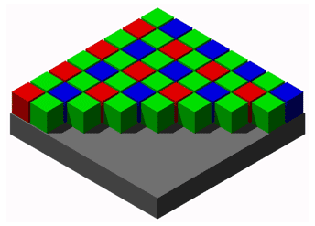 |
| |
A graphic illustration of the typical Bayer Color Filter Array on an RGB sensor. It's called a Bayer filter because Bryce Bayer of Eastman Kodak invented the technology of filtering incoming light into RGB and distribute it into the the photosites that each read just one color (R/G/G/B). |
| |
|
Photosite - The unit in a digital camera sensor that records intensity of either red, green or blue. Unlike the output of a sensor, measured in pixels (and where each pixel contains RGB), the photosite records only one color each, and it's intensity (how bright it is). A photosite can not distinguish colors, which is why there is a Color Filter Array (basically a prism) above them to filter the colors and send information to the photosite if 's a R, G og B color. See illustration below. In a monochrome sensor (as in the Leica M Monochrom and the Phase One Achromatic), all photosites are recording intensity of light only as there is no concern which color it is, and there is no color filter.
The ratio of photosites to pixels is not a given. Each block of 4 contiguous photosites contains one photosite sensitive to low wavelengths (blue), one photosite sensitive to high wavelengths (red), and two identical photosites sensitive to medium wavelengths (green). So four photosites would be the minimum to create one 'full-color' pixel. Apart from that, depends on the sensor specifications, which is different from brand to brand. Sometimes four photosites (two Green, one Red and one Blue) makes up one pixel, at other times it's more photosites to one pixel; and there is also pixels sampled from photosites across (sort of overlapping patterns).
Pixel - Made up word from Pix (picture) and el (element). A pixel is the smallest full-color (RGB) element in a digital imaging device. The physical size of a pixel depends on how you've set the resolution for the display screen. The color and tonal intensity of a pixel are variable, meaning that each pixel contains RGB. This is different from a camera sensor's small eyes (photosite) that are an intensity of either red, green or blue. You could say that the digital sensor's photosite (where each unit collects just one color; red, green or blue) is the input technology, whereas the pixels on a screen (where each pixel contains red, green and blue) is the output device. So while sensors are measured in megapixels (mega = million), it's their output unit of pixels, and not the input unit of photosites that is measured and stated. See illustration below.
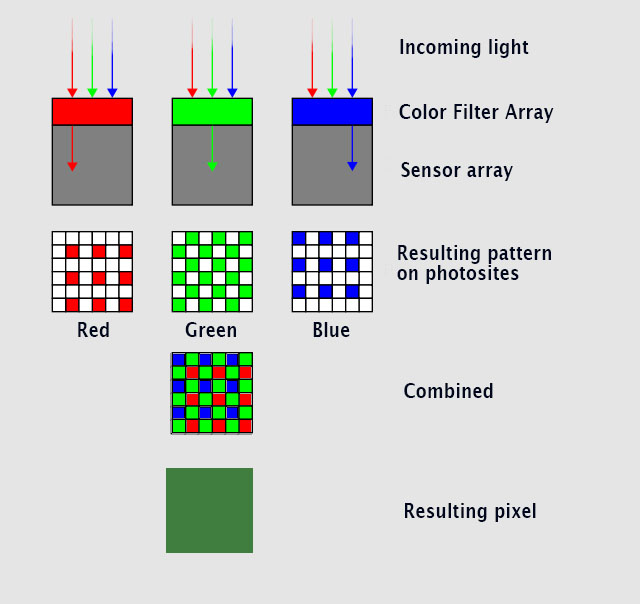
Here's an illustration of how light goes through a color filter that enables the underlying photosites to each record if it';s an R, G or B color - combined - makes up one pixel containing RGB. © Thorsten Overgaard.
R = Resolution, in the name Leica M10-R camera model (2020).
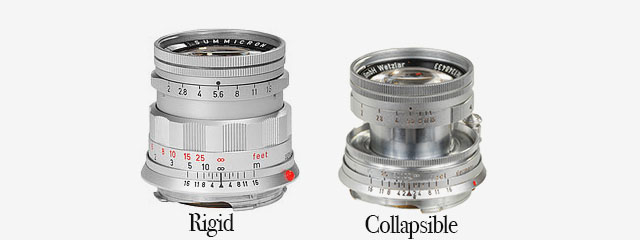
Rigid - Refers usually to the Leica 50mm Summicron-M f/2.0 "Rigid" of 1956.
It is called "Rigid" because, unlike the 50mm Collapsible, this one is not able to be changed.
Rigid means stiff, uable to be forced out of shape. Not able to be changed. From Latin rigere, "be stiff".
The name is a little confusion nowadays as all or most lenses are rigid today, but back in 1925-1956, many lenses were collapsible so the camera was compact when not in use. Just like compact cameras today often has a lens that extrudes when the camera is turned on, and collaps into the camera body when the camera is turned off.
RF
(R)ange (F)inder - the mechano-optical mechanism which allows M Leicas to focus.
Alternative meaning - RF is also shorthand for Hexar RF , Konica's motorised "M-lens-compatible" rangefinder camera released in 2000.
S = Single image. When the ring by the shutter release on top of the camera (or in the menu of a digital camera in case it does not have this ring on the ourside) is moved from OFF to S, the camera takes only one photo at the time (Single). The other possibility is Continuous where the camera takes pictures continiously as long as the shutter release button is helt down. (see above).
Saturation: How colorful, intense or pure the color is. Less saturation would be less colorful, more saturation would be more colorful. In today’s photography, de-saturating a photo on the computer will gradually make it less and less colorful; and full de-saturation would make it into a black and white photo.
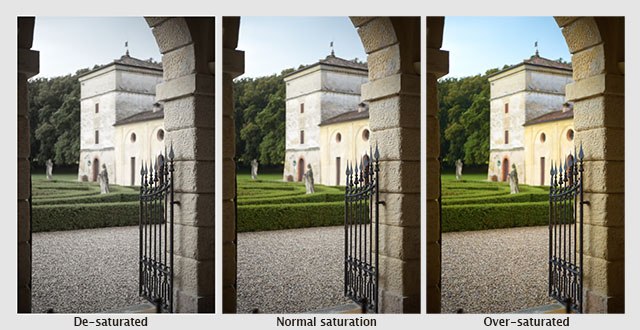
A photo from Verona, Italy de-saturated, normal saturated and over-saturated. © Thorsten Overgaard.
Sensor = A device that detects a physical property (like light) and records it. A camera sensor is a plane plate with thousands of small “eyes” with (photosites) a lens in front of each (CFA, Color Filter Array), which each individually records the amount of red, green and blue light rays that comes through the lens. Together, Red, Green and Blue form all colors of the spectrum, which becomes a pixel. Sensor comes from Latin sens- ‘perceived’.
Sharpness - See “Focus”
Shutter speed dial - The dial on top of the Leica M where you can set the shutter speed manually. It can also be set to A which stands for Aperture Priority (where the camera suggests a shutter speed; or when you move the dial away from A, the camera will show arrows in the viewfinder, suggesting which direction to change the Aperture to, to get the correct exposure).
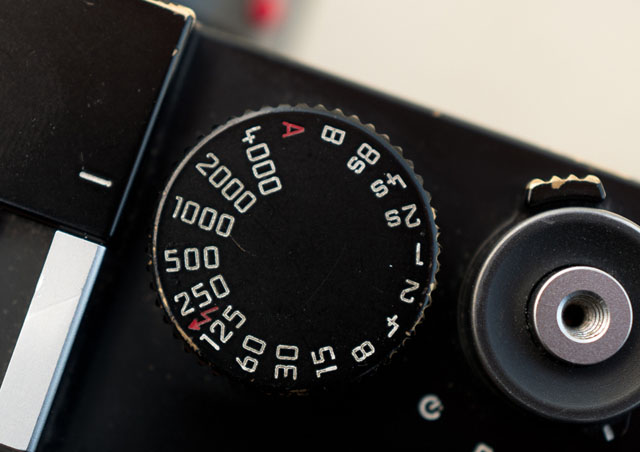
Shutter speed dial set to 1/1000 of a second.
| |
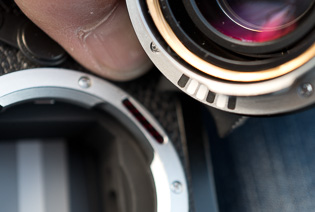 |
| |
The 6-bit code on the flange of the lens is read by the sensor on the Leica M bayonet of all digital Leica M cameras since 2006. © Thorsten Overgaard. |
| |
|
Six-bit code (6-bit code) - An engraving on the flange of M-lenses that makes it possible for digital M-cameras to recognize the lens that has been mounted. The camera can include information on the attached lens and its focal length in EXIF data and make digital corrections for lens-specific flaws, such as color-cast or vignetting. Six-bit coding was introduced for all M-lenses sold since 2006, but many older lenses can be retrofitted with the code at Leica Camera AG in Wetzlar.
SL = Abbreviation for Single-Lens as in the Leica SL that is a camera without reflex (mirror).
SLR = Abbreviation for Single-Lens Reflex; the lens that forms the image on the film/sensor also provides the image in the viewfinder via a mirror. Newer camera models has aen EVF (Electronic Viewfinder) that displays in the viewfinder what the sensor sees in real-time.
| |
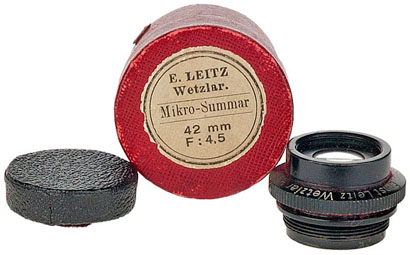 |
| |
Leitz Wetzlar Mikro-Summar 42mm f/4.5 lens anno 1910 might be the first lens carrying the name Summar. |
Summar - (or a story of name development)
The 1933 lens 50mm f2.0 Summar: It started out as Summar(f2.0), then the Summitar (f2.0 in 1939), then the Summarex(f1.5 in 1948), then the Summaron(35mm f.2.8 in 1948, then later f2.0, f3.5 and f5.6 lenses), then the Summarit (f1.5 in 1949 and used again for the 40mm f2.4 on the Leica Minilux in 1995, then again for the 35mm, 50mm, 75mm and 90mm Summarit f2.5 in 2007) then the Summicron(f2.0 in 1953 for the collabsible 50mm) and finally the Summilux(50mm f1.4 in 1959).
ORIGIN of Summar is unknown.
Summarex
The great thing about being a lens designer is that you get to name the lens. Dr. Max Berek who worked for Leitz from 1912 till his death in 1949 named lenses after his two favorite dogs. One was Sumamrex named after his dog Rex, the other Hektor named after his dog Hektor.
Summarit
Refers to the maximum lens aperture - here f/1.5.
Summicron = Refers to the maximum lens aperture - here f/2.0 . There are many guesses how this name came about, a popular one being that the "summi" came from "summit" (summit means the highest point of a hill or mountain; the highest attainable level of achievement) while the "cron" came from "chroma" (ie. for colour). Not so: The name (Summi)cron was used because the lens used Crown glass for the first time, which Leitz bought from Chance Brothers in England. The first batch of lenses were named Summikron (Crown = Krone in Deutsch). The Summi(cron) is a development from the orignal Summar (the 50mm f2.0 lens anno 1933). Vario-Summicron, Vario-Elmarit is Leica Camera AG's name for zoom lenses, for example the Vario-Summicron f/2.0 as the one that is on the Leica Digilux 2.
Summilux = Refers to the maximum lens aperture - here f/1.4 , "-lux" added for "light" (ie. the enhanced light gathering abilities). In Leica terminology a Summilux is always a f/1.4 lens and a Summicron is a f/2.0 lens.
Telyt
Lens nomenclature - short-hand for " telephoto " (tele- is a combining form, meaning to or at a distance) and used in names of instruments for operating over long distances : telemeter. The name has been used for a number of tele lenses from Leica.
ORIGIN: from Greek t?le- ‘far off.’
Three-dimensional = Having the three dimensions of height, width and depth. In photography and lens design, three-dimensional effect is also the perception of even small micro-details; the texture of skin can appear flat and dead or three-dimensional and alive. Also, selective focus (foreground and background out of focus) can change the perception of depth. Also see Perspective.
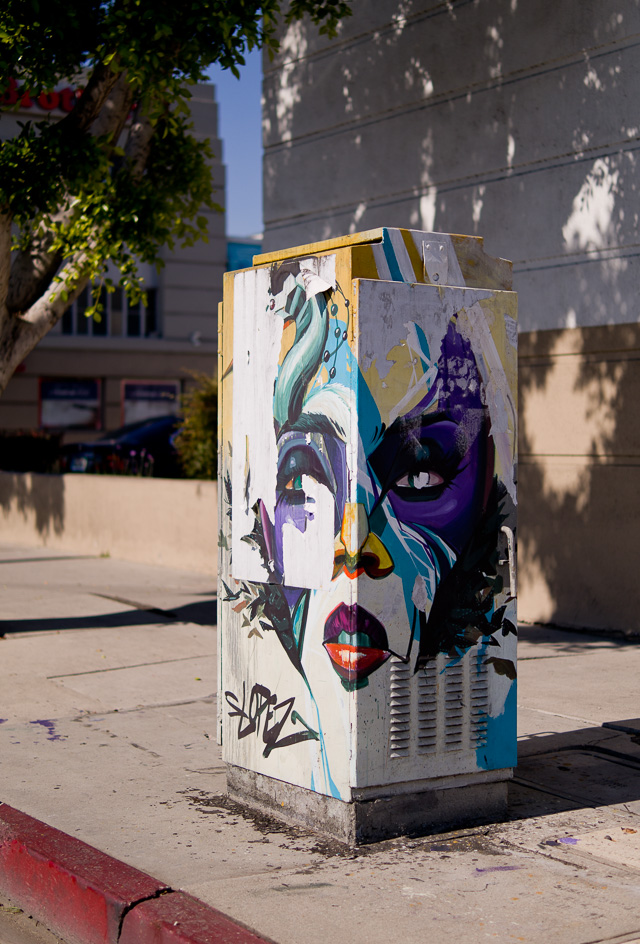
Three-dimensional = Having the three dimensions of height, width and depth. Melrose Avenue in Los Angeles. Leica TL2 with Leica 35mm Summilux-TL ASPH f/1.4. © 2017 Thorsten Overgaard.
Leica T is the compact camera developed by Leica Camera in 2014 as a touch-screen operated camera that can take the Leica L mount lenses made for this camera and the Leica SL and Leica CL. This camera series was names Leica TL later. See my article Compact Leica Cameras for more.
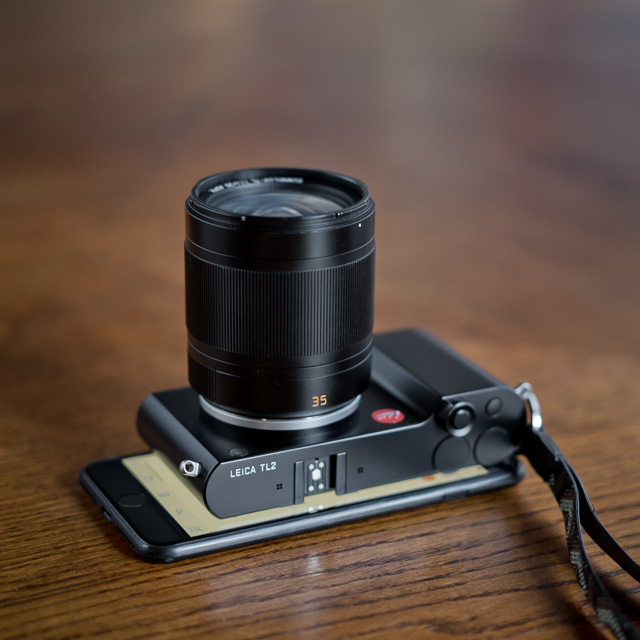
The Leica TL2 (2017) with a 35mm Summilux-L f/1.4 lens, compared with the Apple iPhone 7 Plus. © Thorsten Overgaard.
TTL
(T)hrough (T)he (L)ens light metering, usually WRT the flash metering capabilities built into the R6.2, R8, R9, M7 & M6TTL cameras.
V-Lux is a series of compact SLR-like digital cameras by Leica Camera AG developed with Panasonic since 2006, starting with the Leica V-Lux 1 (2006), V-Lux 2 (2010), V-Lux 3 (2011), V-Lux 4 (2012), V-Lux Typ 114 (2014), V-Lux 5 (2018). See my article "Compact Digital Leica Cameras".
To add confusion, Leica also made a Leica V-Lux 20 in 2010, V-Lux 30 in 2011 and a Leica V-Lux 40 in 2012 that was a temporarily renaming of the Leica C-Lux series.
Vario- is the Leica Camera AG name for zoom lenses. Vario-Elmarit, Vario-Elmar and Vario-Summicron and so on.
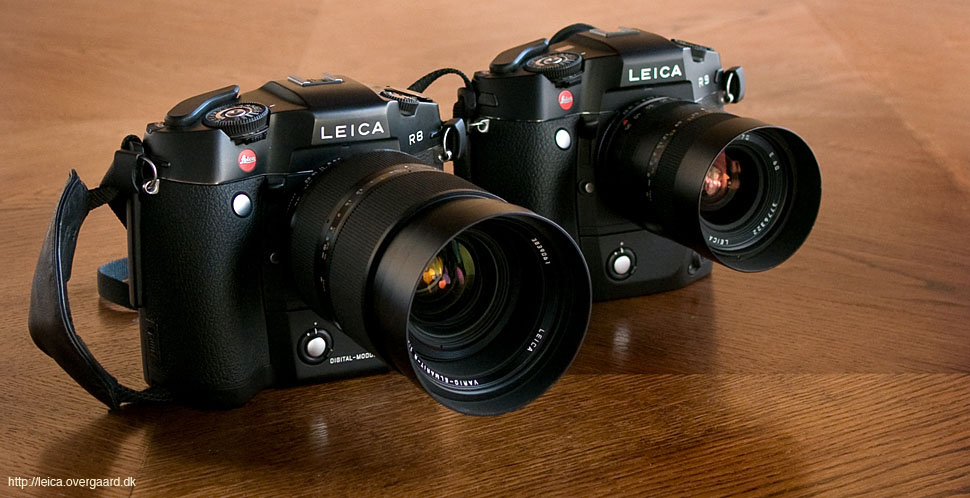
The Leica 35-70mm Vario-Elmarit-R f/2.8 ASPH (left) and the Leica 35-70mm Vario-Elmar-R ASPH f/4.0 (right)
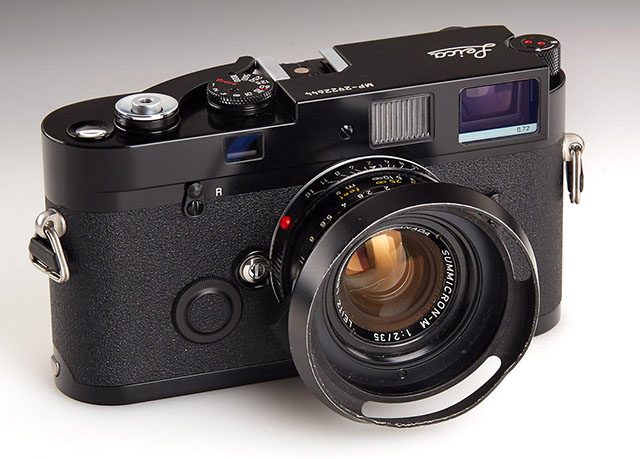
Ventilated shade on a 35mm of Elliott Erwitt's Leica MP camera.
Ventilated Shade - A shade is a hood in front of a lens that provides shade from light going straight onto the lens from outside what you are photographing, which could cause internal reflections like flare, which would make the picture less contrasty.
The ventilated shade has holes so it doesn't obstructs the view from the viewfinder. In many of today’s mirrorless cameras where there is no viewfinder looking ver the lens, so there is no actual need for a ventilated shade; but they are considered classic or vintage looking and are still in high demand. It makes no difference for the purpose of the shade (to create shadow) if it is ventilated or not.
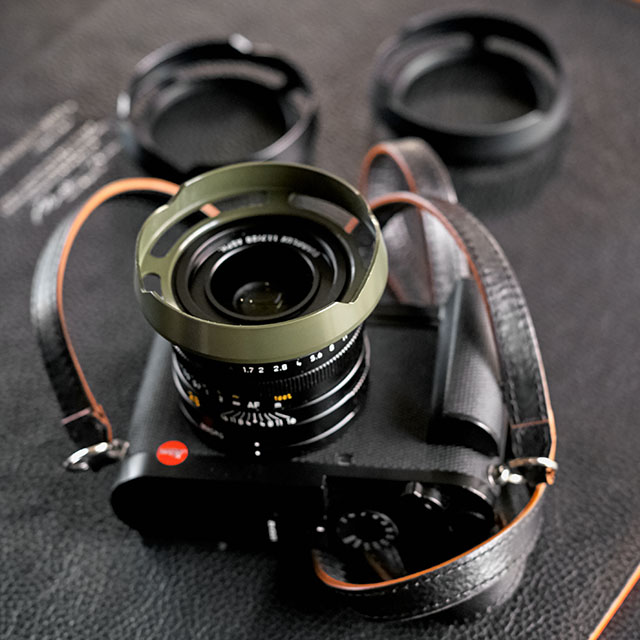
Ventilated Shade for the Leica Q. I make ventilated shades for most lenses and sell them from here.
Viewfinder a device on a camera showing the field of view of the lens. Also known as the German word "Messucher" (or Meßsucher).
1) A built-in viewfinder in a camera that simply show the frame you get when you look through the viewfinder.
2) A rangefinder viewfinder which is also used to focus the lens. In Leica M cameras two pictures has to meet and lay 'on top of each other' for the picture to be in focus.
3) An external viewfinder, usually on top of the camera in the flash shoe, so as to show the field of view of lenses vider than what the built-in viewfinder can show (15mm, 21mm, 24mm, 28mm etc viewfinders exist)
4) Very simple "aiming-devices" on top of a camera that is simply a metal frame without any optics. Just a frame, as for example very old cameras (the original Leica), or when using cameras in diving where you can't look through the camera.
5) A Electronic Viewfinder (EVF) that shows what the sensor sees "live".
WB = Short for White Balance:
White Balance = (often referred to as WB) in camera menus. See my aticle "Adjusting the White Balance in Photoraphy" for explanation, illustrations and examples.
WLAN = German short for WiFi. In camera menus, Leica may refer to WLAN, which is simply German for WiFi, (and for some reason they refuse to believe that the rest of the world doesn't call it for WLAN like they do). WLAN stands for wireless local area network.
X1 - The Leica X1 was released in September 2009, the Leica X2 in 2012, and Leica X Typ 113 was released in September 2014, all with a fixed 23mm f/1.7 lens. Leica X Vario Typ 107 and Leica X-E Typ 102 was released later. A Leica X-U underwater edition was released in 2026. See my article Compact Leica Cameras for more.
XML = Stands for extensible markup language, which is a way enclose information to a document about how to format it, and more.
XMP = Stands for extensible markup platform (also known as XMP sidecar) and is a standard developed by Adobe and standardized by the International Organization for Standardization ISO. XMP is a 'sidecar' to an image that contains the EXIF data (camera settings) as well as other data about the image recording and editing that would norally be in proprietary formats (only readable by certain software). XMP in short is a container enclosed with the image as a 'sidecar' that contains all available information (EXIF data about settings, IPTC data (who took the photo, copyright info, image captions, etc), but most noteable, the XMP allow you to include information about the editing that was performed to the raw or DNG file, so that when you open the image file in another editing software, the raw data, as well as information about the crop, exposure compensation and other editing you did to the photo, is included).
In Adobe Lightroom Classic, one should make sure to select that editing information is written to the XMP file of each image (go to Lightroom > Catalog Settings > Metadata and then click "Automatically write changes into XMP").
Zone System -A system of 11 greytones. Ansel Adams worked out the Zone System in the 1940's with Fred Archer. It may look as simply a grey scale (and it is) but it's the use that has troubled many. If you use a normal external light meter, it will give you the exact amount of light and you can expose your photograph based on that and it will be correct. 
What Ansel Adams basically did was that he studied (by measuring with a spot meter), what the exact grey tones were of the sky, the clouds, the sand, the water, the skin and so on at different times of the day.
You could say that he built up a conceptual understanding of how different materials of different colors and reflective surface would look in black and white at different times of day (or different light conditions). He also realized that a tone changes for the human eye depending on it's size and in which context of other tones it is seen.
In short, you could say that the Zone System is know how something would look in black and white when looking at a scenery. Some who have struggled with the Zone System have done so because they think it is a rule. It is not.
| How Ansel Adams made New Mexico look: |
|
How most people see New Mexico: |
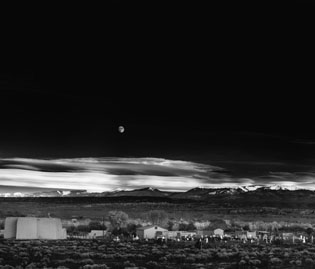 |
|
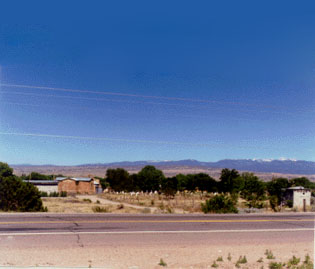 |
| The artistic use of the Zone System. |
Ansel Adams developed the Zone System to understand light for himself, but also as a fundament for teaching the light, exposure and making the final photograph. How will it look if you do the usual, and what will it look like if you manipulate it. But most interstingly; how do you work with light, cameras and photographic materials to achieve the look you envision.
The Zone System is meant as a basis on which to create your own aesthetic style and communication. Photography is painting with light. The greyscale is our palette. Ideally we should have a conceptual understanding of the tones and be able to use them intuitive. That was his vision for us all.

Thorsten Overgaard in New York, explaining the Zone System in his "Street Photography Masterclass".
Ø - Diameter. As in Ø49 for example which means that the filter diameter is 49mm for this lens (or if a filter is Ø49, it is 49mm in diameter and fits that Ø49 lens). Leica uses E to express their filters sizes, as in E49 for a 49mm filter size.
Index of Thorsten Overgaard's user review pages on Leica M9, Leica M9-P, Leica M-E, Leica M9 Monochrom, Leica M10, Leica M10-P, Leica M10-D, Leica M10-R, Leica M10 Monohcrom, Leica M11, Leica M11-D, Leica M 240, Leica M-D 262, Leica M Monochrom 246, Leica SL, Leica SL2, Leica SL2-S, Leica SL3, Leica SL3-S as well as Leica TL2, Leica CL, Leica Q, Leica Q2, Leica Q2 Monochrom, Leica Q3 and Leica Q3 43:
|
![]()
